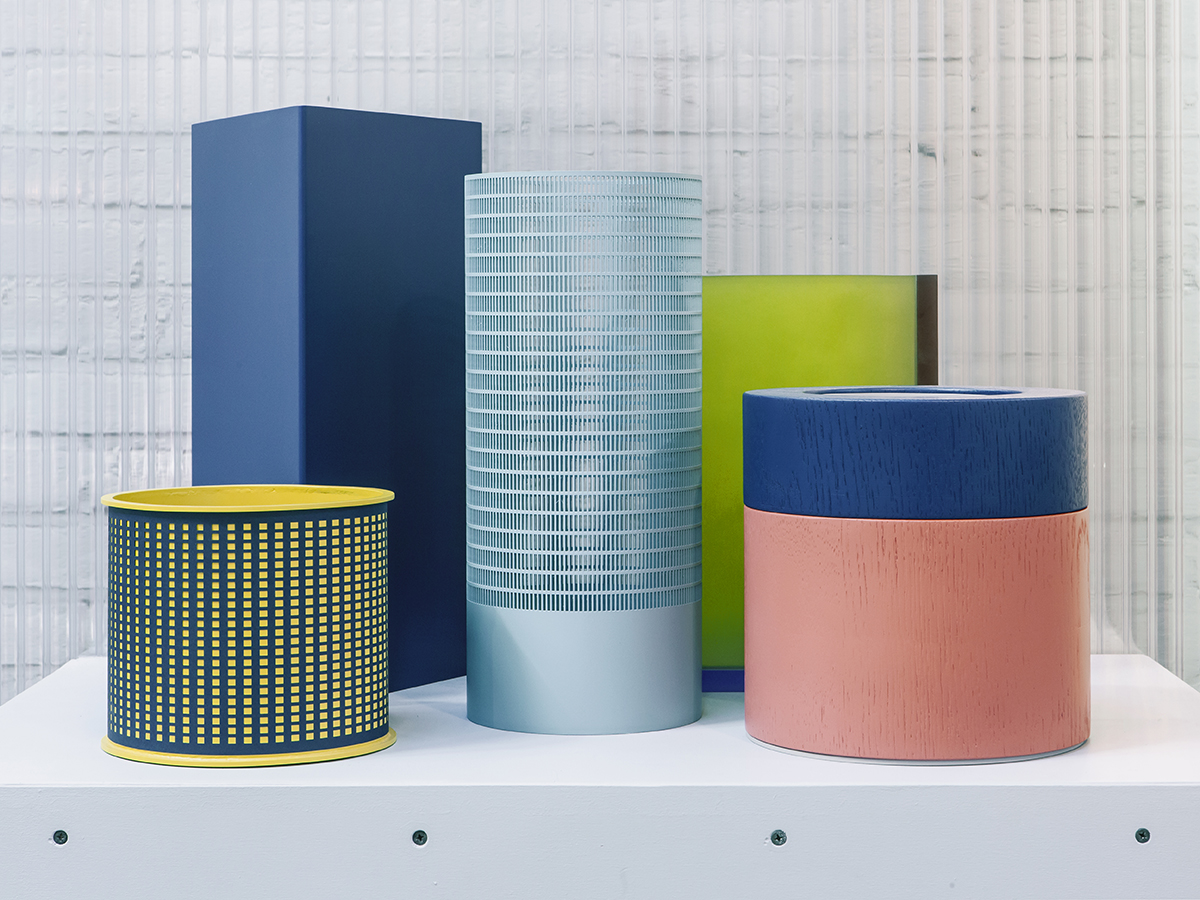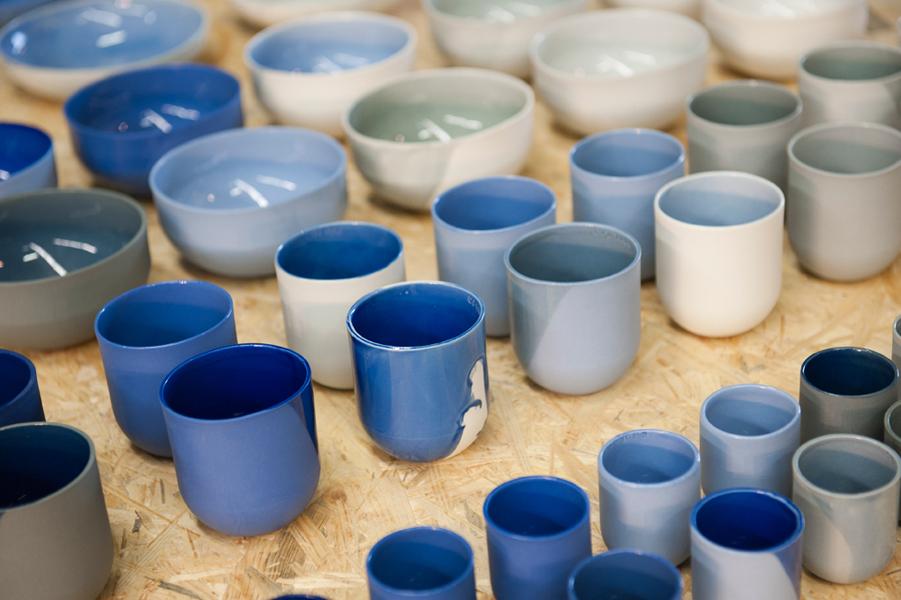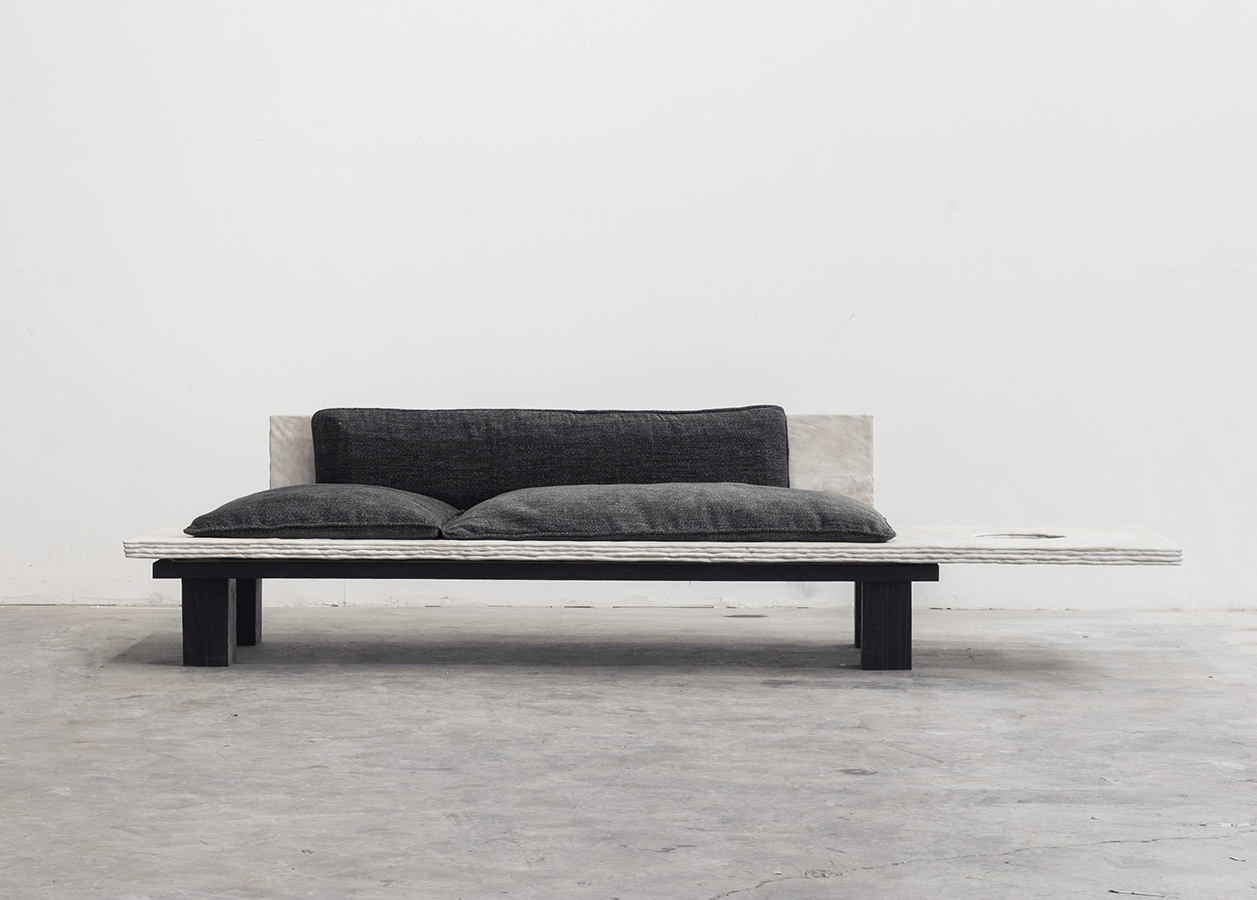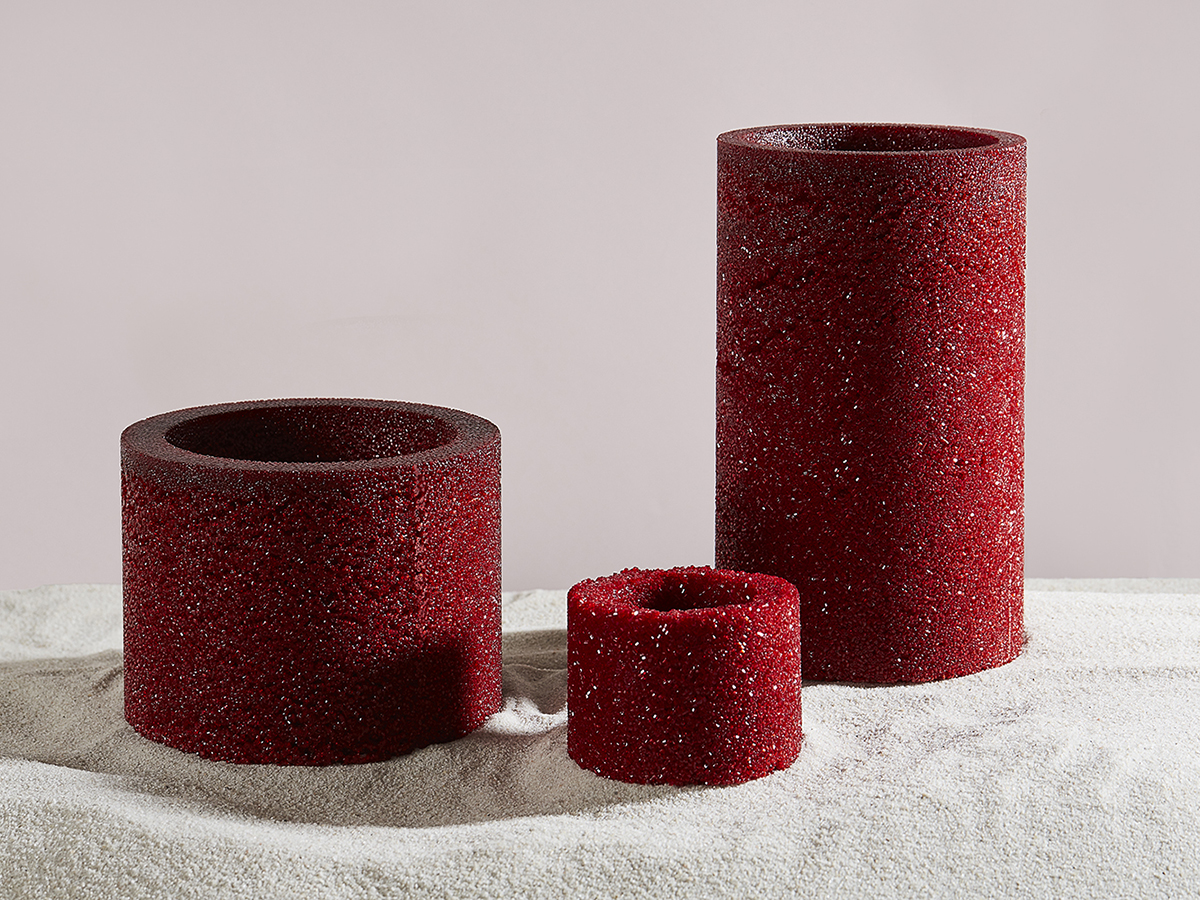
10.29.19
Fair Report
30 Projects We Loved from Dutch Design Week 2019
Dutch Design Week has always been the most thoughtful of design fairs, so it makes sense that in this especially troubling year of our Earth, the theme would be so keenly stated: “If not now, then when?” The theme echoed a feeling of urgency that’s being felt across much of design education and industry — a need for a shake-up, of systems of production and consumption, of established hierarchies and assumptions. It was clear from many of the works on show that the focus of the designer is shifting; no longer is good aesthetic judgment and a well-designed clever product the aspiration. Ego and vision are going out of style, to be replaced by attempts to understand the inter-connected system in which design sits.
The challenge for many designers is to combine their aesthetic sensibility with these more complex investigations and proposals. Objects here were not only designed using responsible materials, but with their disassembly and afterlife in mind, and with an in-depth understanding of their wider implications. Conversely, and sometimes jarringly, we saw spaces and products designed to inspire feelings of escape, connection, and joy — moments of relief amidst the serious undertone across the fair.
Making work at the intersection of these areas is perhaps where most success was found. Future design icons made from recycled synthetics, repurposed waste, and biomaterials that were actually designed to one day disappear. Here are a few of our favorites.
Sára Matysová
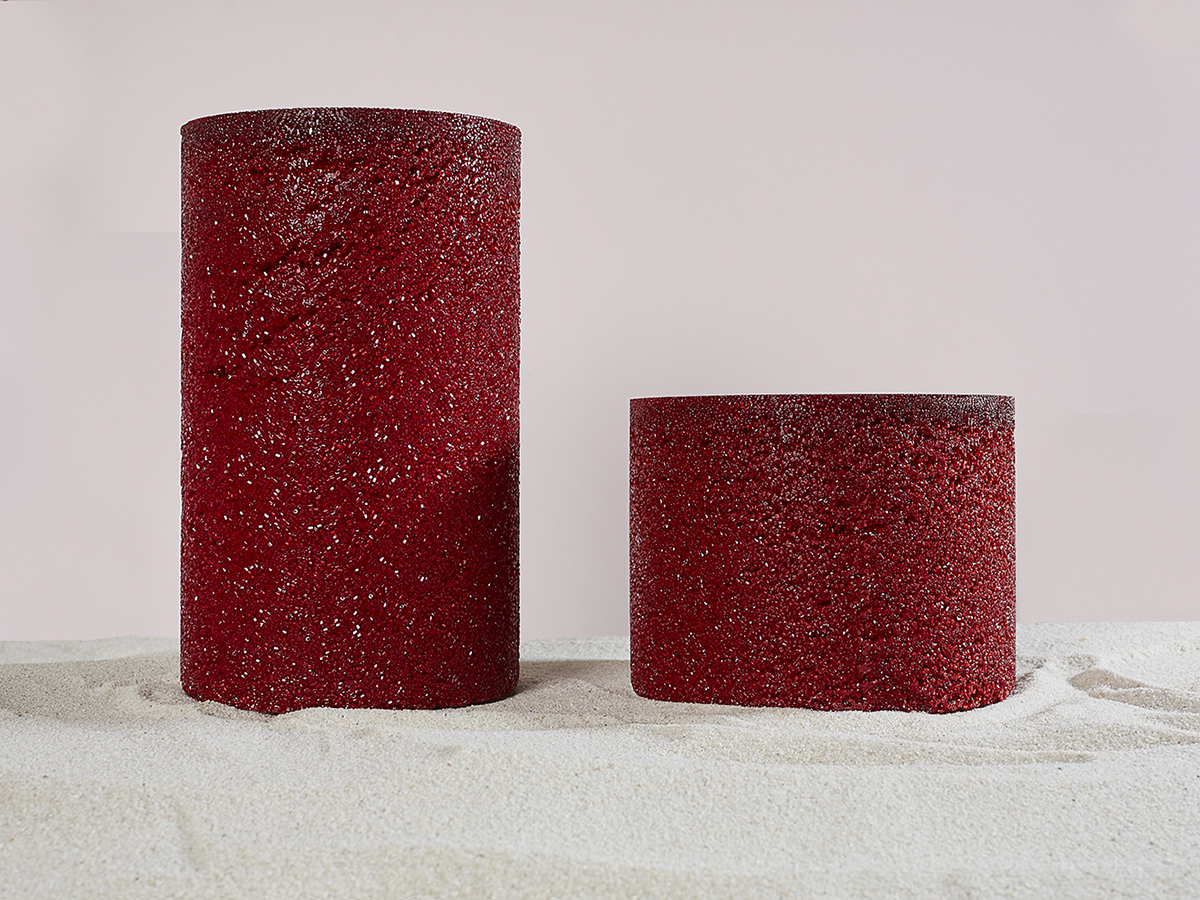
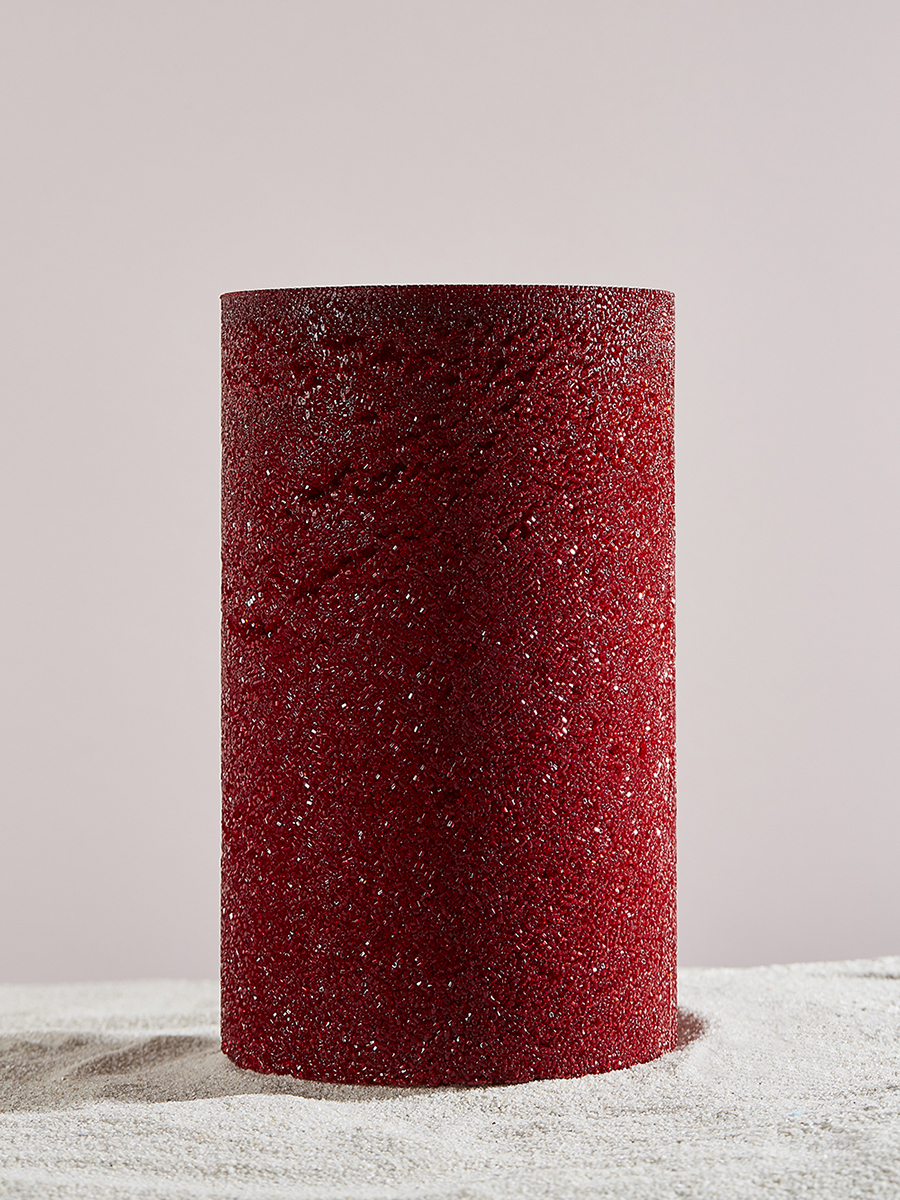
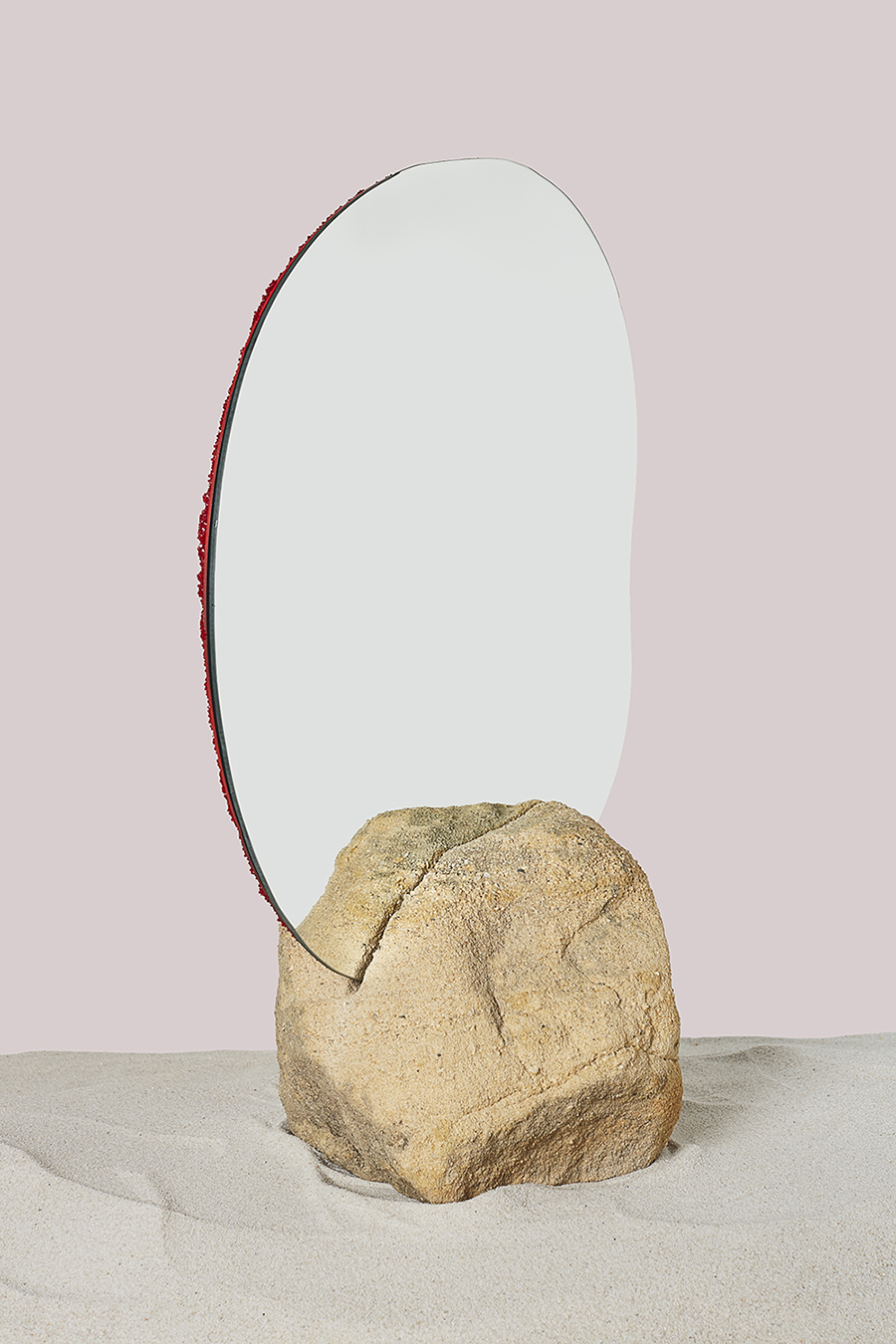
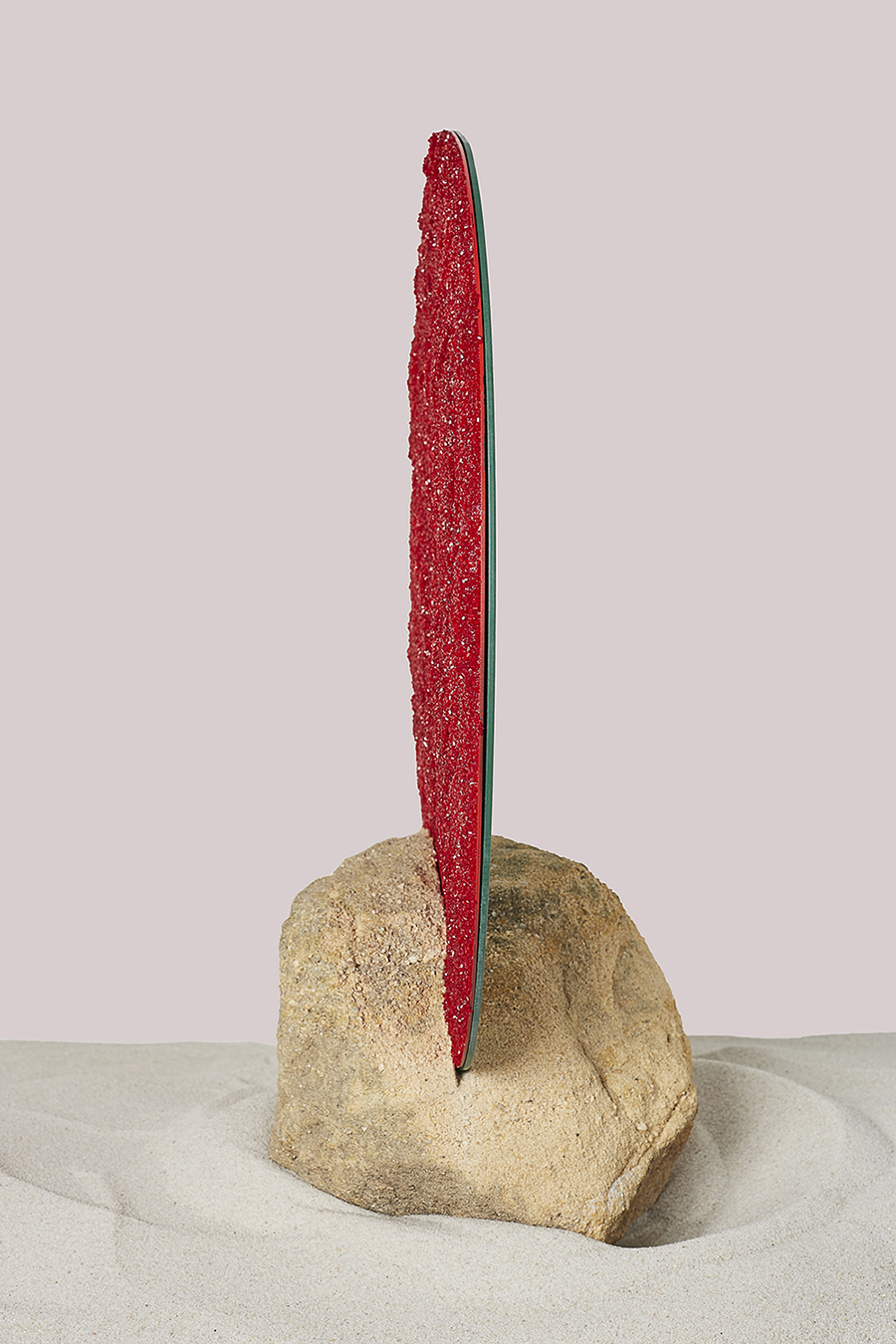
Design student Sára Matysová developed a process whereby currently unusable production waste from the Czech Republic glass manufacturer Preciosa can be sintered and made into mirrors and cylindrical vessels.
Elle Decoration Presents Fluid Forces
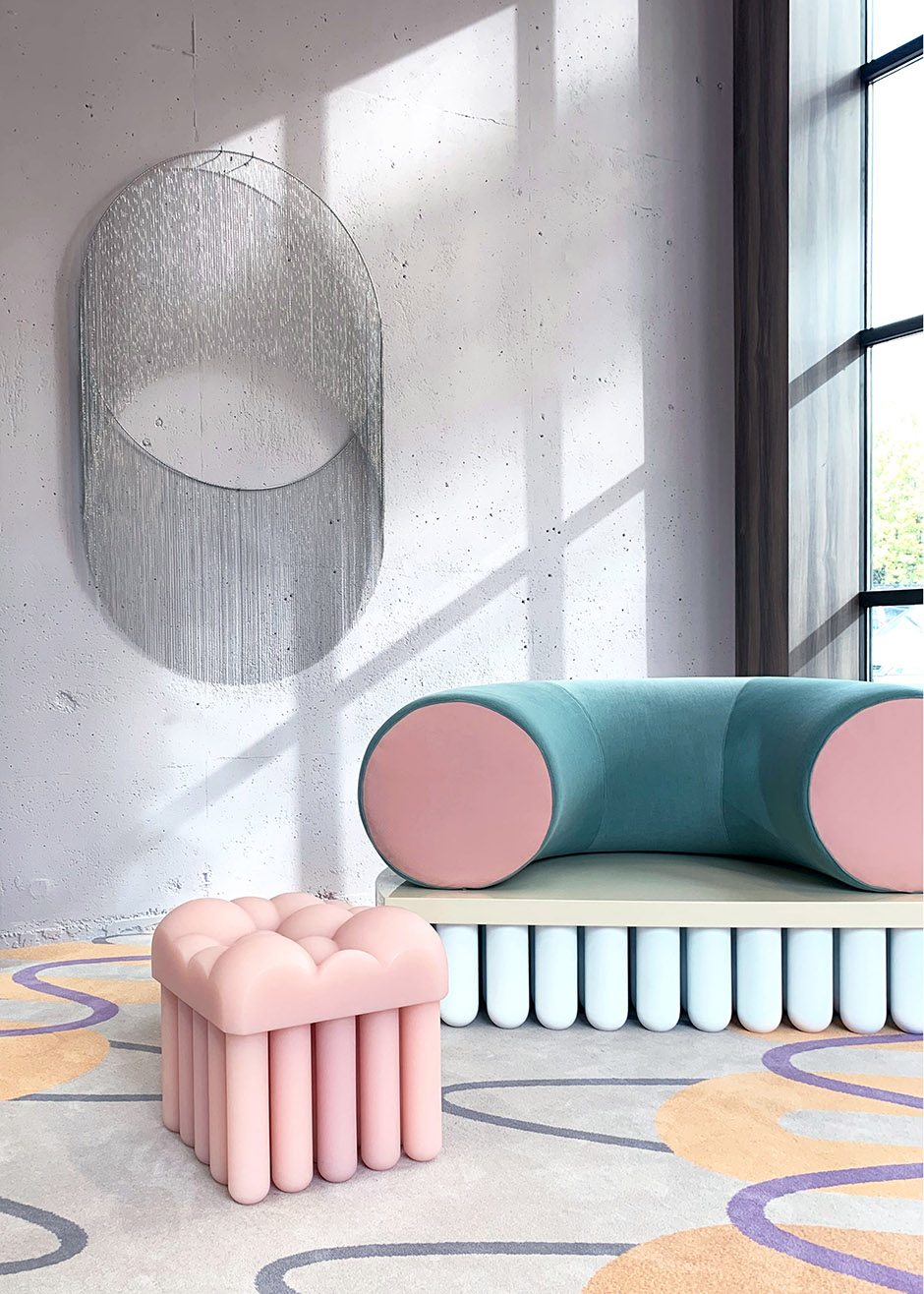
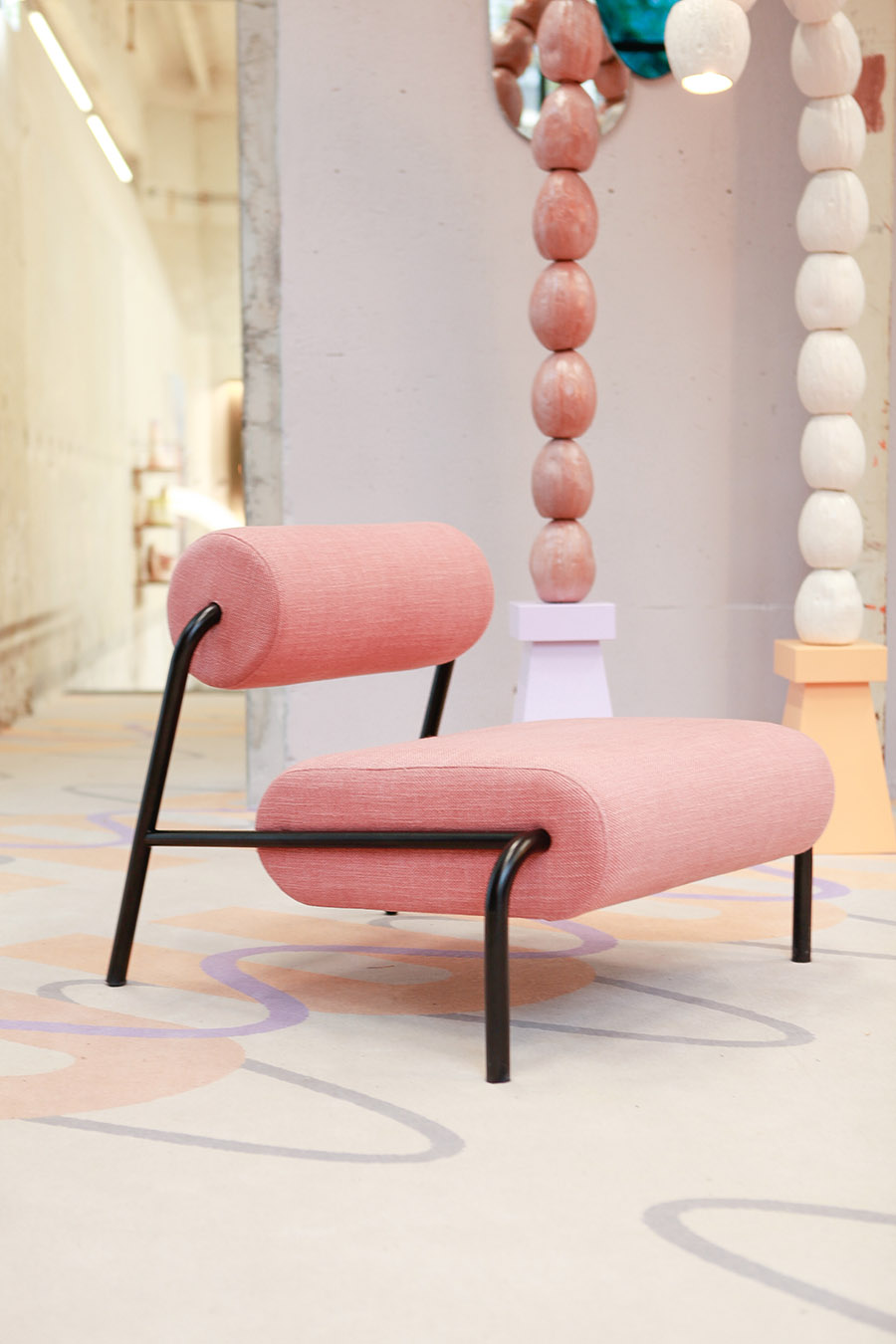
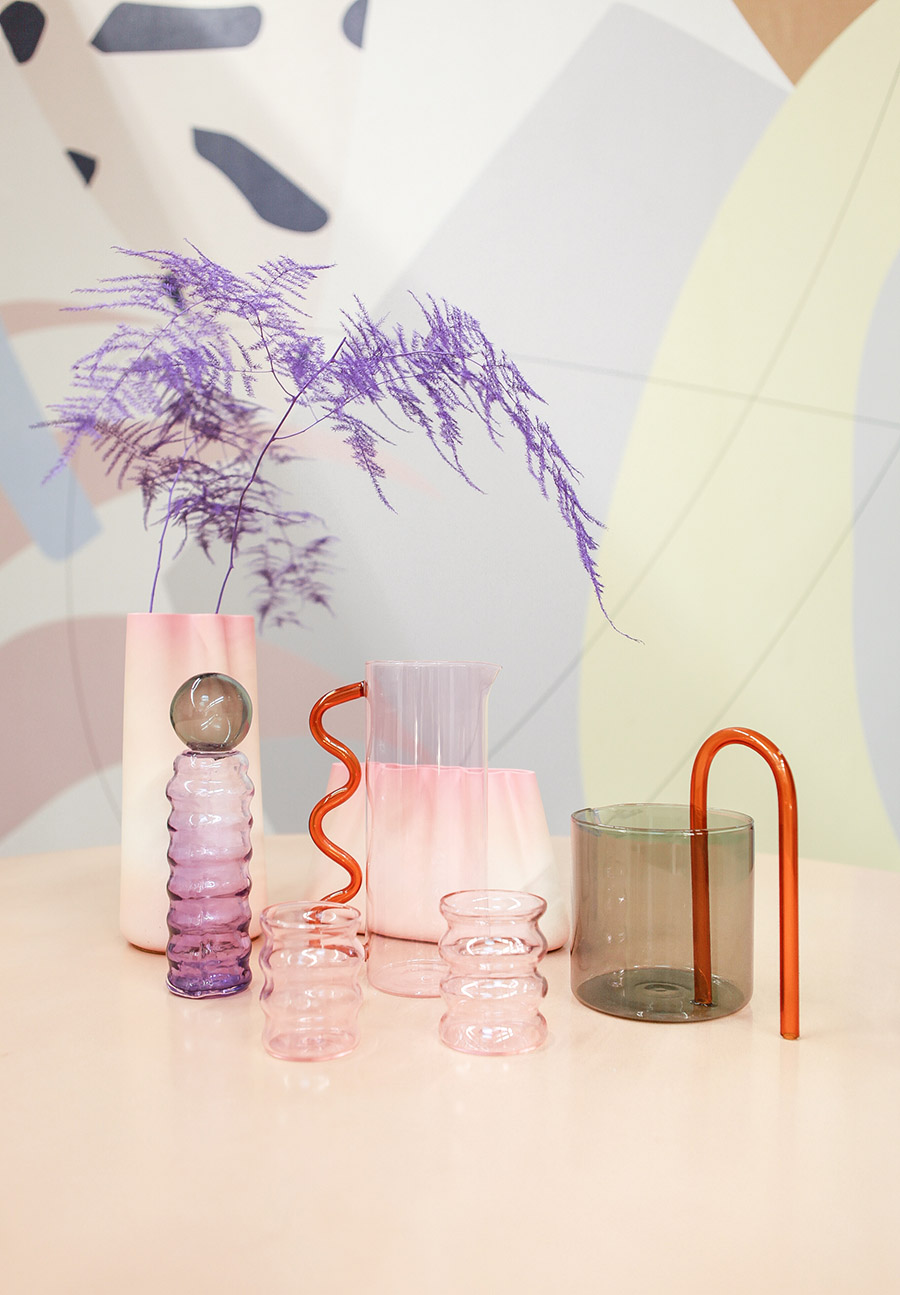
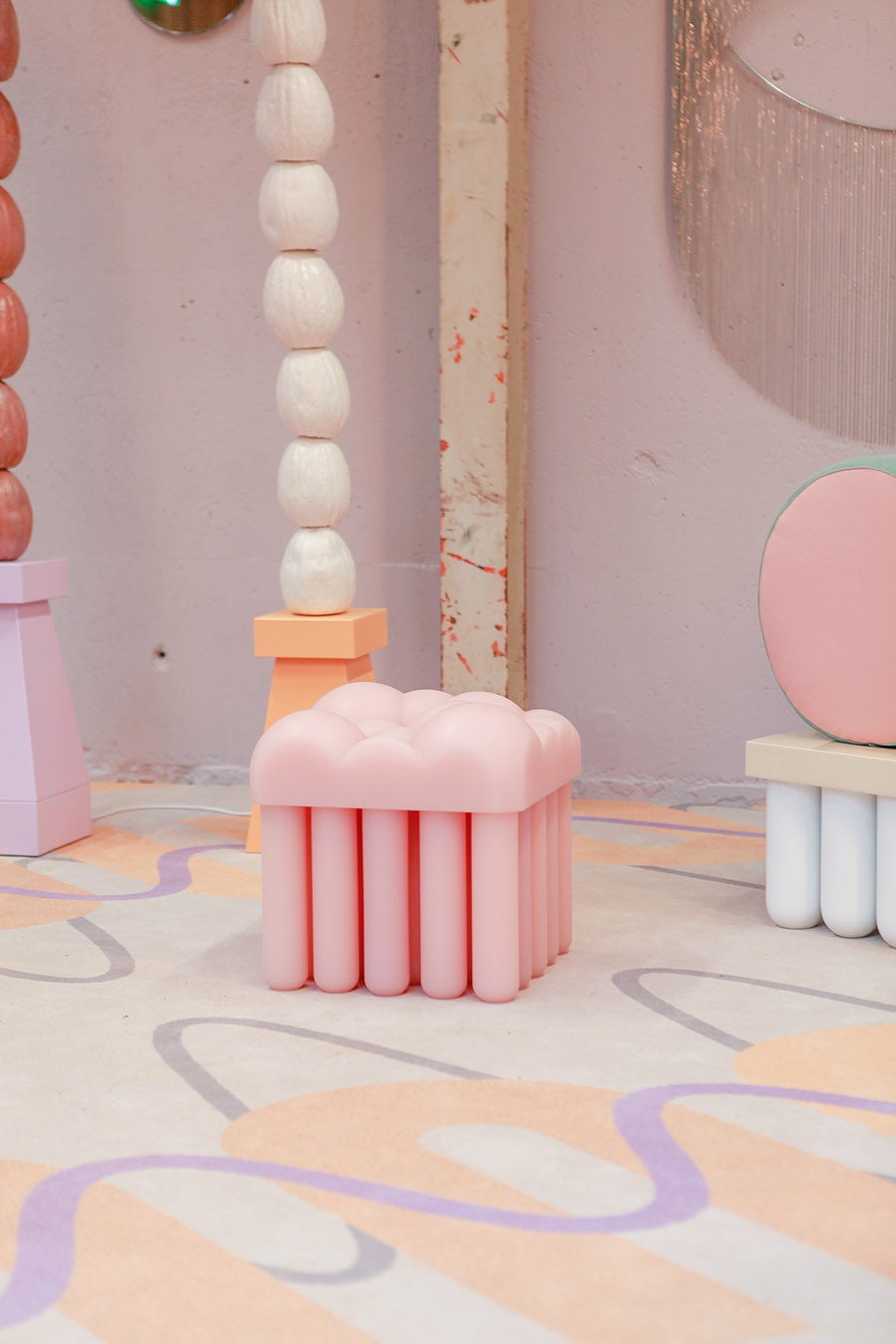
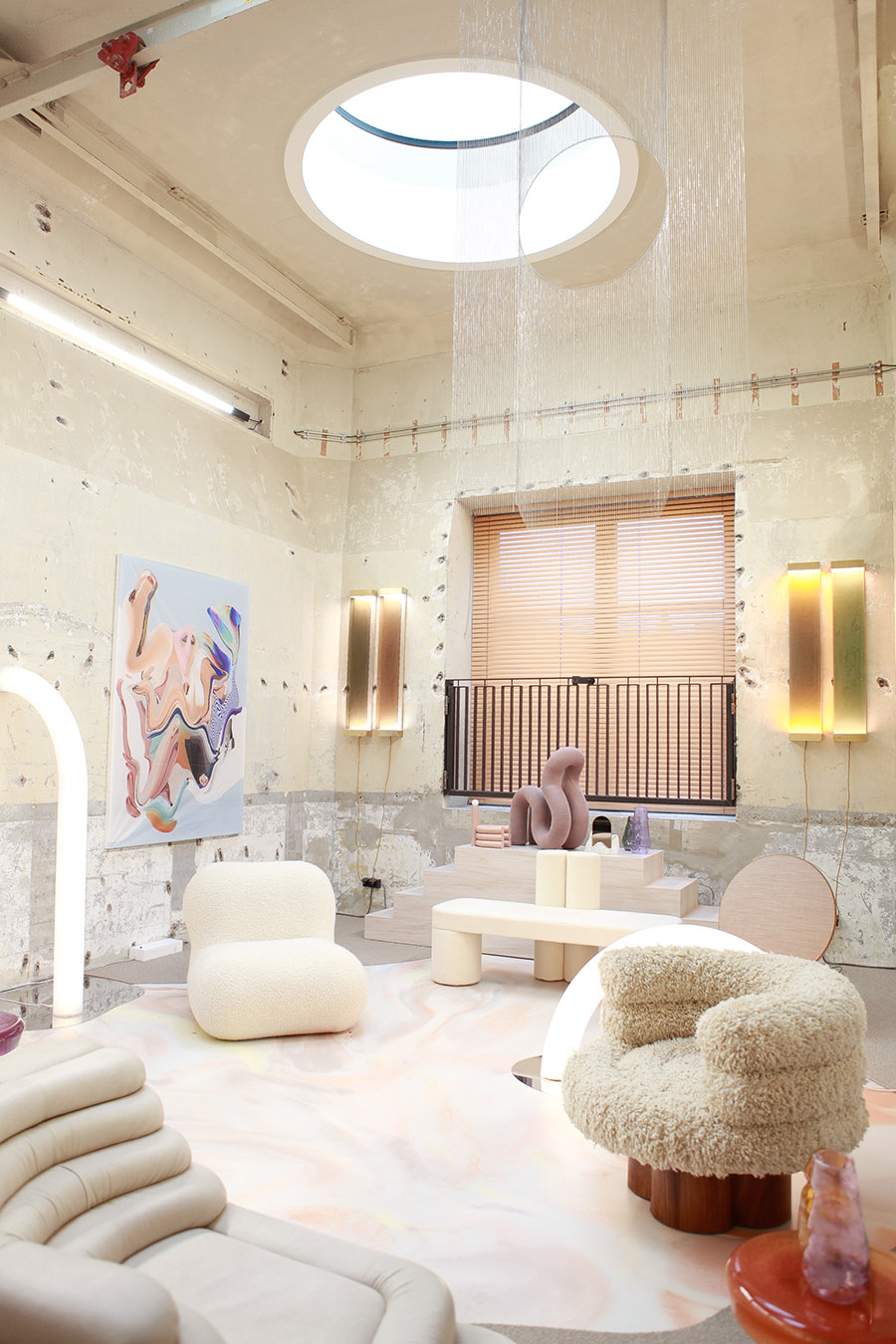
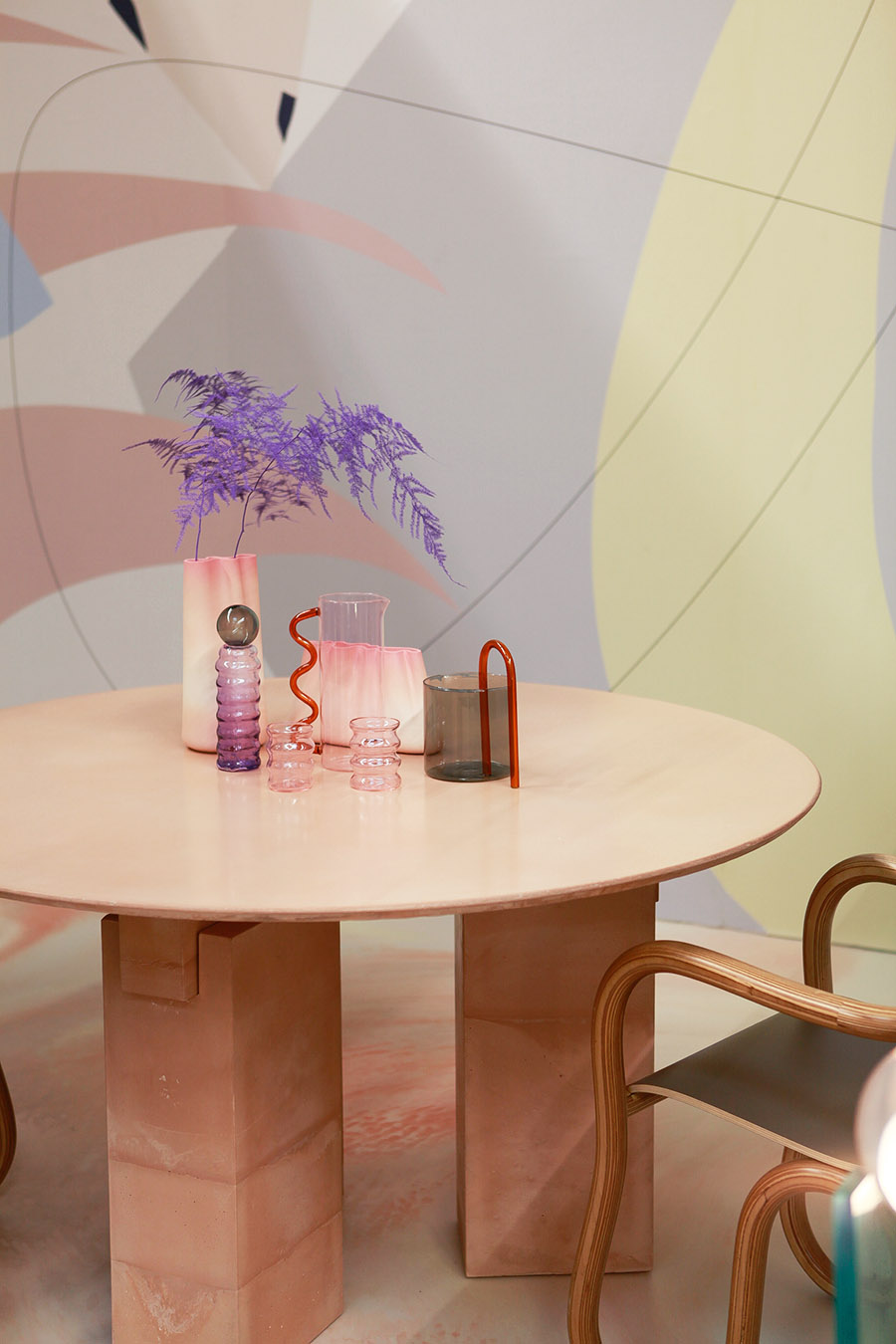
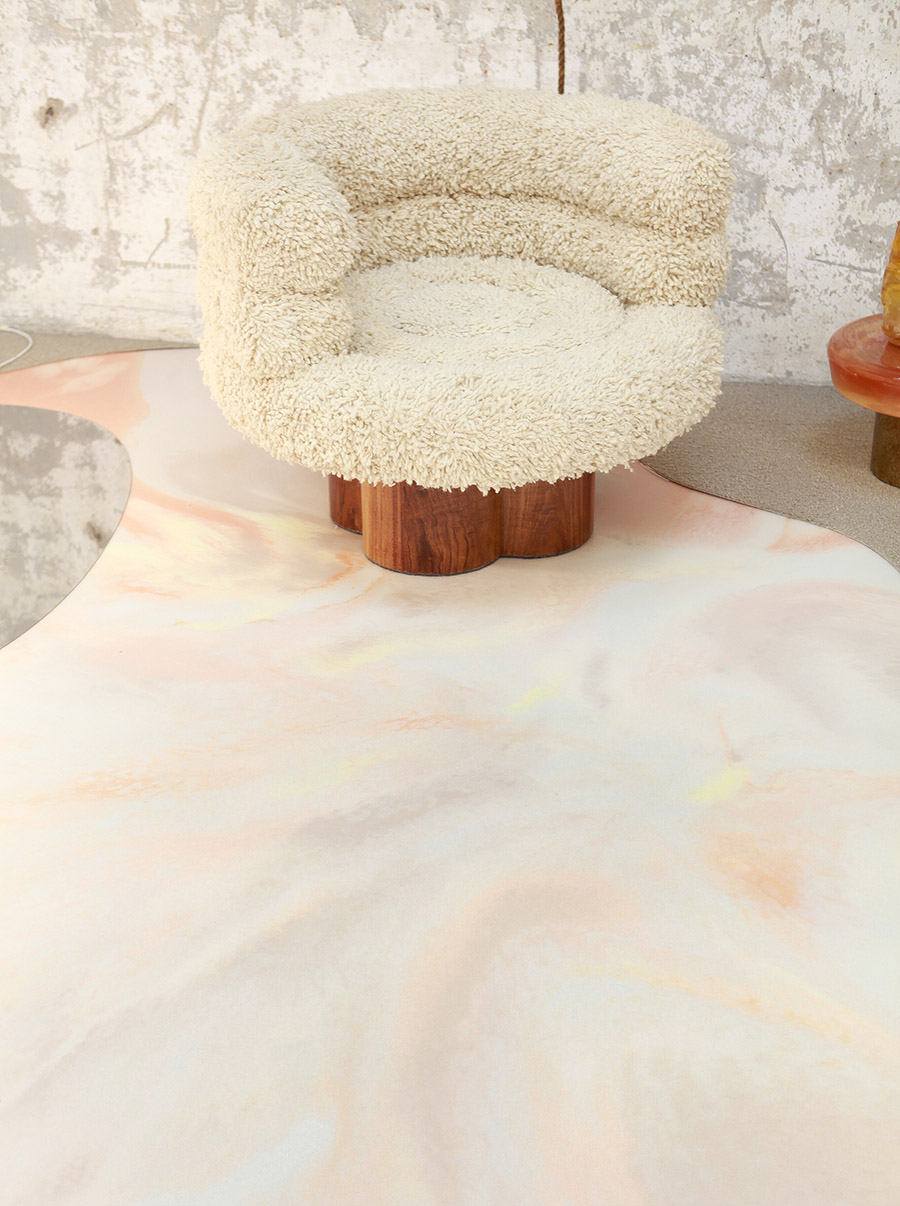
In collaboration with Tarkett, Elle Décoration worked with curator Monique van der Reijden of Trend Compass to bring together works from across Europe, the US and Central America. Three immersive spaces expressed three themes around the workplace: Concentrate, Co-Create and Celebrate. Rounded forms and tactile surfaces from the likes of Agnes Studio, Supertoys Supertoys, Sophie Lou Jacobsen, Objects of Common Interest, REM Atelier, Verner Panton and more made happy companions with more geometric accessories. The Co-Create space was drawn together with a permanent cloud-like poured resin floor in peachy and sherbet yellow tones by Veerle Nanna and DRT Gietvloreren, and a wallcovering by Alex Proba in collaboration with Wallpaper Projects. Photographer: Puck Veen
Supertoys Supertoys
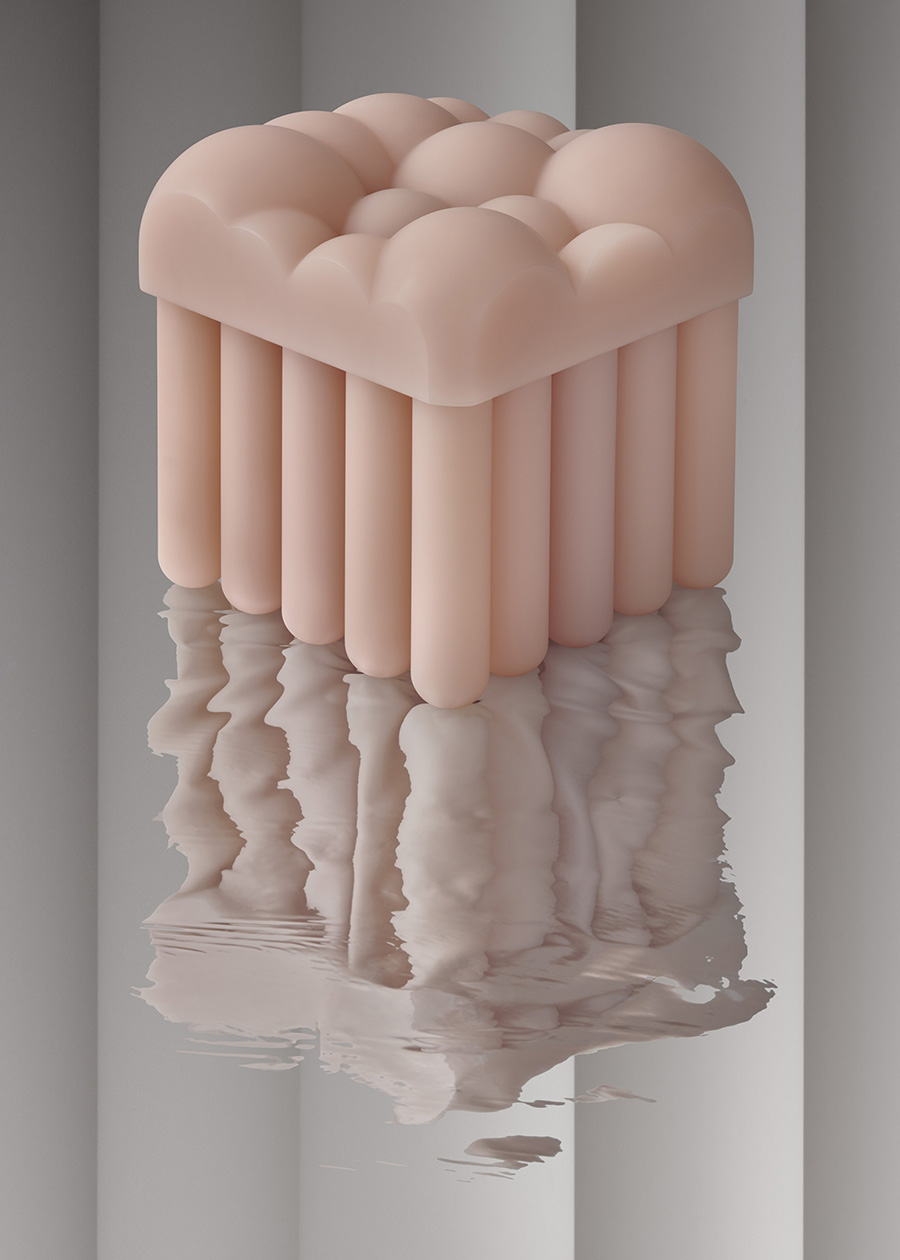
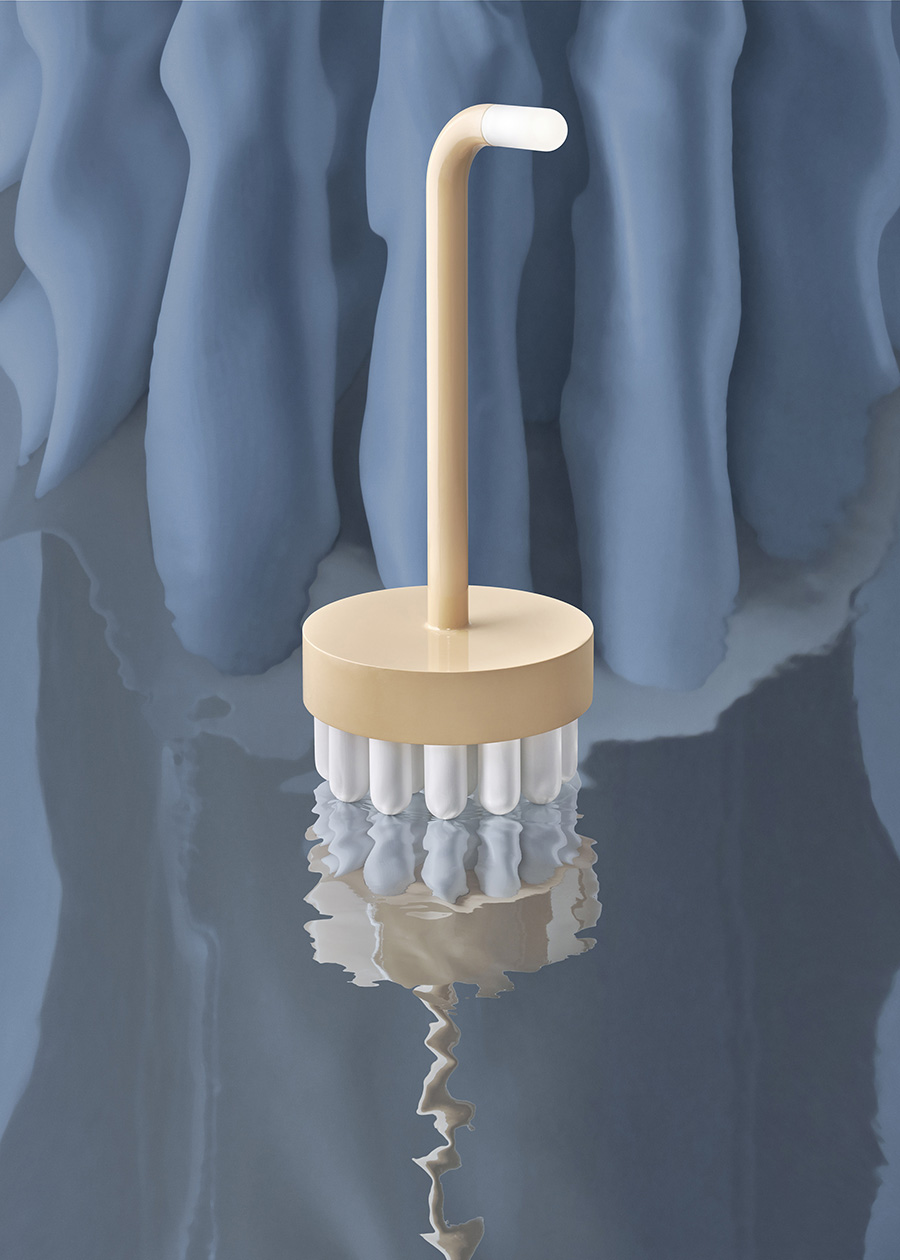
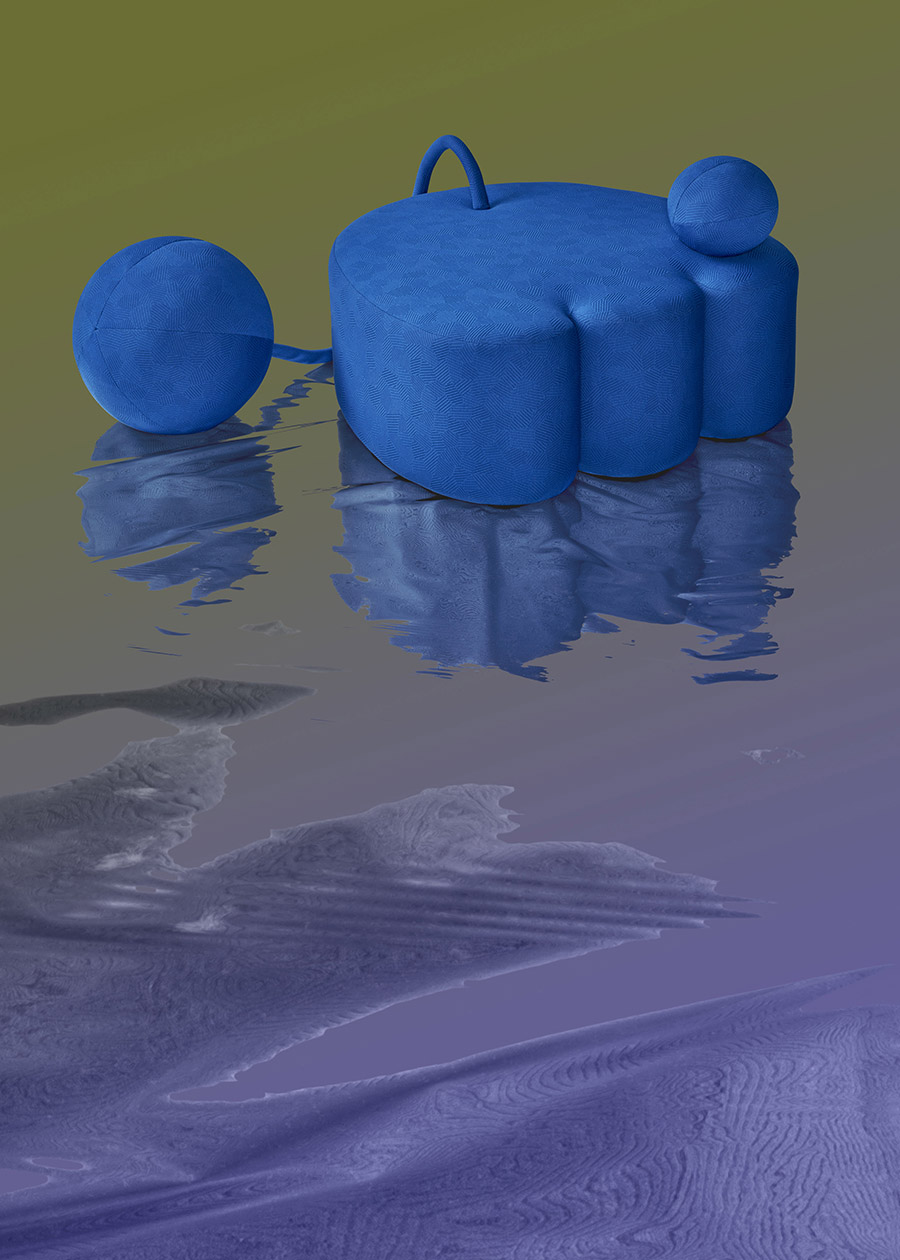
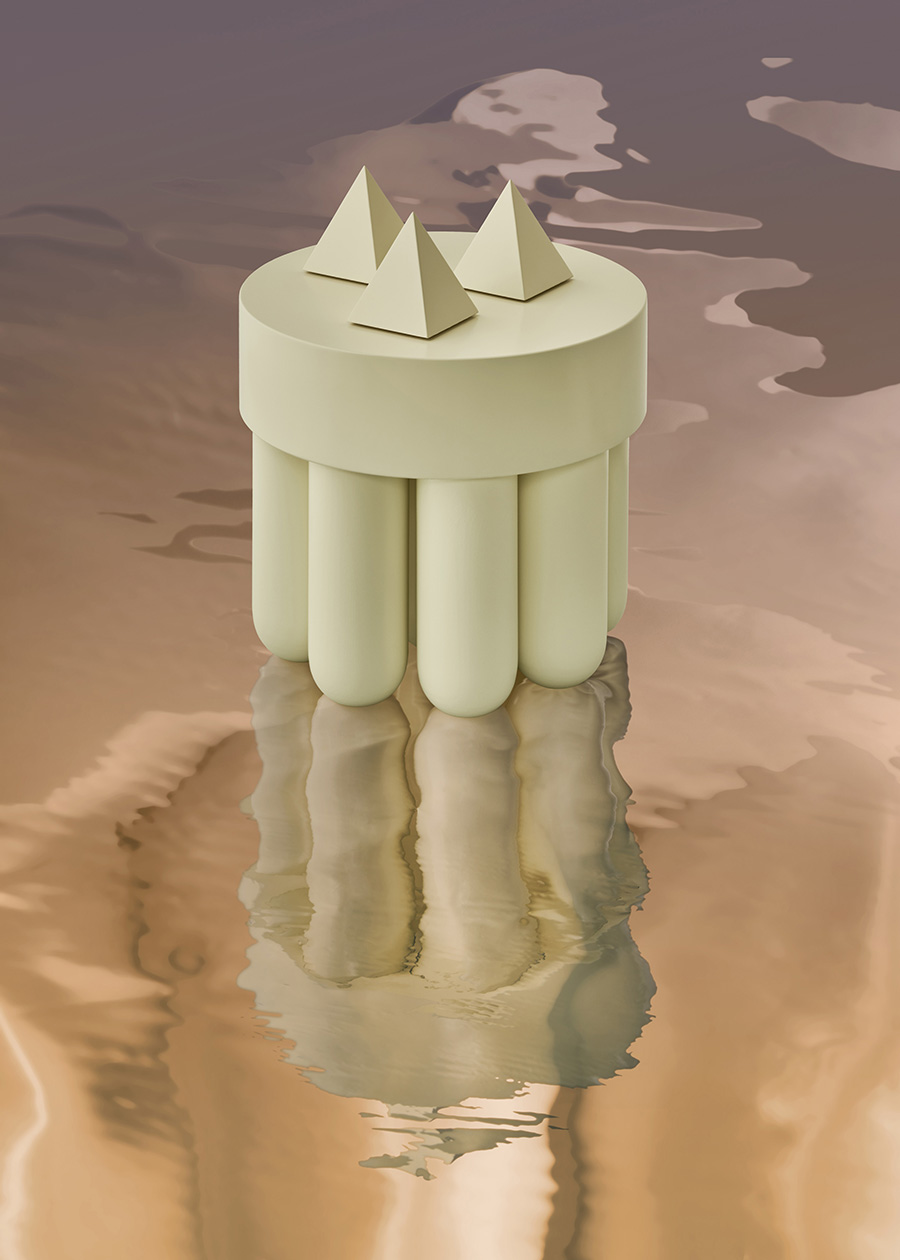
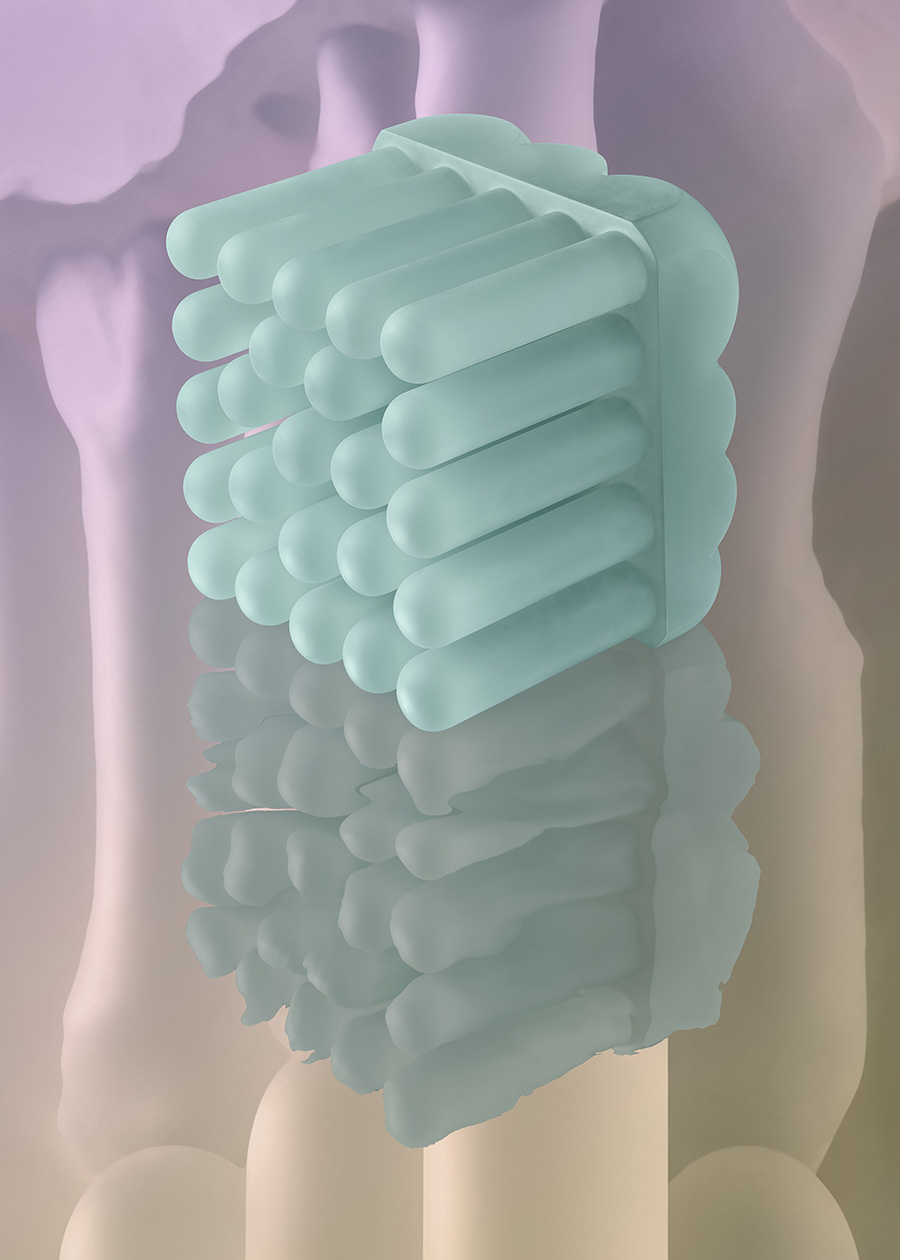
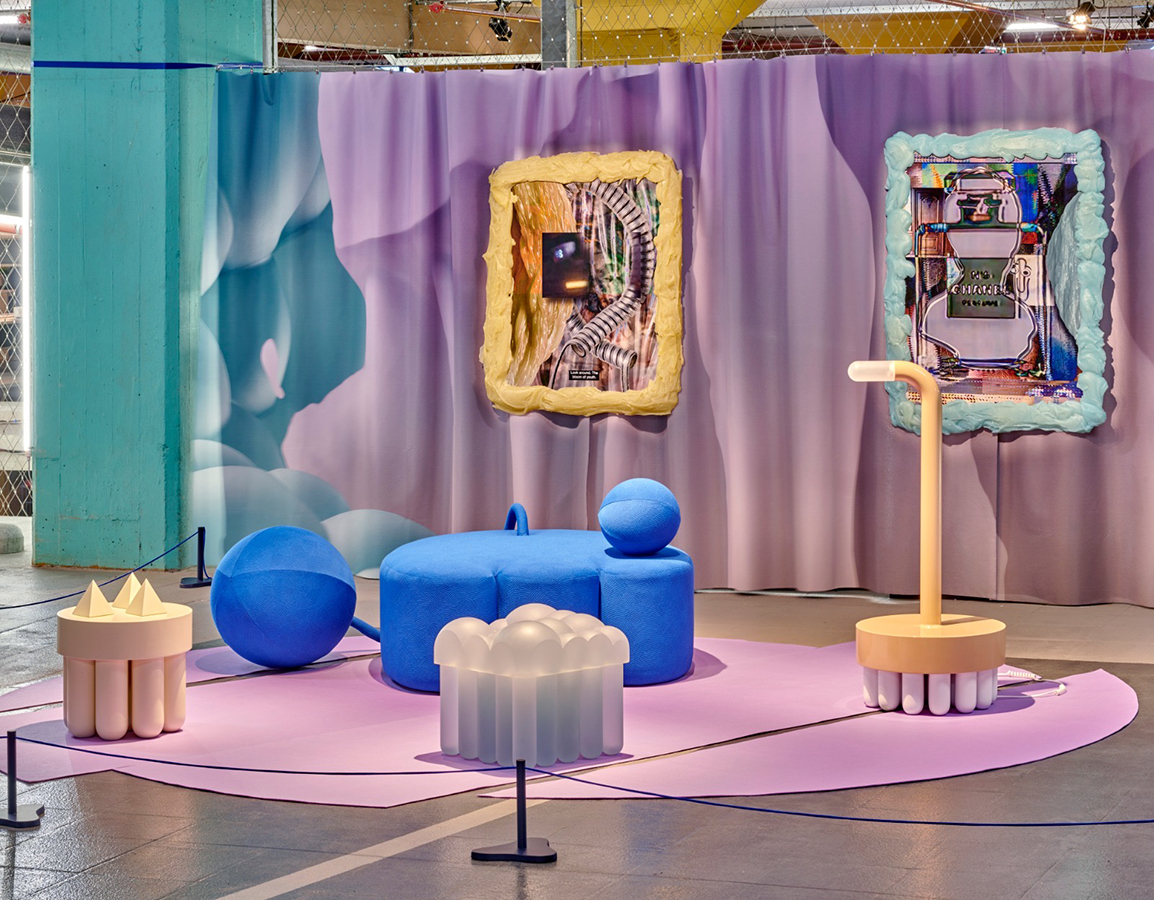
Inspired by animism — where all things, living or non-living, have a spiritual essence — designers Merle Flügge and Job Mouwen of Supertoys Supertoys showed furniture that aims to evoke deeper connections between people and their surroundings. The designers start the design process imaging what features — form, color, texture etc. — they would prefer if they were the object itself. Studio Pim Top transposed the forms into fantastical digital worlds to further express the fluidity and relevance of the objects in different spaces. Photography: Pim Top (apart from Elle deco image)
Juliette Berthonneau
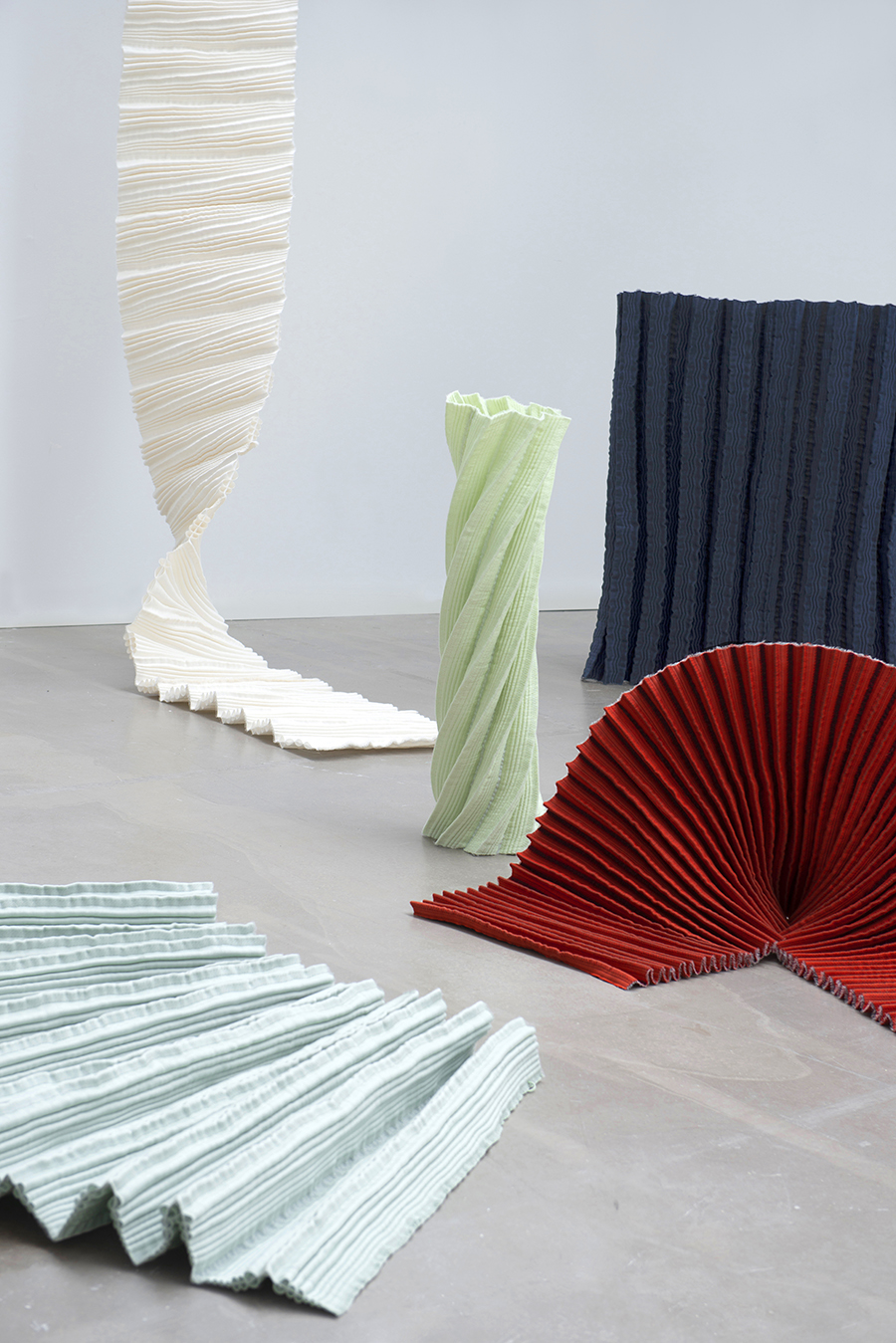
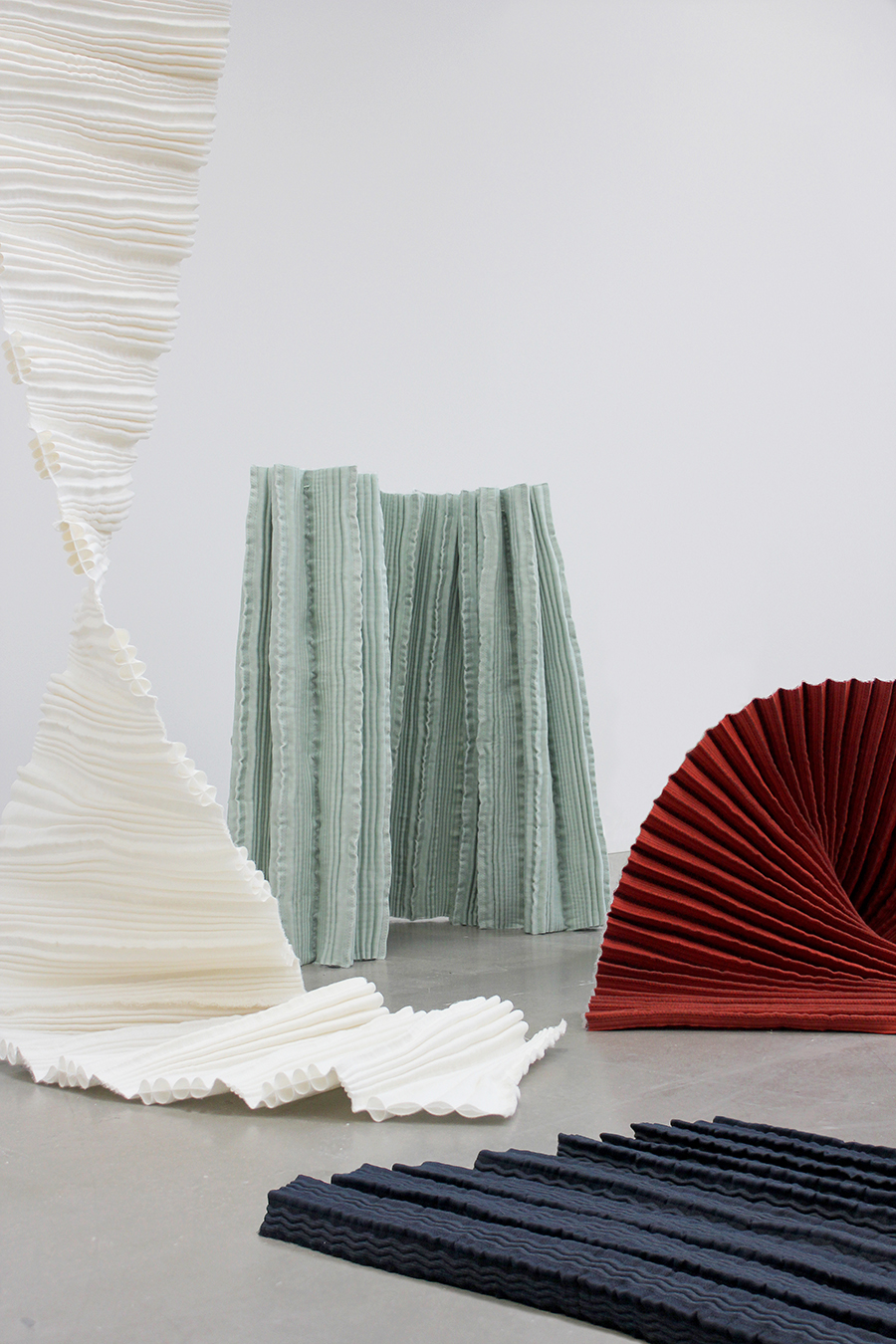

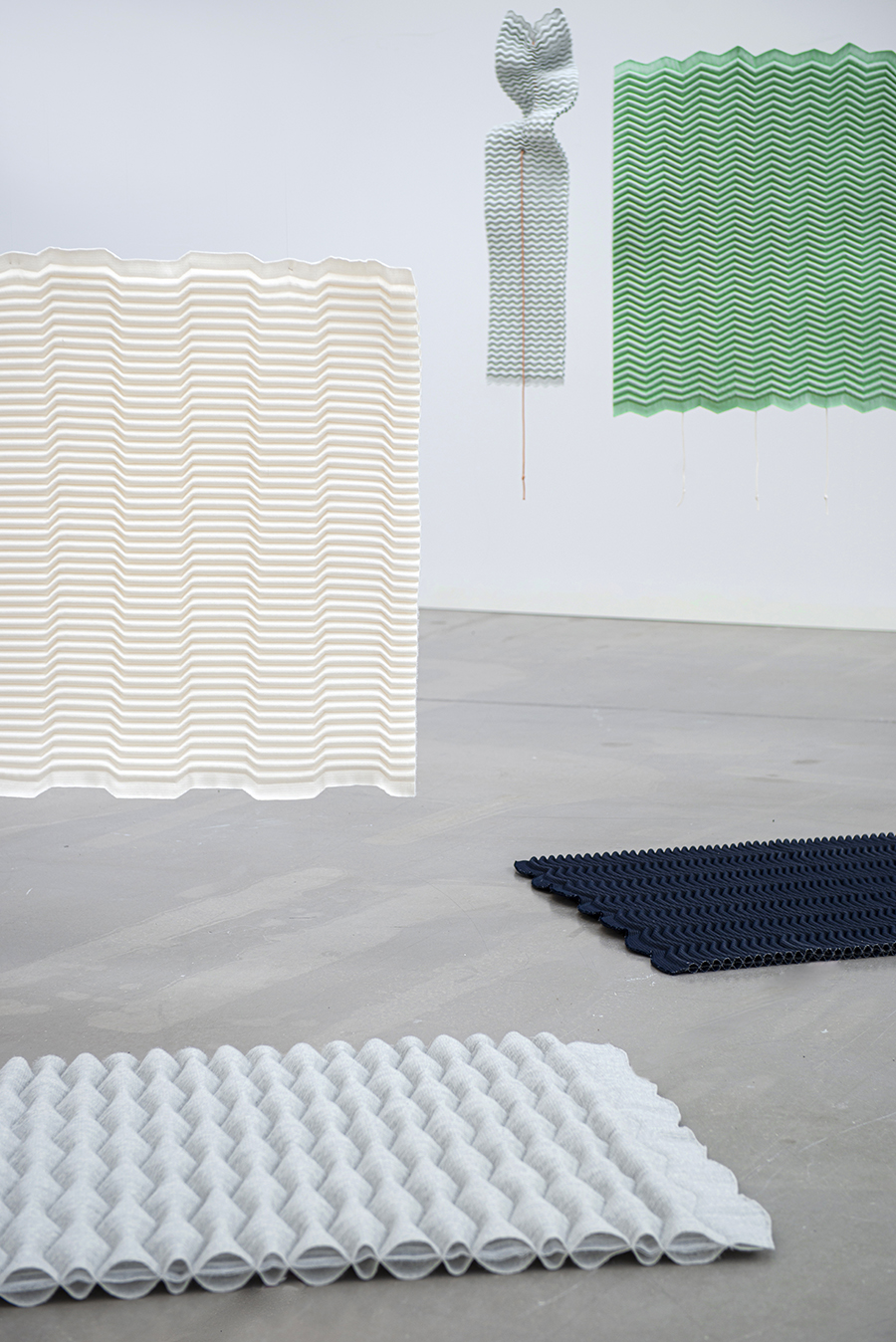
Through studying how pattern and yarn can influence structure using a jacquard loom, Juliette Berthonneau has developed a series of dynamic spacer textiles. Potential applications include sound-absorbing features for interiors and new upholstery fabrics that have built-in cushioning. In some cases the experimental structures are self-supporting, opening up new sculptural applications for the medium.
Futuremore
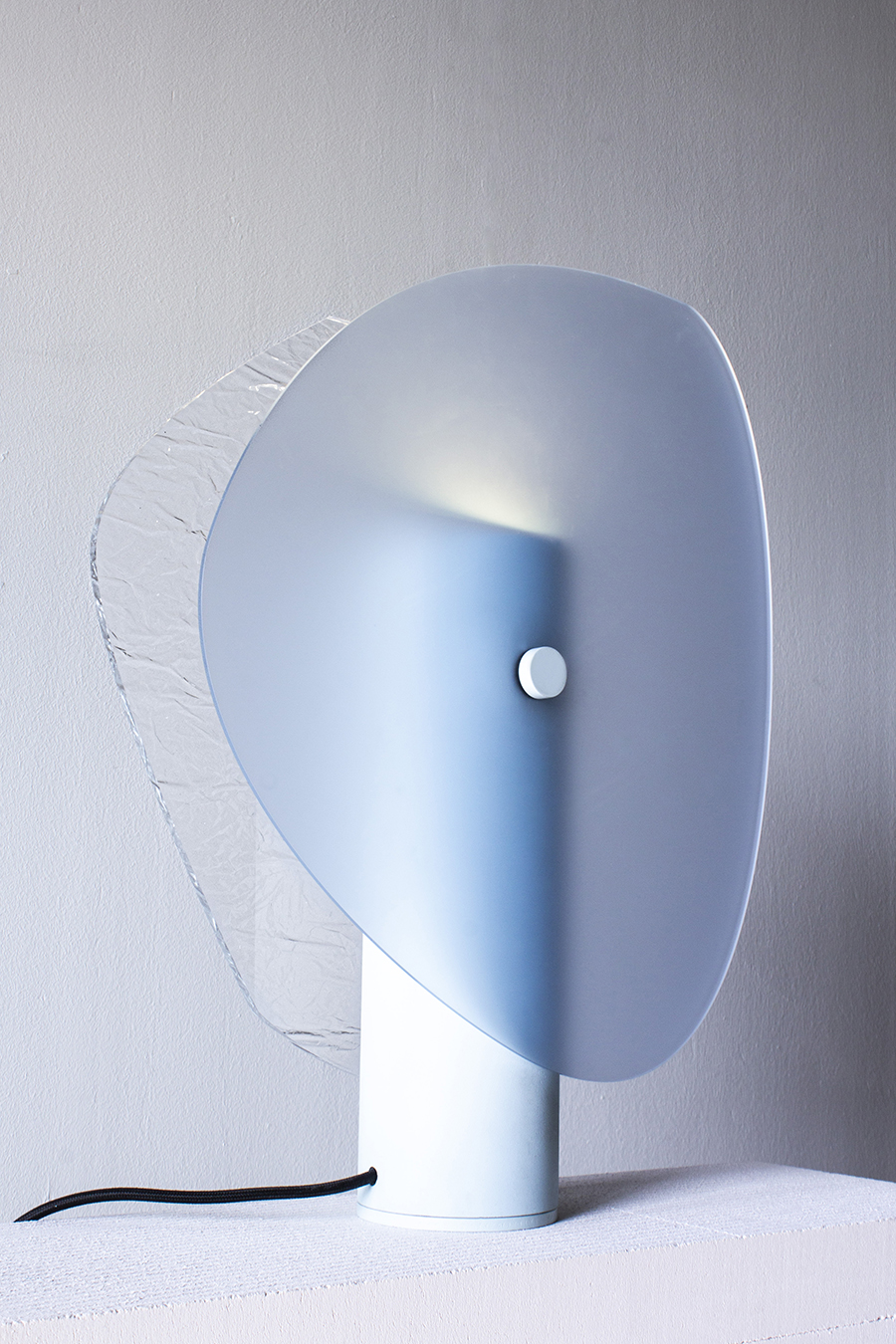
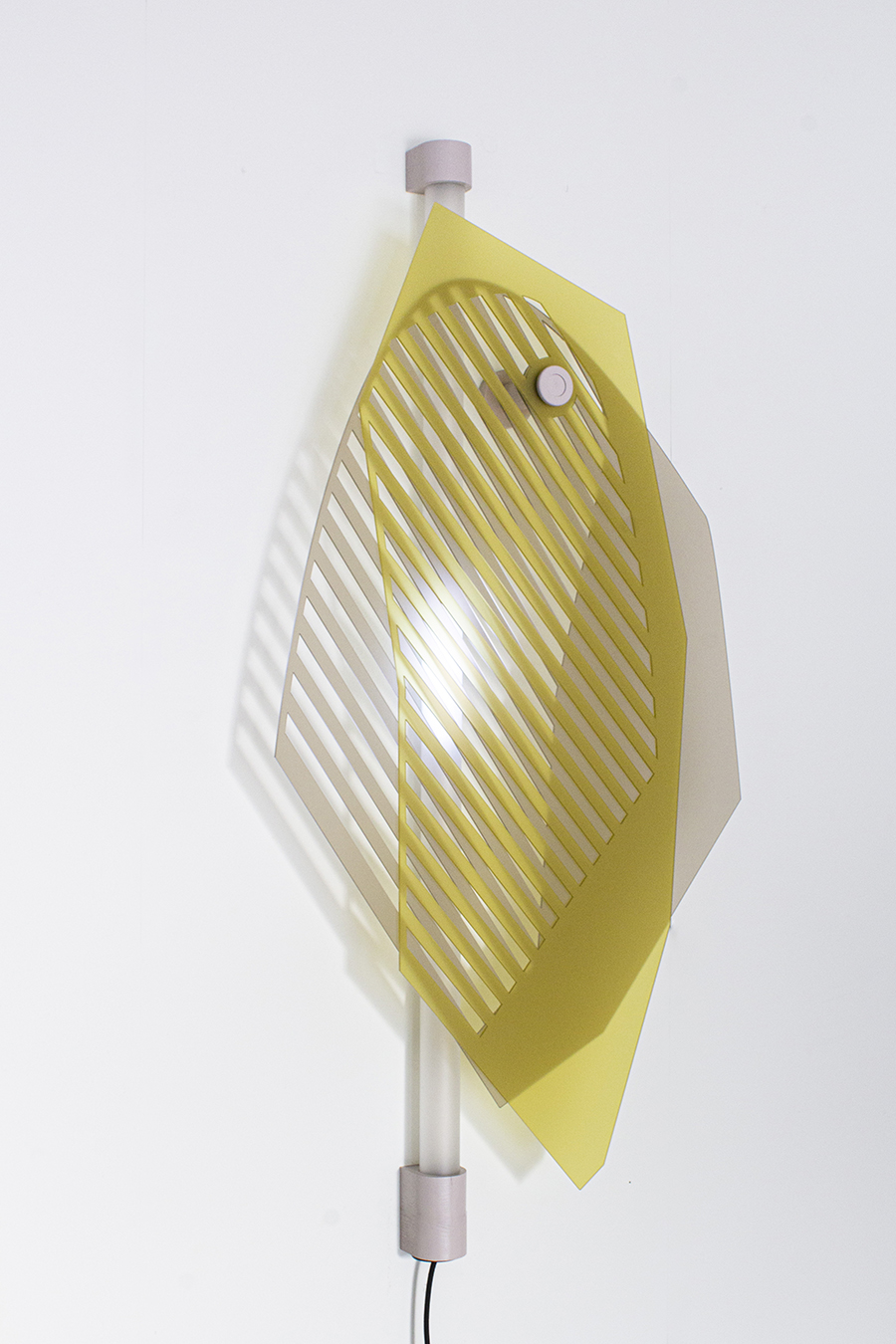
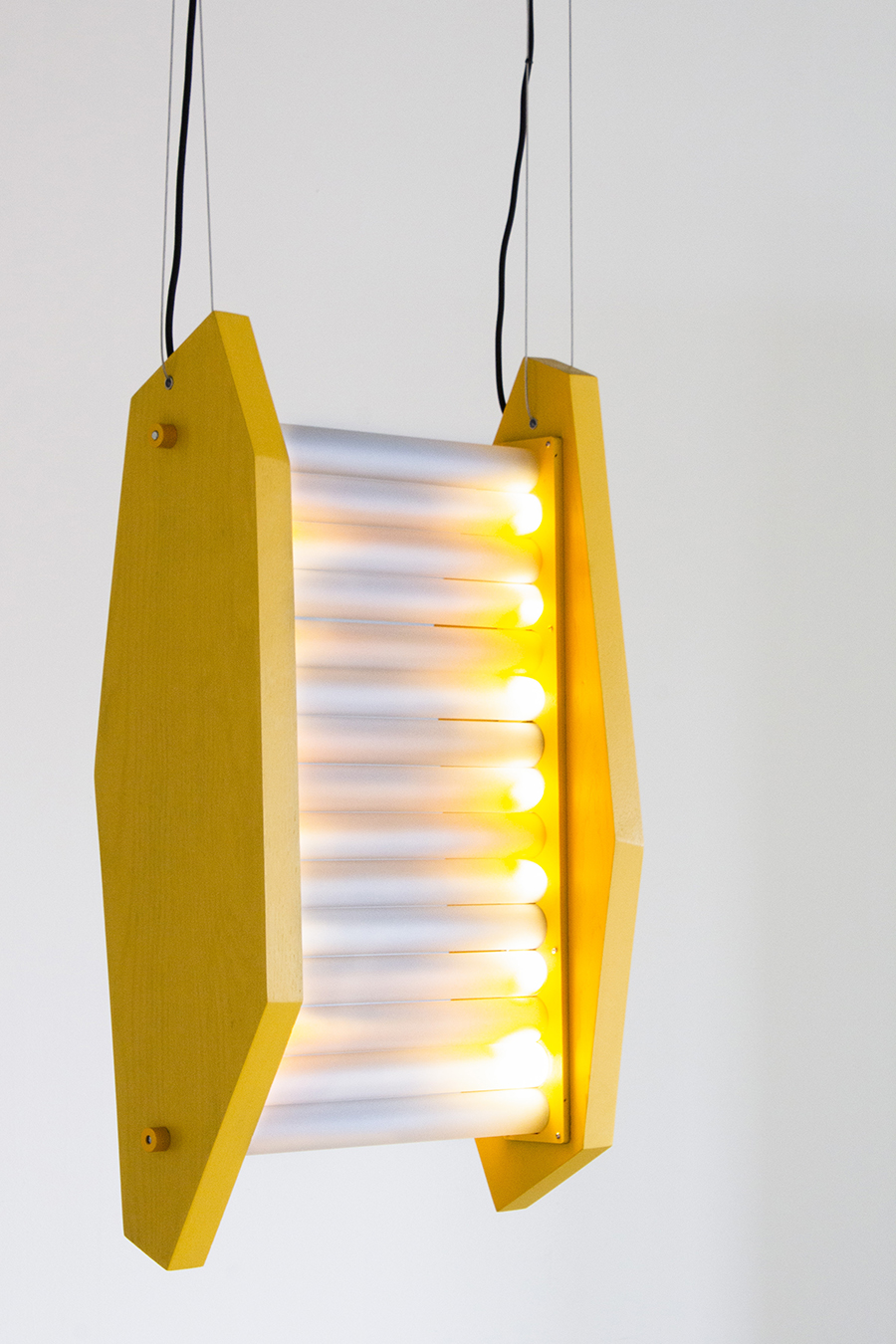
This year, Future More Collective teamed up with creative lighting specialists Lumus Instruments to produce perception-altering lighting. Two of the lights were designed to simulate and abstract natural light, including HEED by Studio Freek Peters and Jasper Luijten, which mimicked daylight with a puddle-like pale blue diffuser.
Ward Wijnant
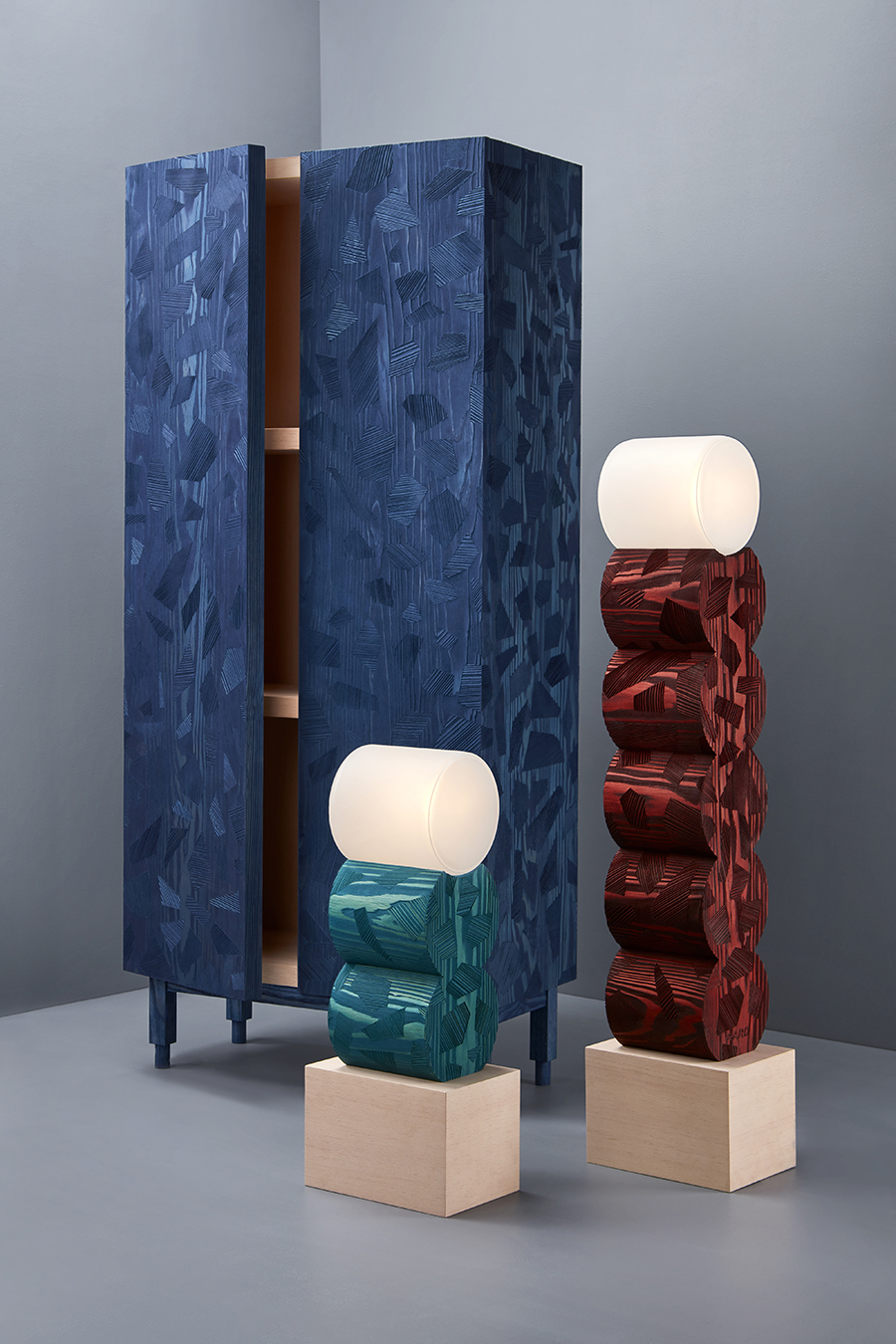
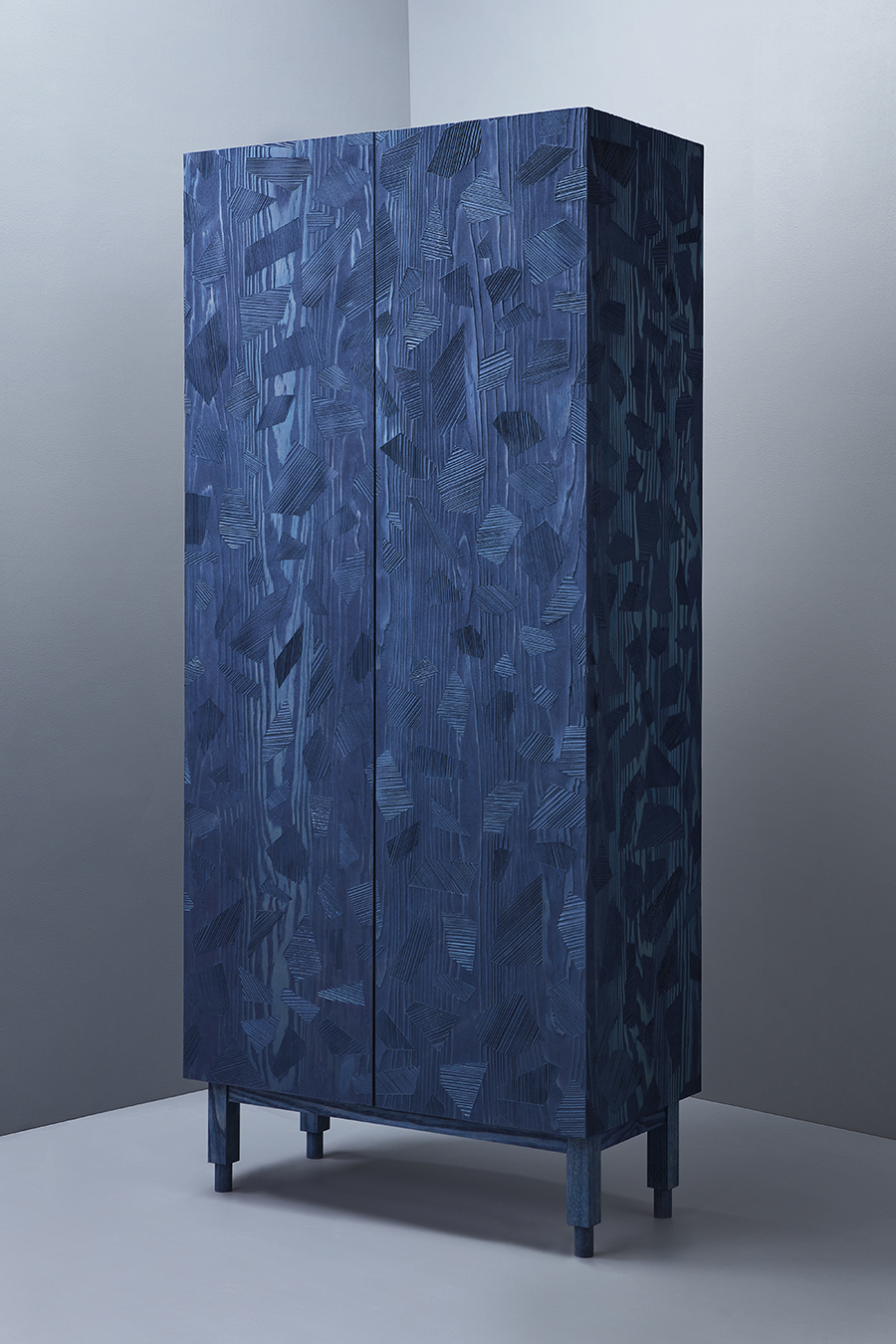
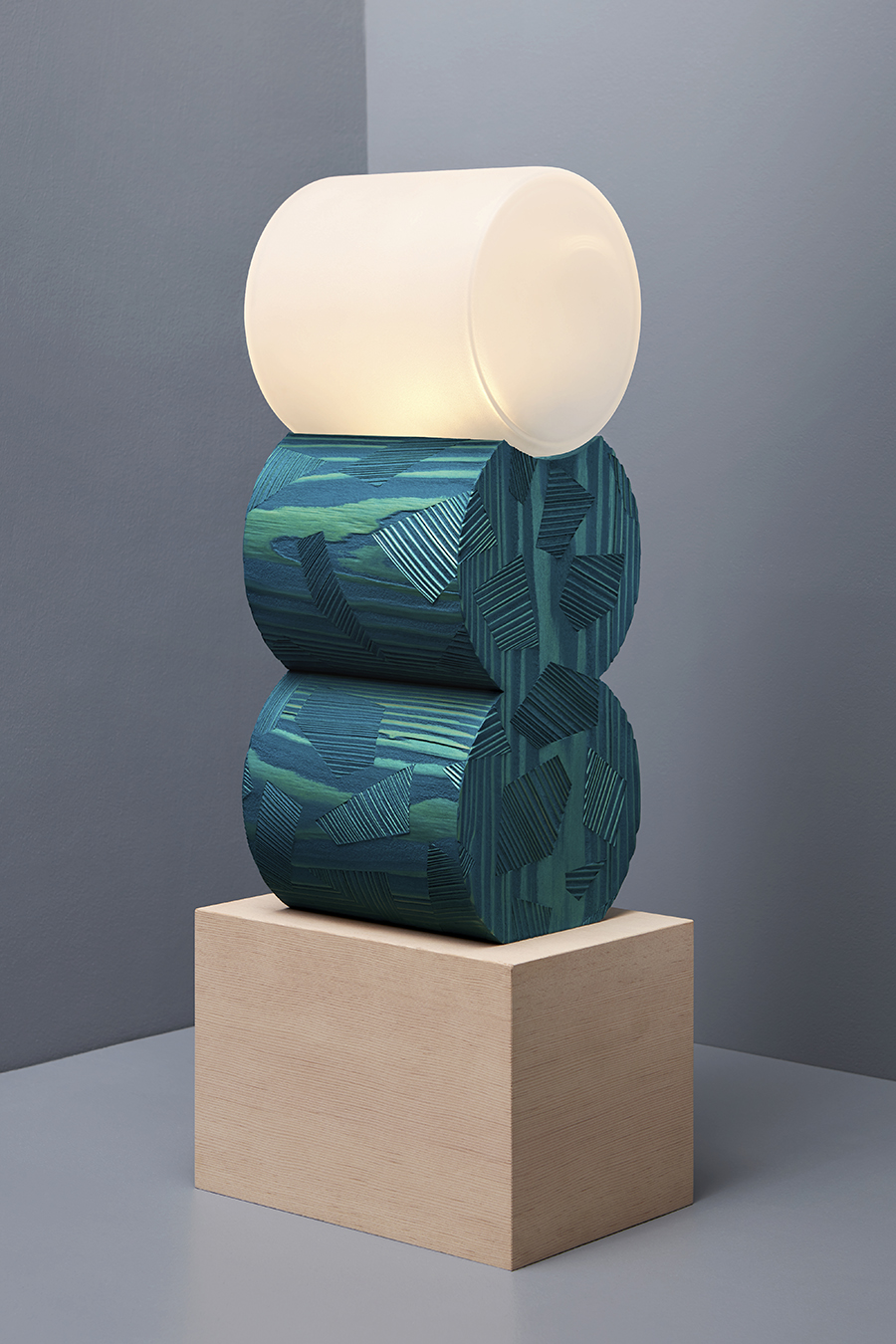
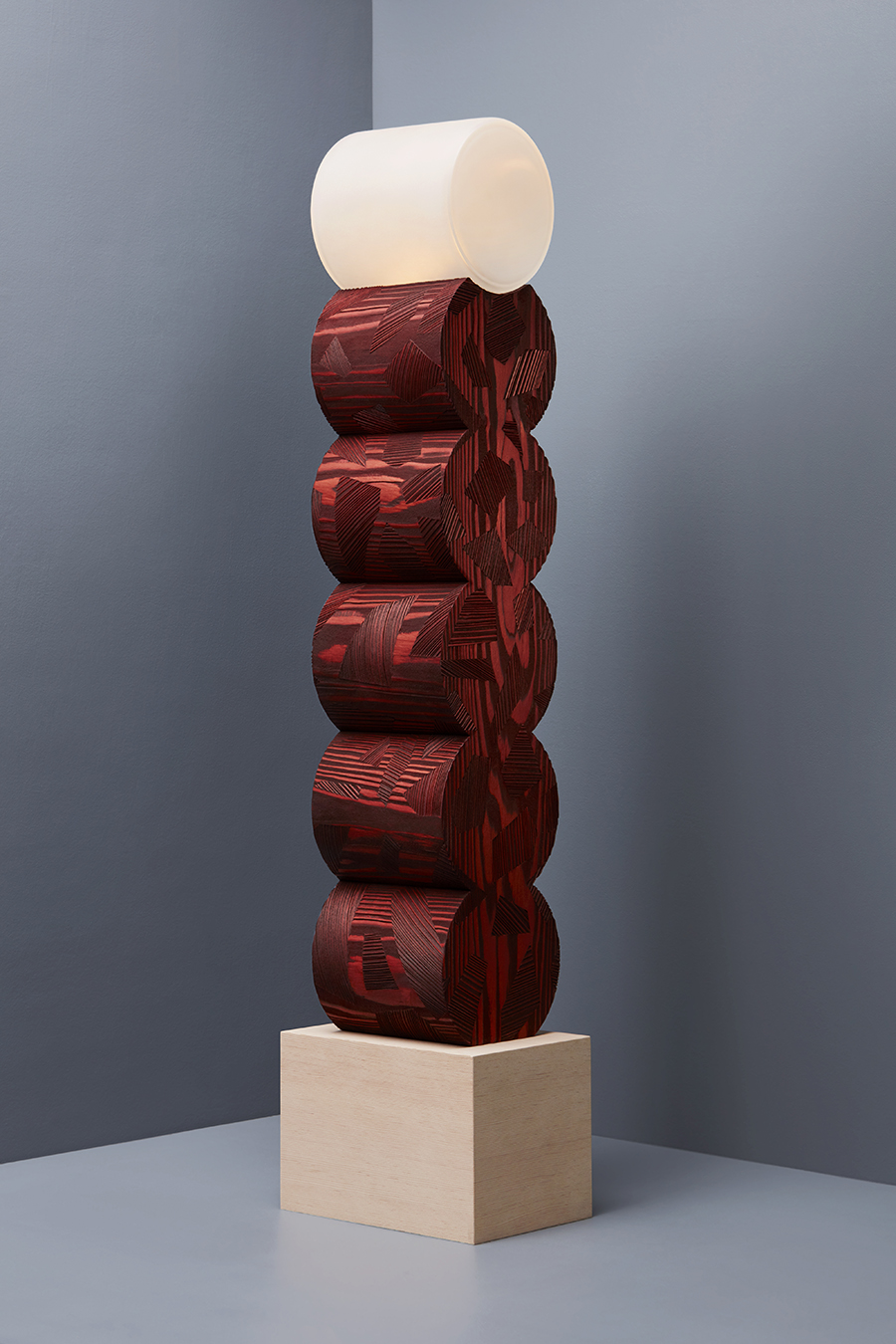
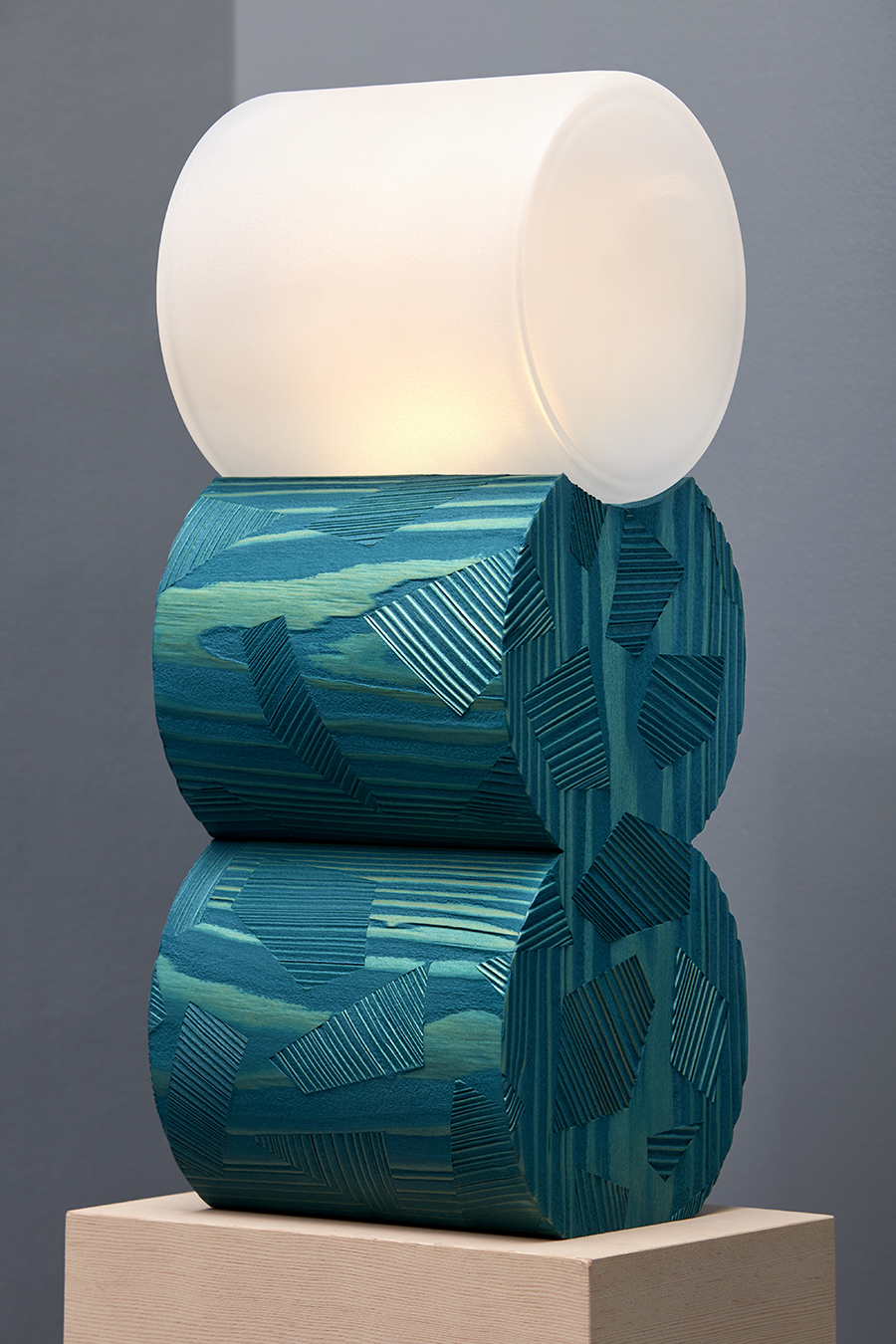
The surface of Ward Wijnant’s lighting and furniture is made using inlaid veneer that has different grain patterns depending on the angle from which it was cut from the tree. Thick sheets of veneer are laser cut before inlaying the contrasting fragments that match the cutout shapes. The surface is finished using a sandblaster to bring out the grain and unify the look before being dyed in vivid hues of red, blue, teal and black. Photos: Ronald Smits
Studio Mieke Lucia
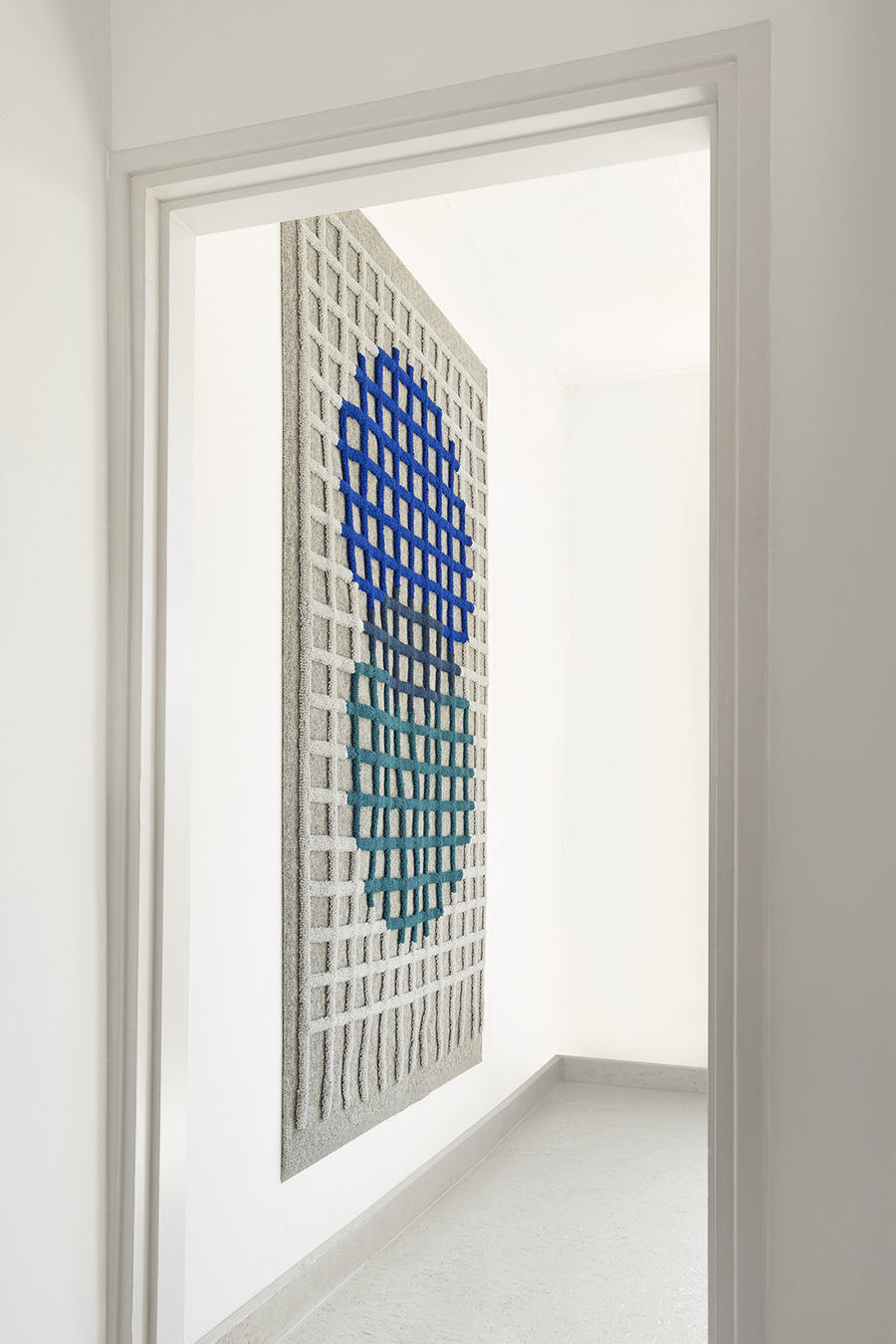
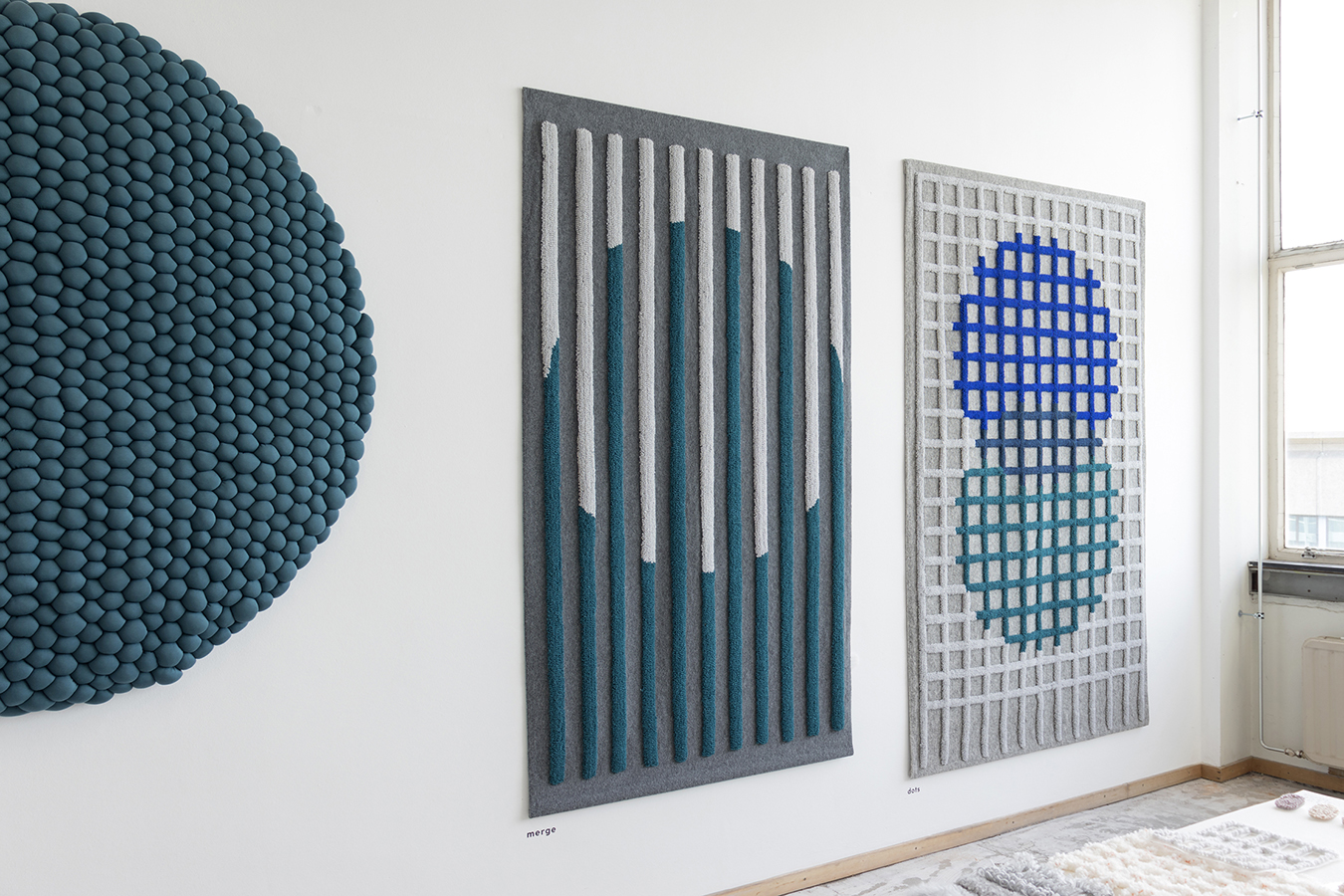
Working with a tufting gun on unwanted scraps of carpet from global manufacturer Tarkett, Mieke Lucia transforms waste contract flooring into acoustic panels for the wall. A quirk of the hand-tufting process, whereby 3D distortions surround designs that don’t extend all the way to the edges, means that large padded domes can be made.
Form Editions
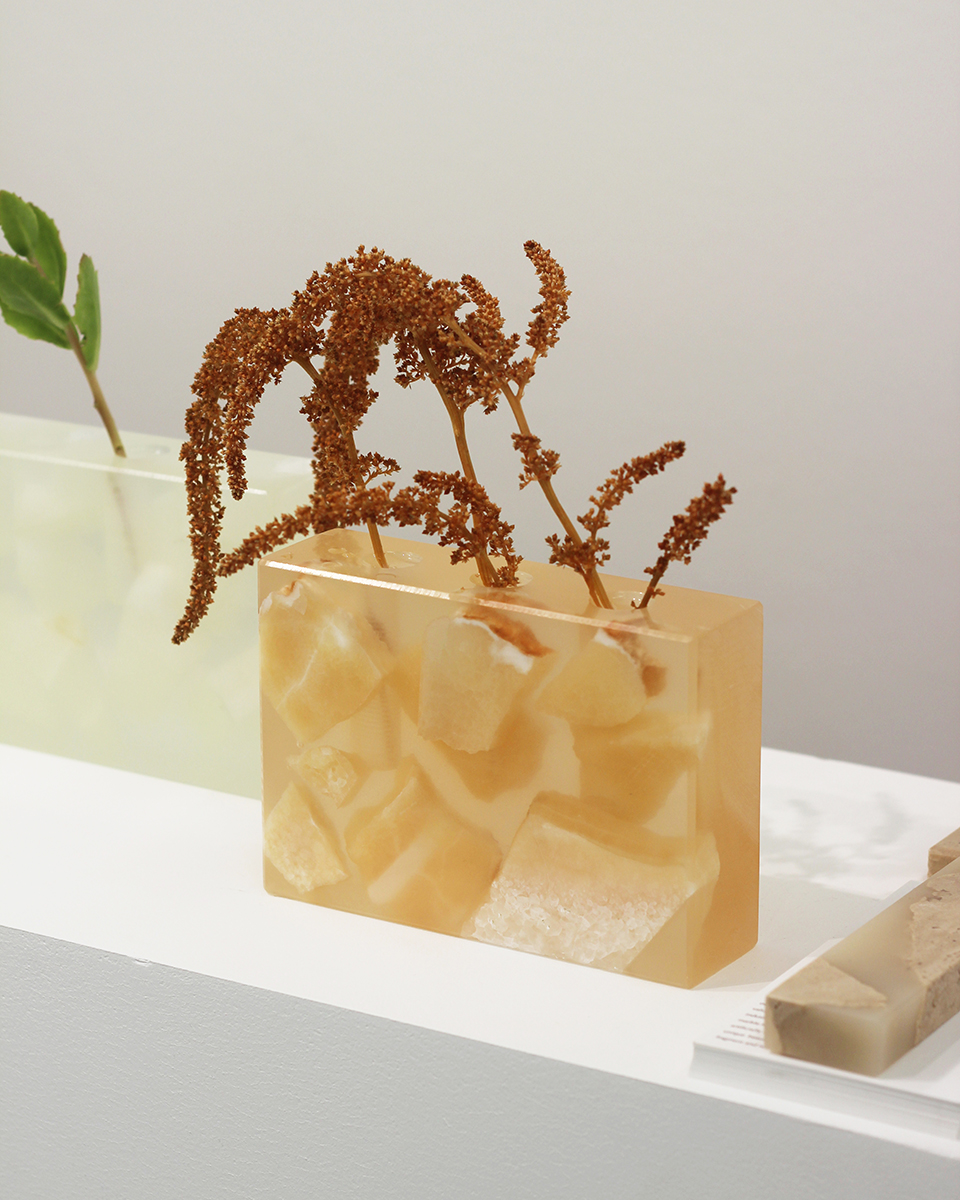
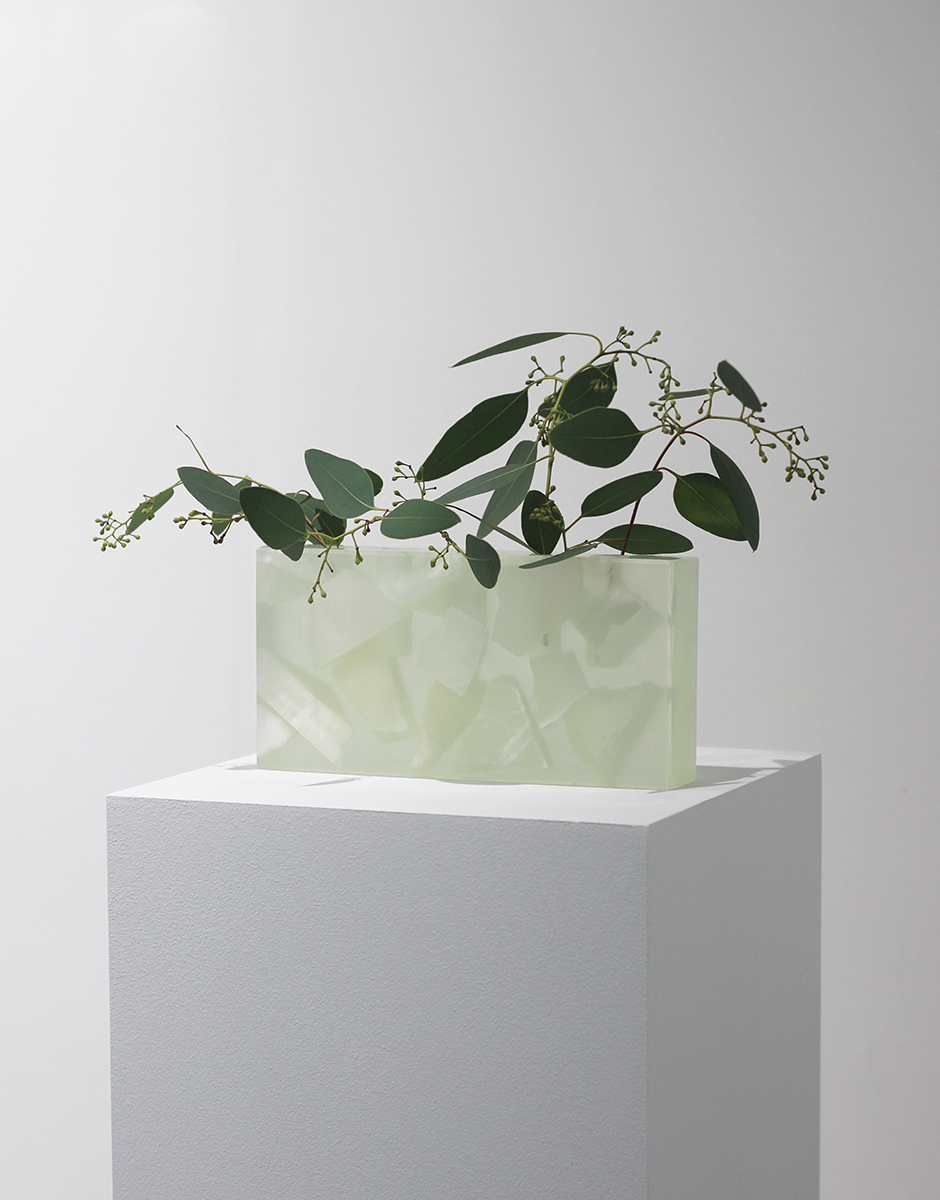
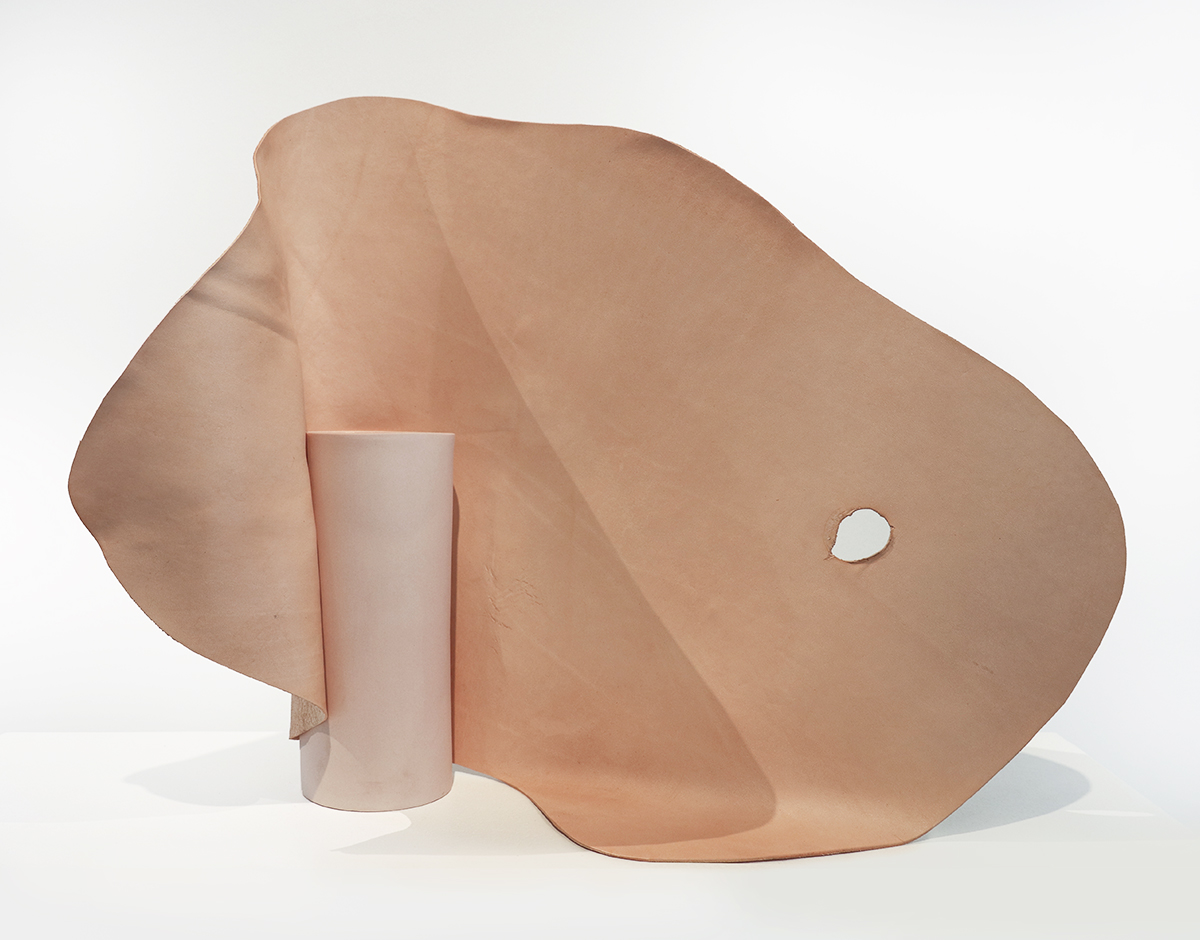
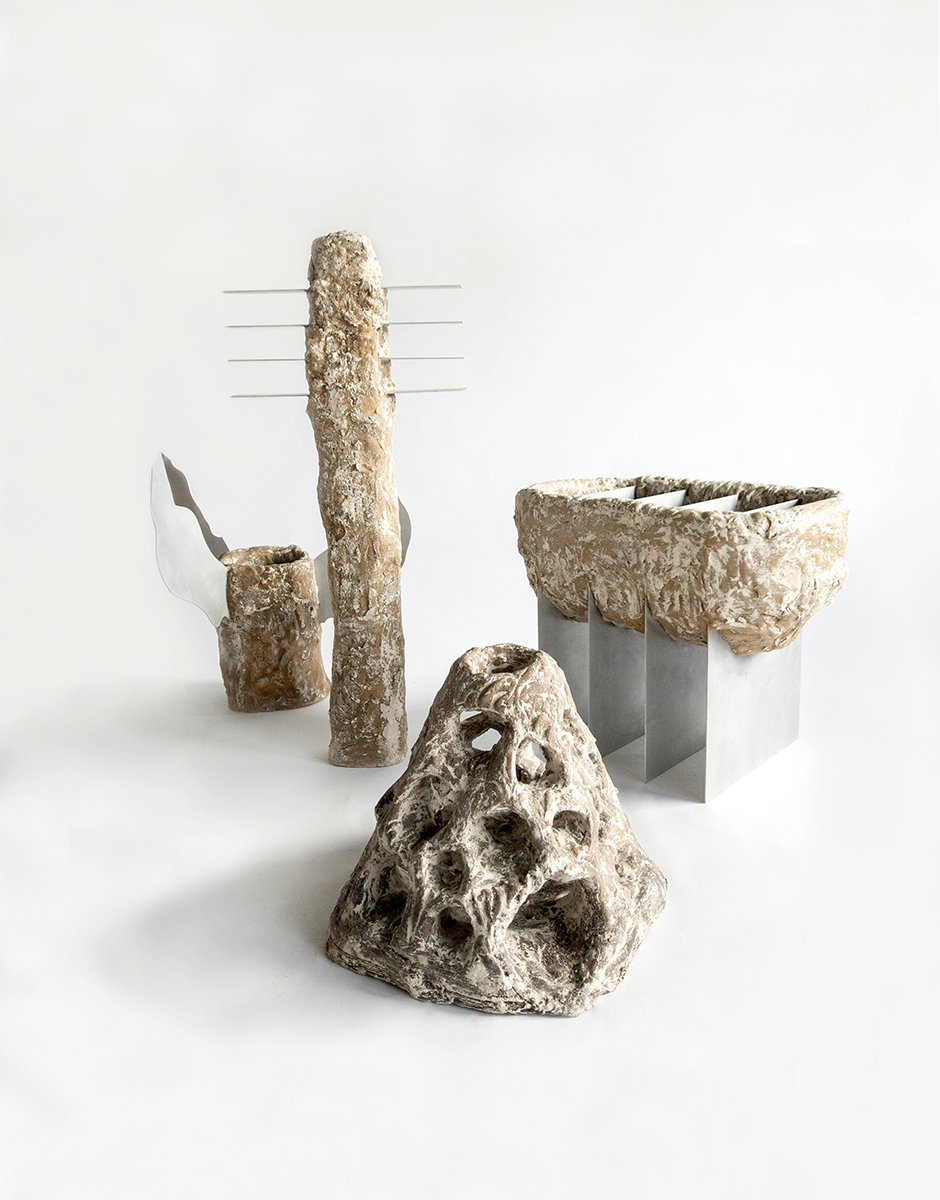
Curated by Rive Roshan, Form Editions showcased designs that could also be art and vice versa, including FICT Studio (top), Théophile Blandet, and Ida Elke (bottom) who poured molten beeswax into a clay mould containing aluminum fins; once set, the clay was removed to reveal objects that blend machine precision with the handmade.
Sophia Taillet
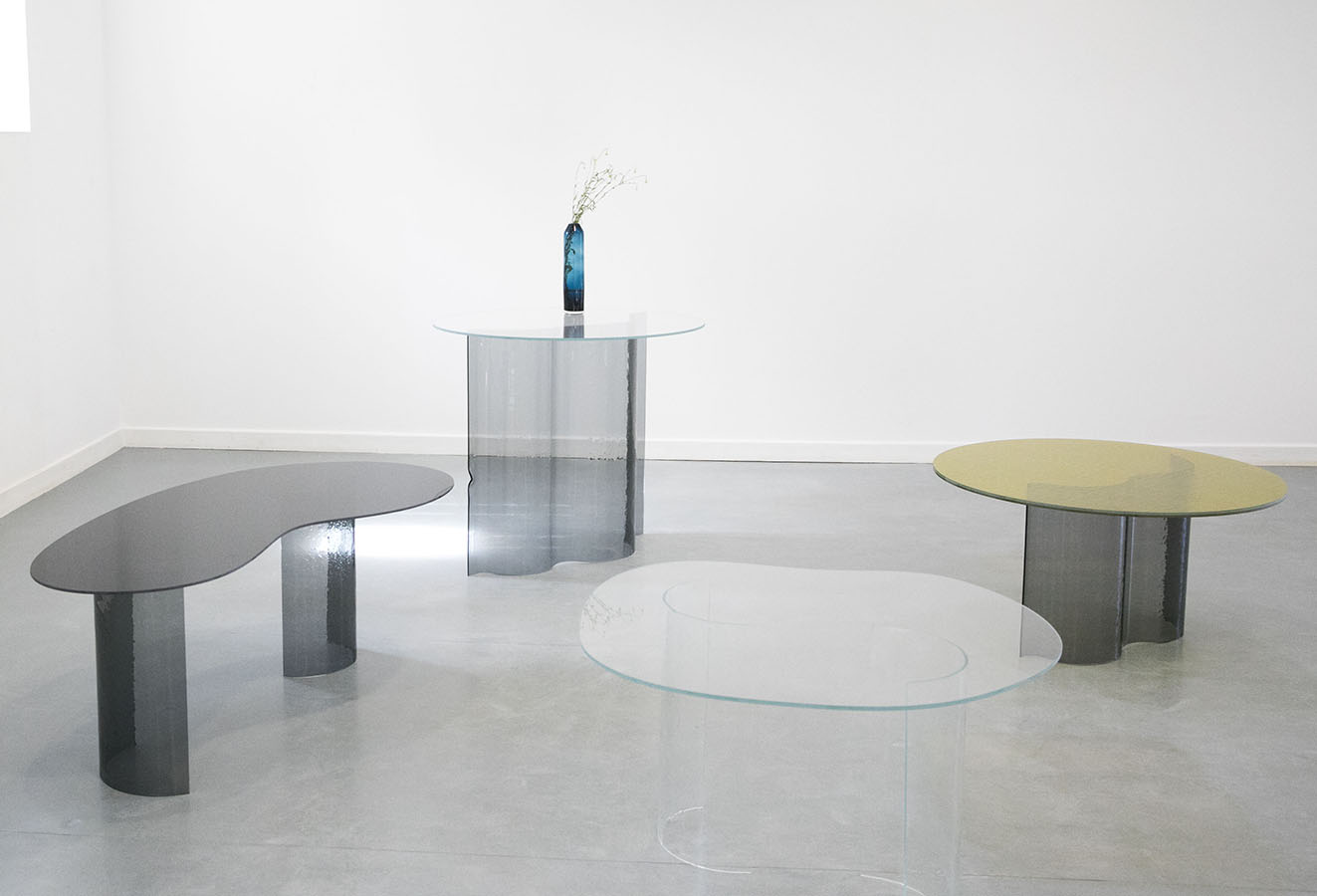
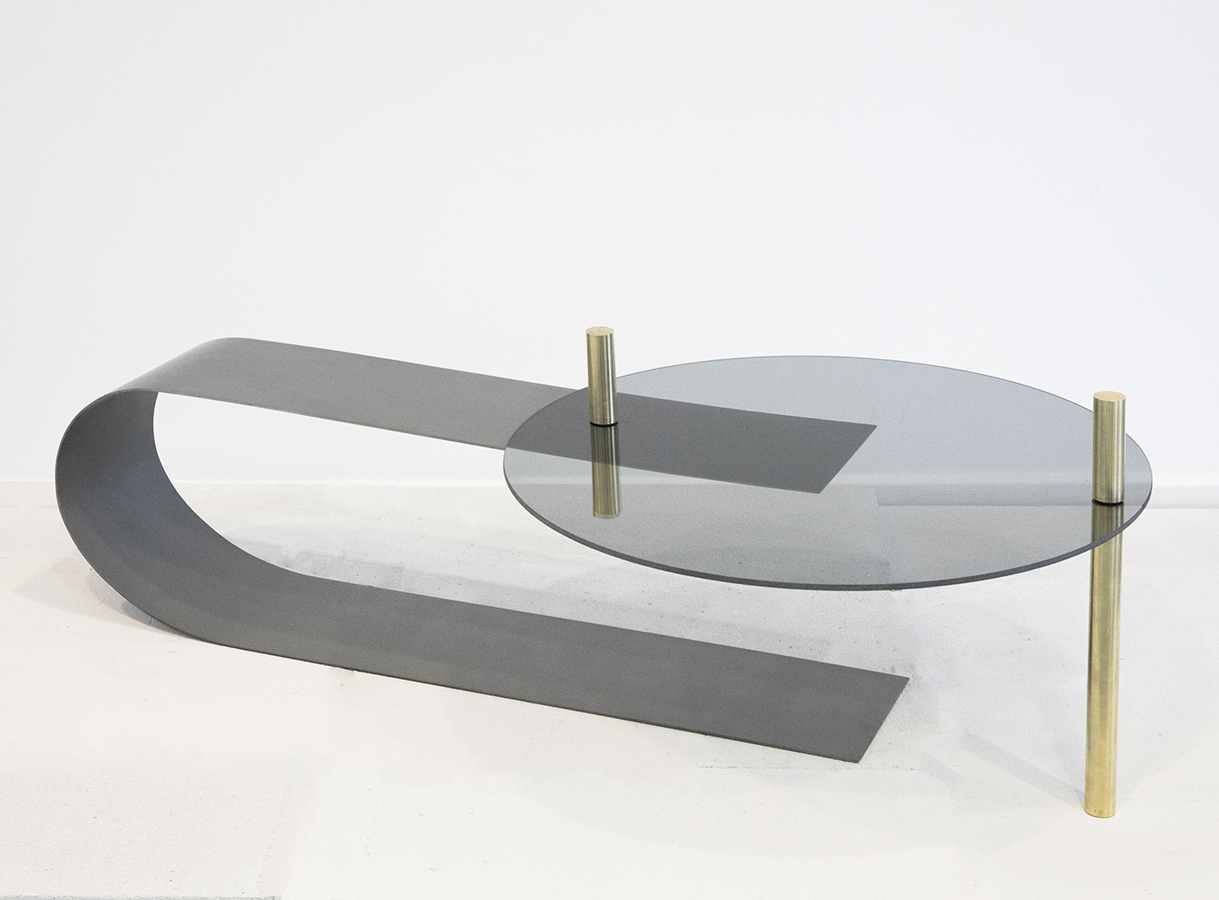

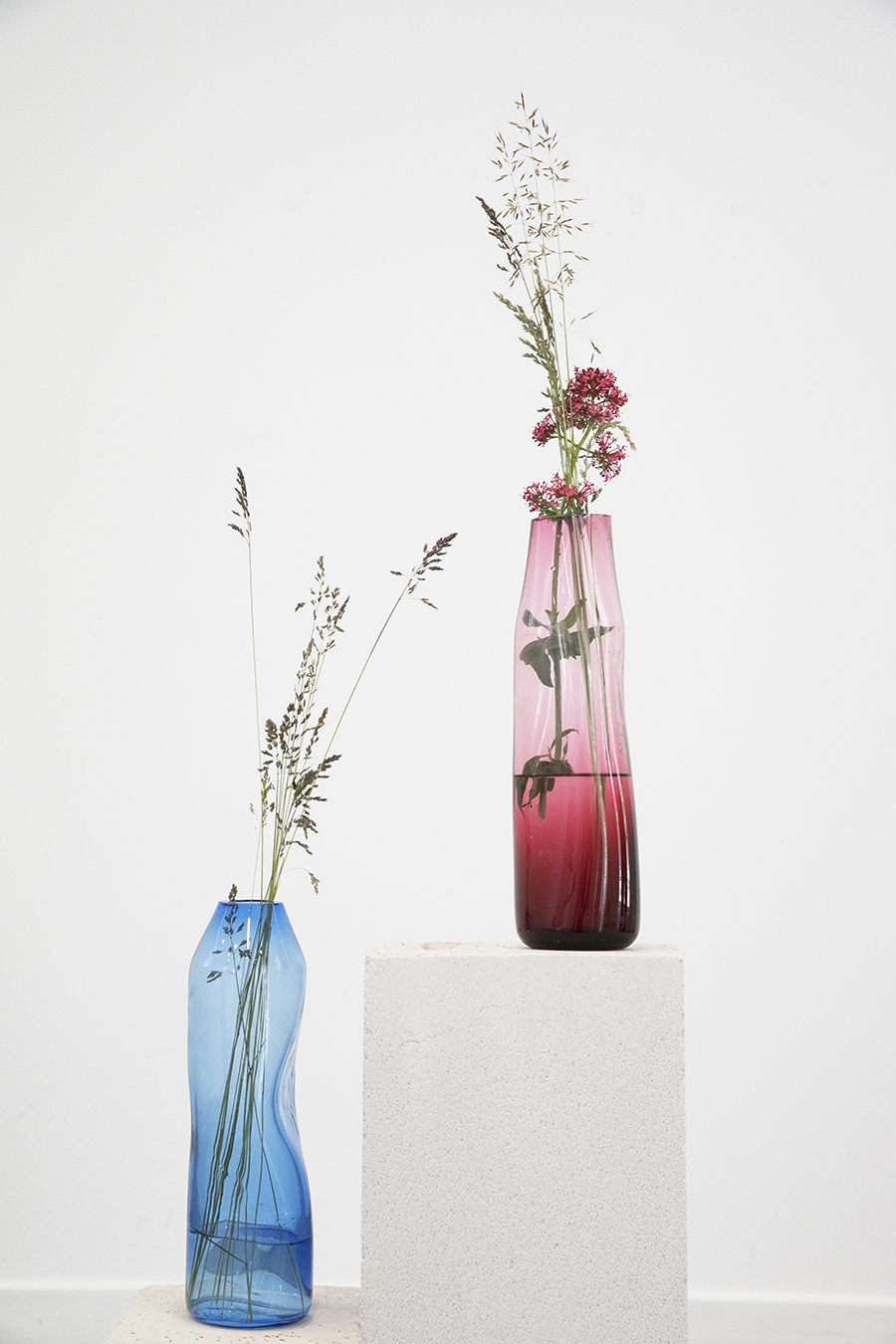
With her Curve series of glass tables made in collaboration with Yzeure Glass factory in France, Taillet combines puddle shapes with regular geometric forms, mixing in contrasting textures that cast shadows with water-like patterns.
UAU Project
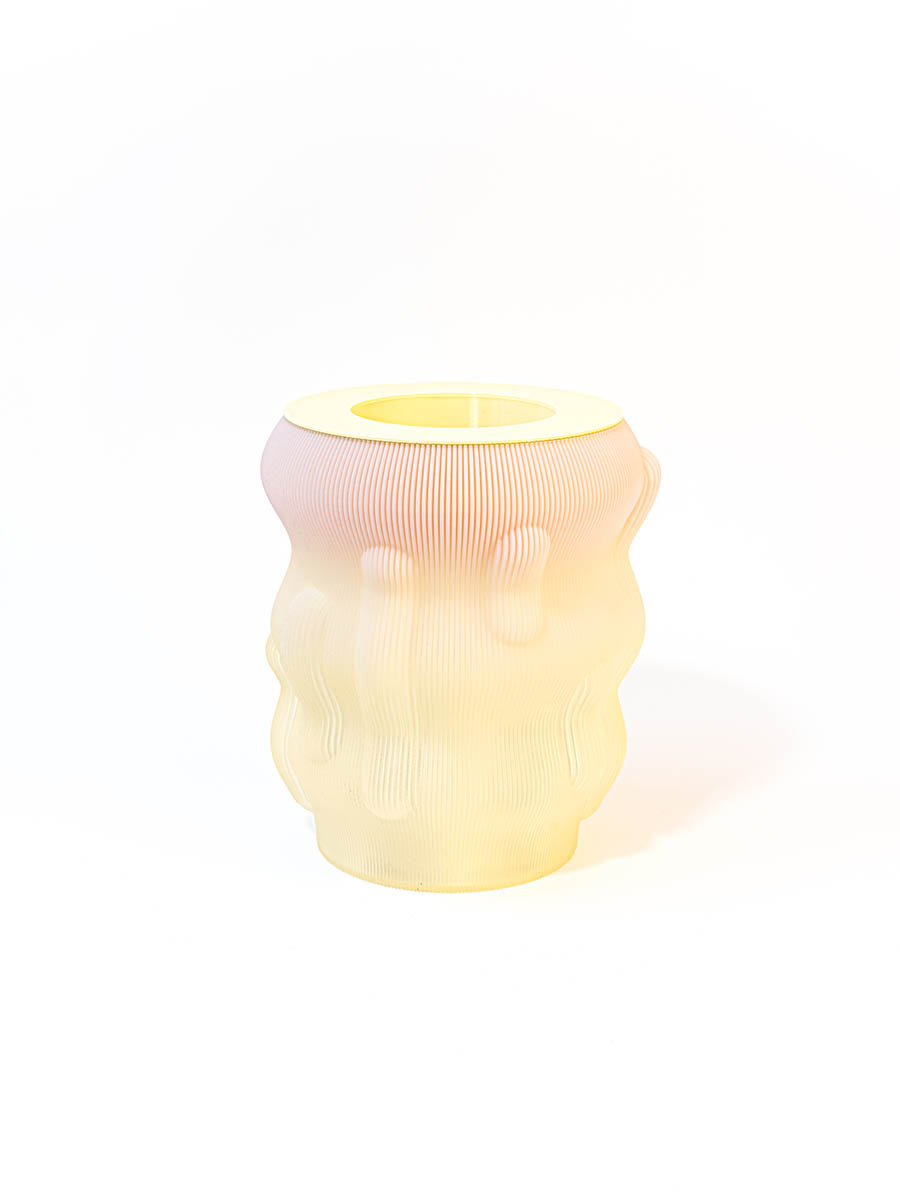
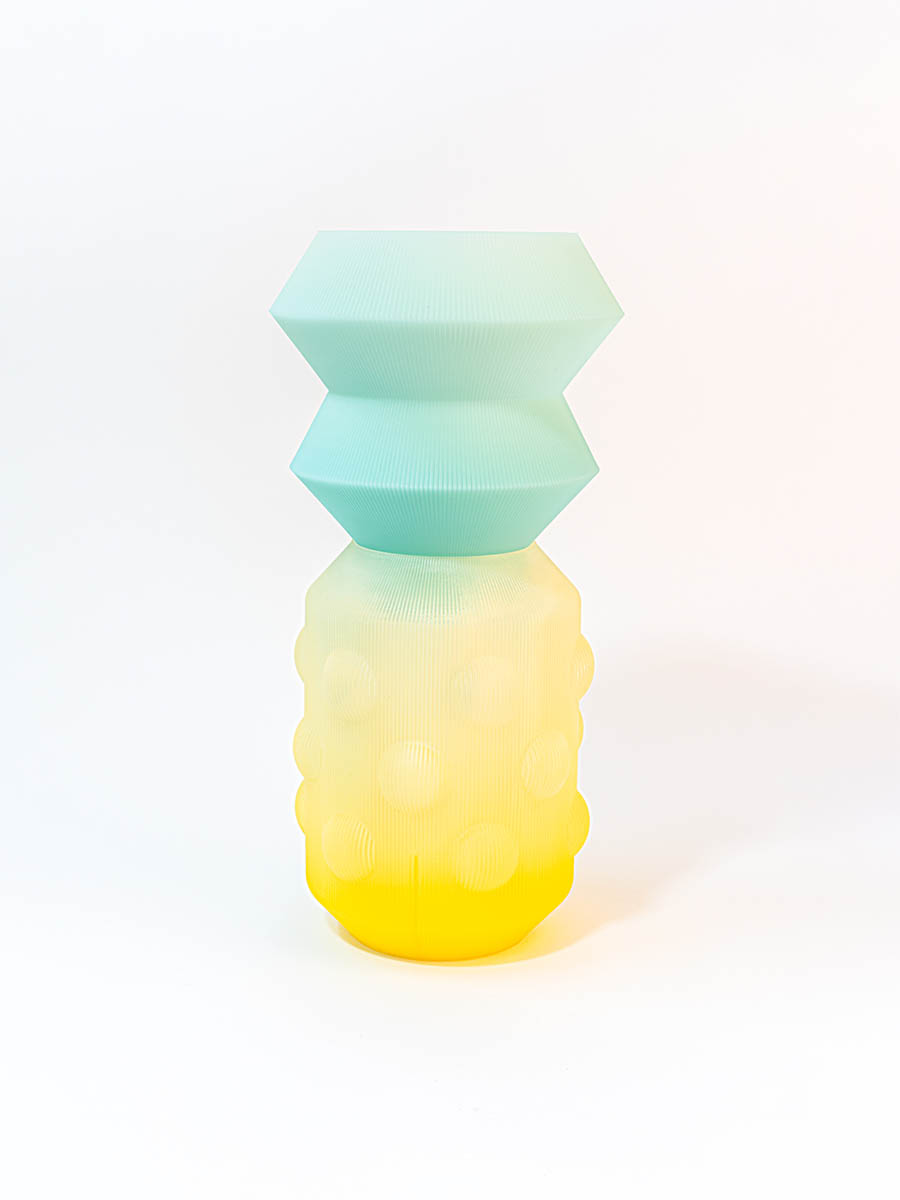
Using biodegradable plastic filament, called PLA, UAU Project 3D print candlestick holders, vases and now table legs in vivid synthetic colors. The designers take in-between hues that are produced by the suppliers when changing color, building palettes and forms intuitively with what is available.
Red Mud
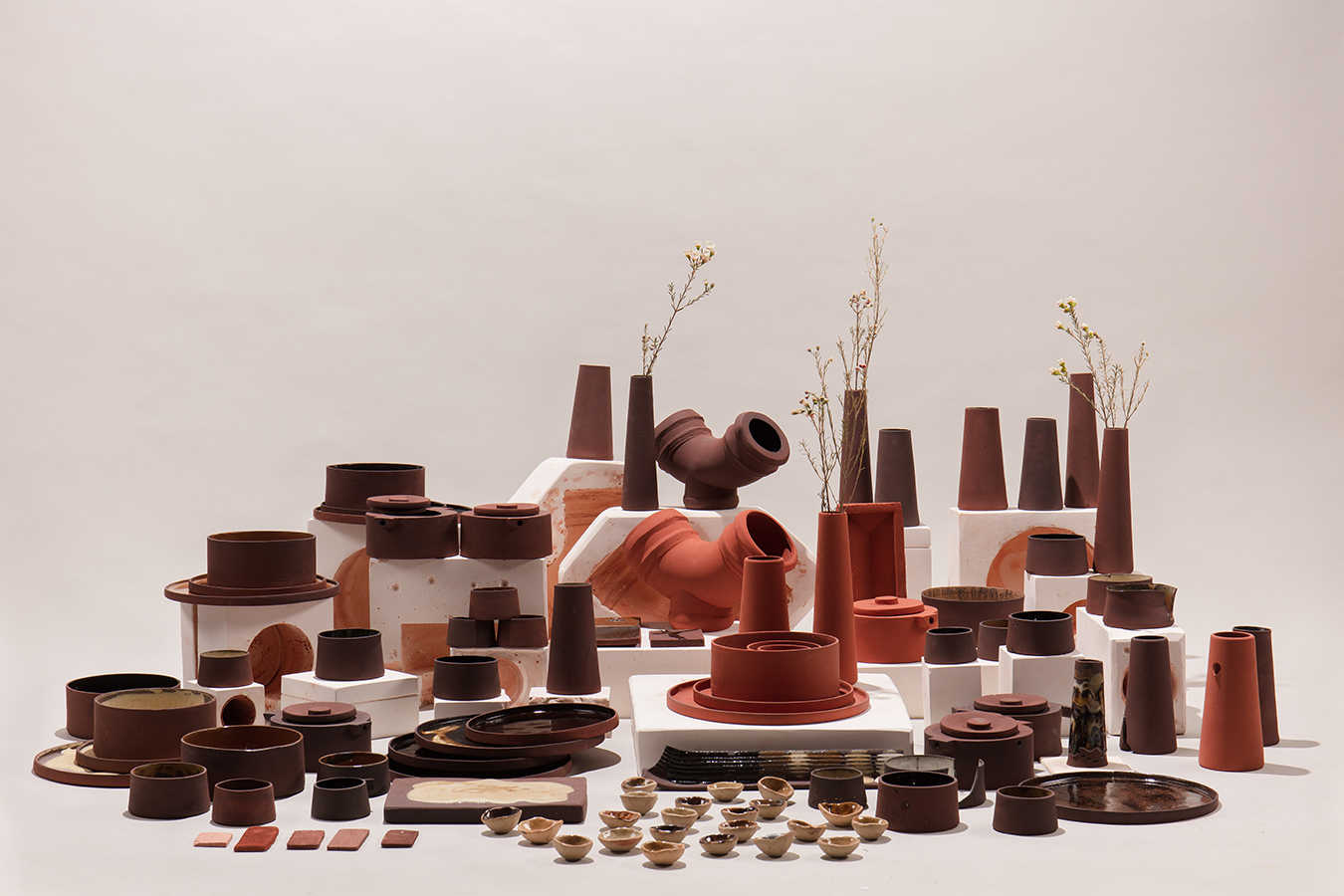
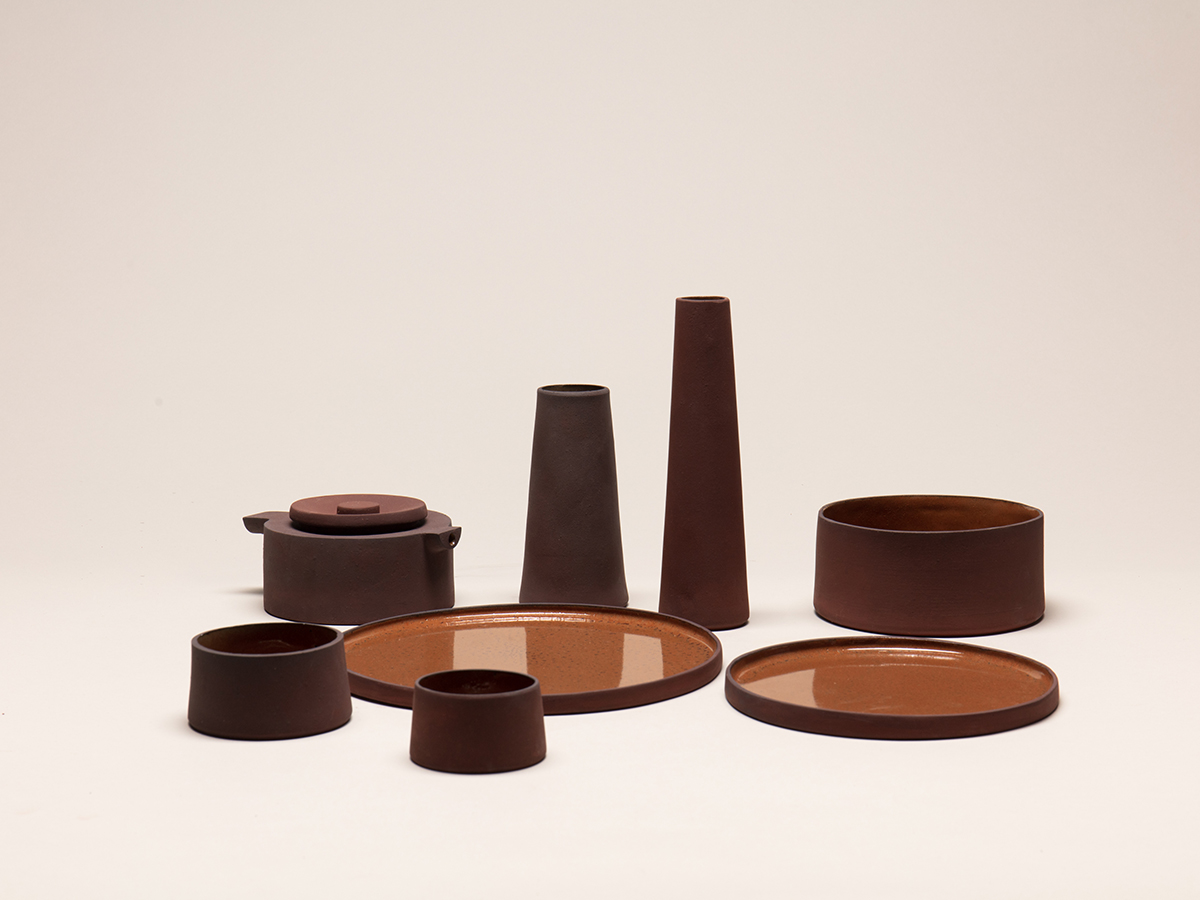
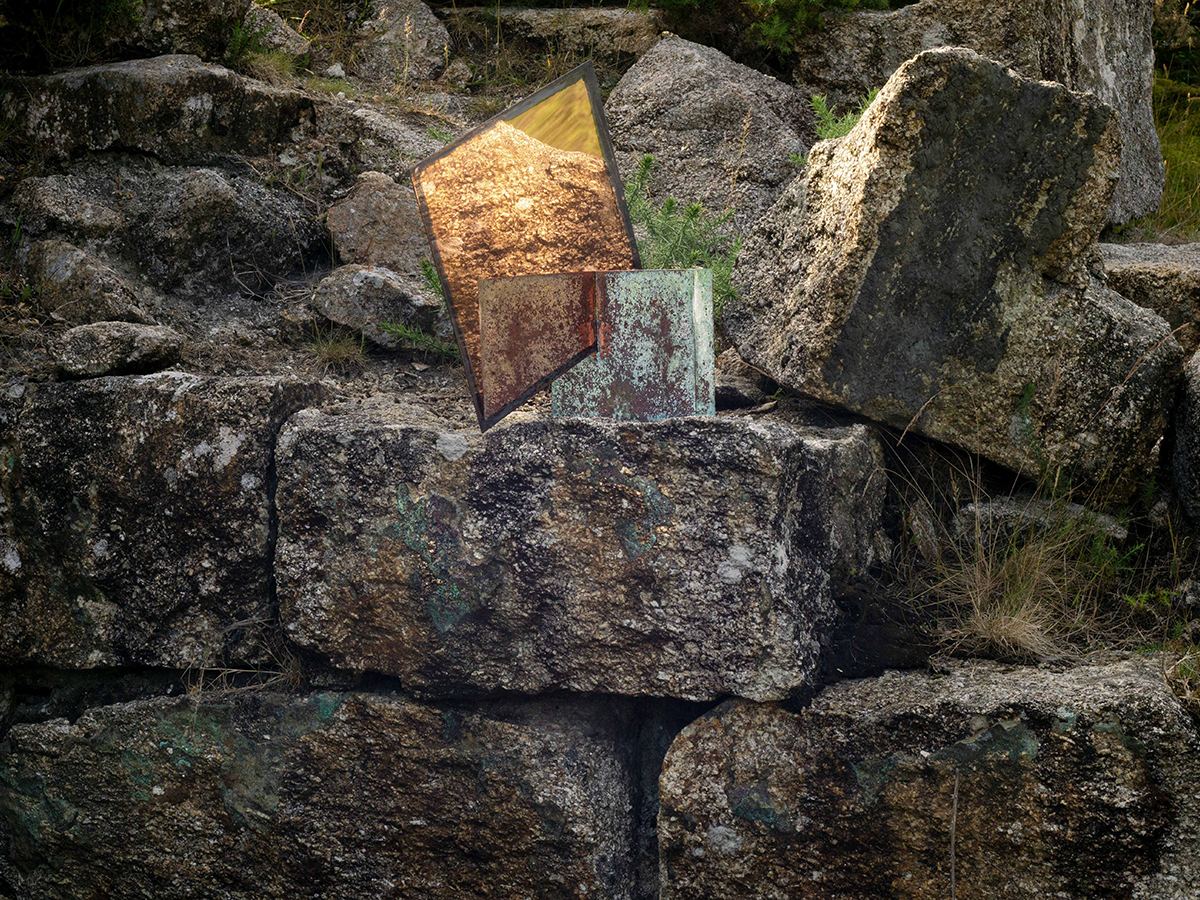
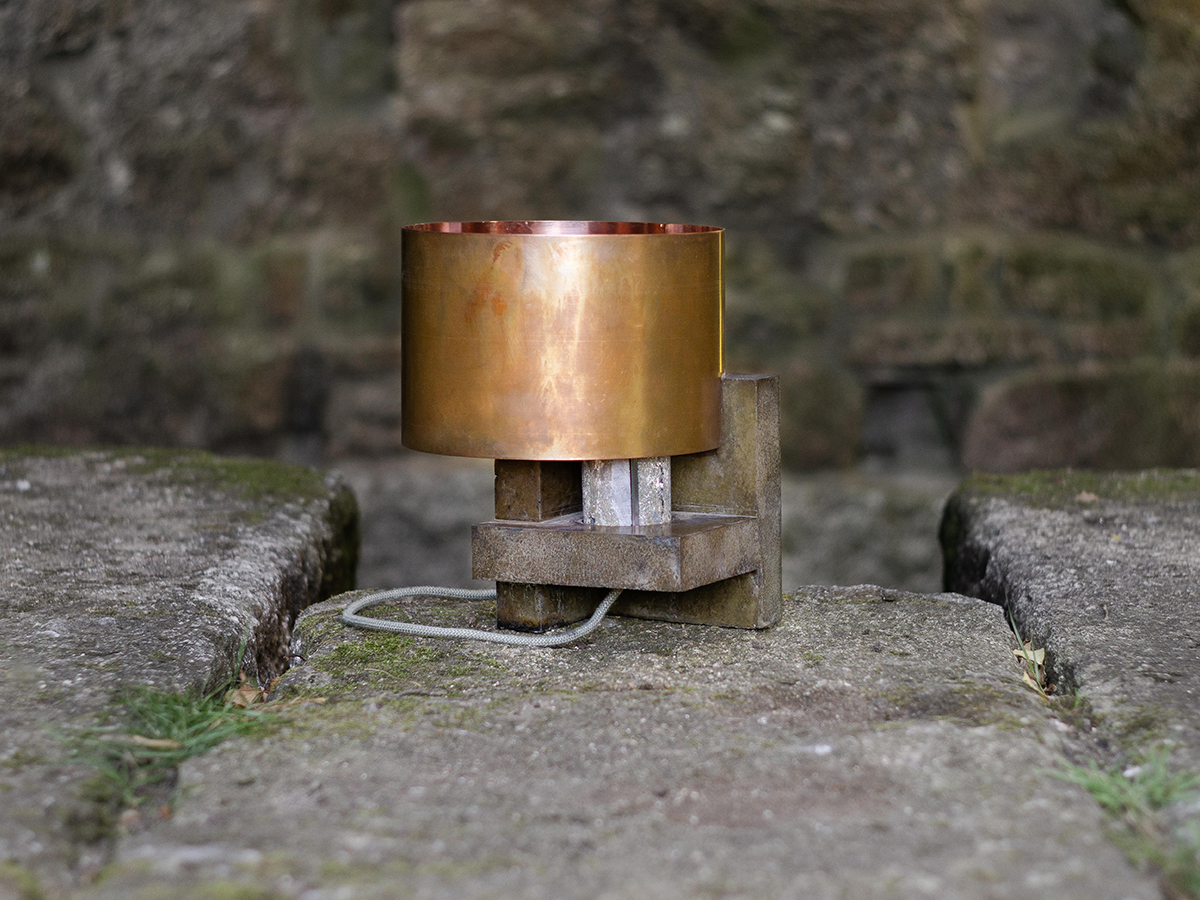
Bauxite residue or ‘red mud’ is an abundant industrial byproduct produced in huge quantities. Four graduates from London’s Royal College of Art showed a series of tabletop products that aim to inspire new uses for the material. Iron oxide gives the material an earthy red tone.
Dutch Invertuals
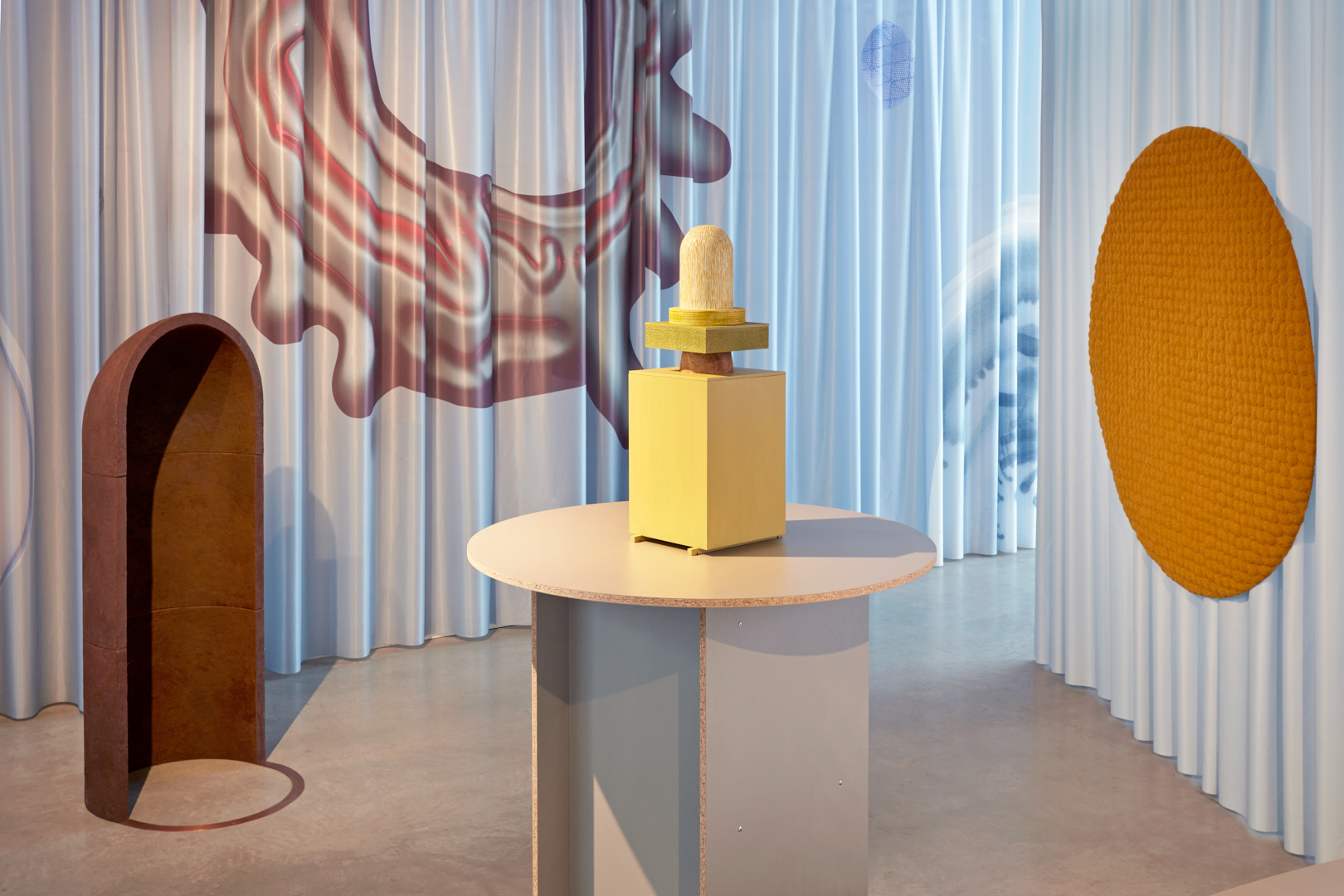
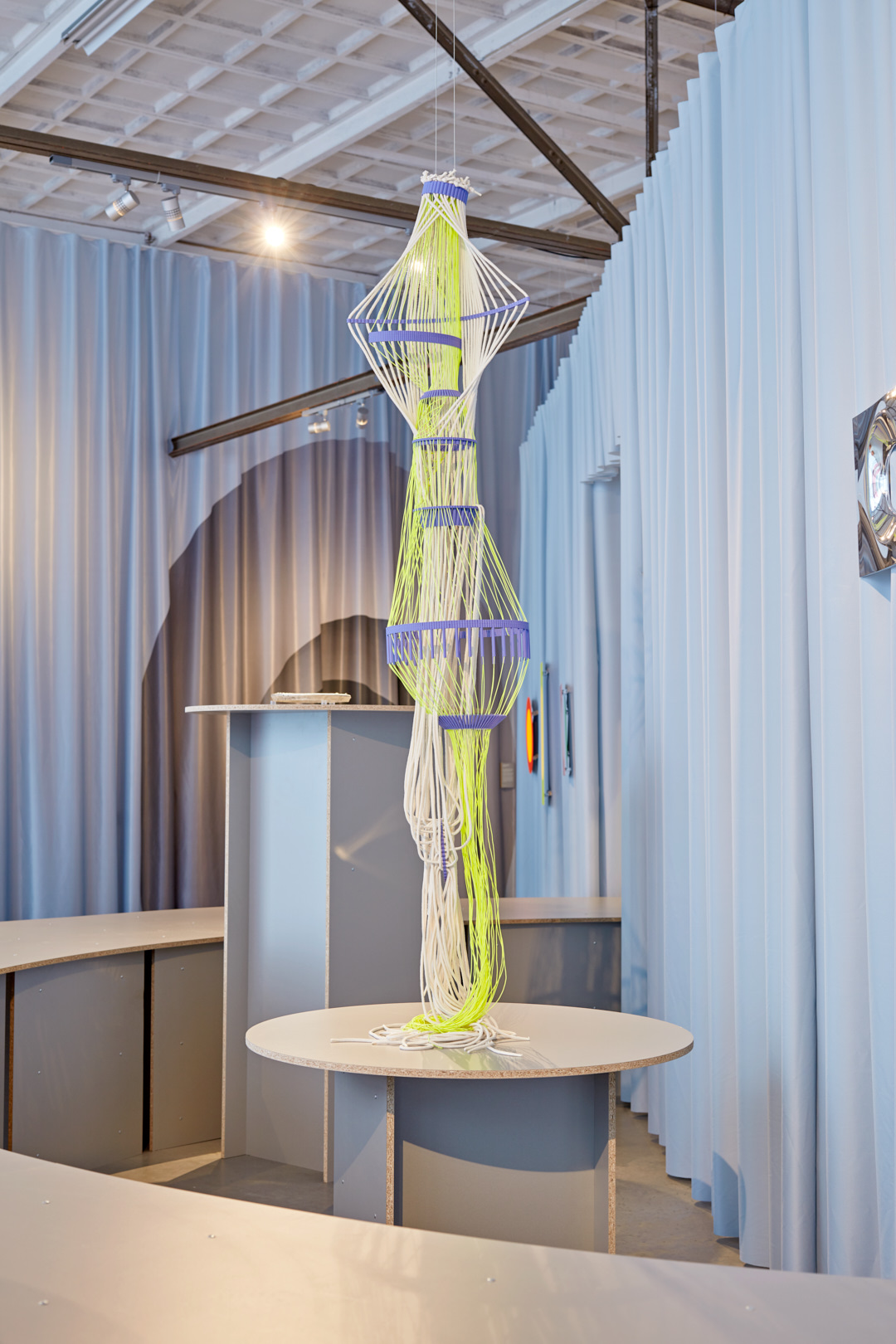
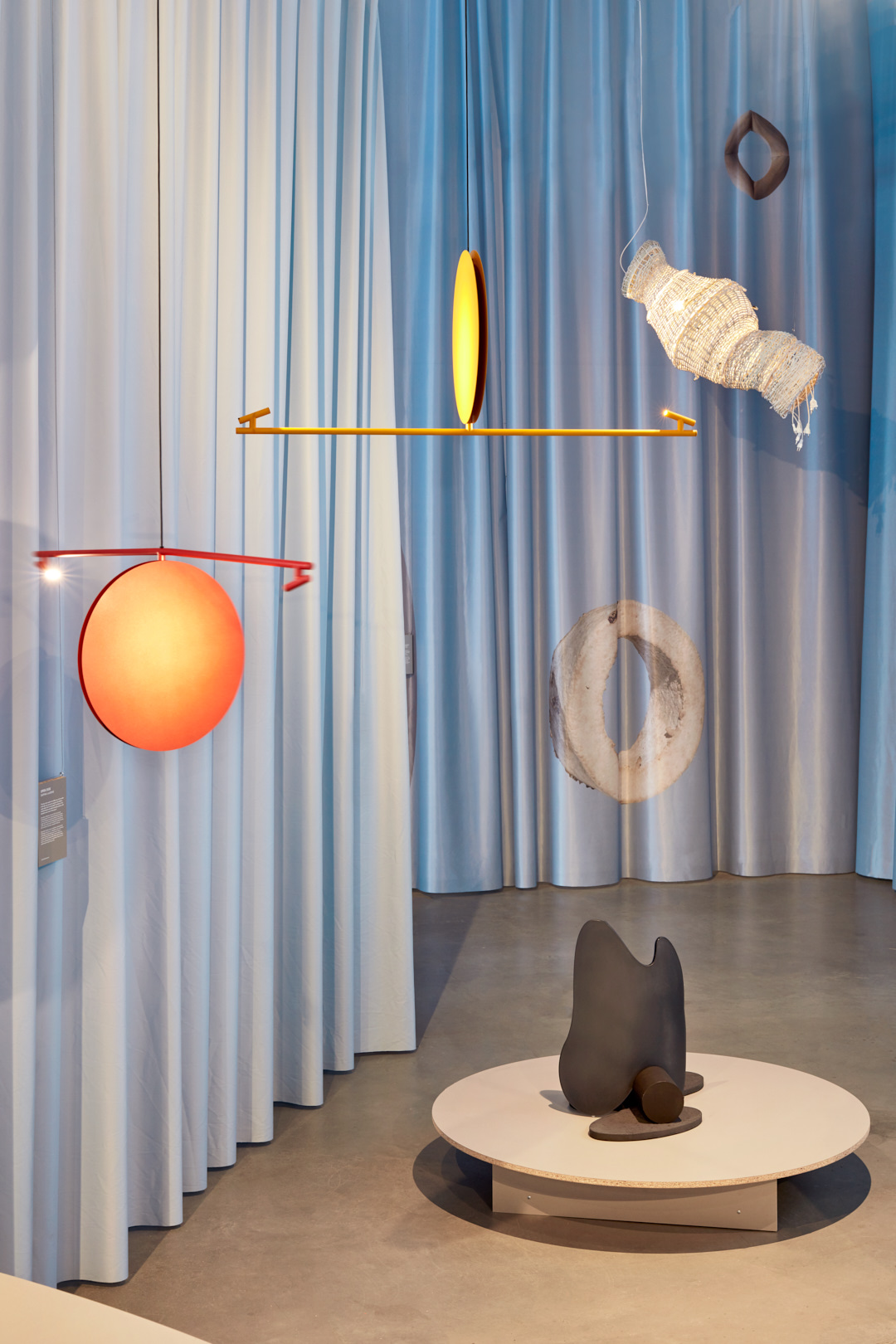
The theme for the 10-year anniversary of Dutch Invertuals was The Circle — an emblem of unity amidst division in society at large. The show brought together fresh talent scouted from the Design Academy Eindhoven with more established Dutch designers, and 10 more were added since the Milan Design Week edition of the show in April this year. Photos: Ronald Smits
Design Academy Eindhoven
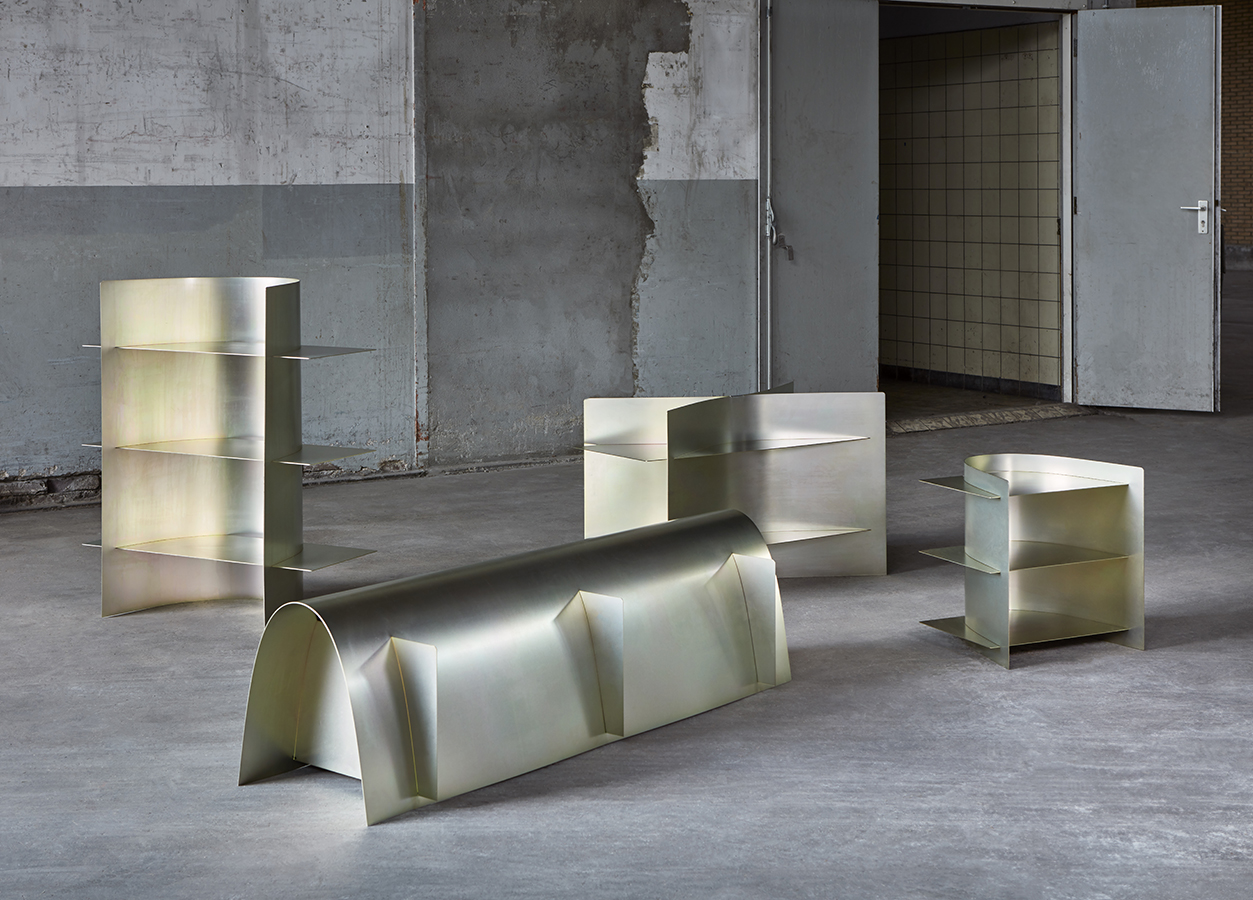
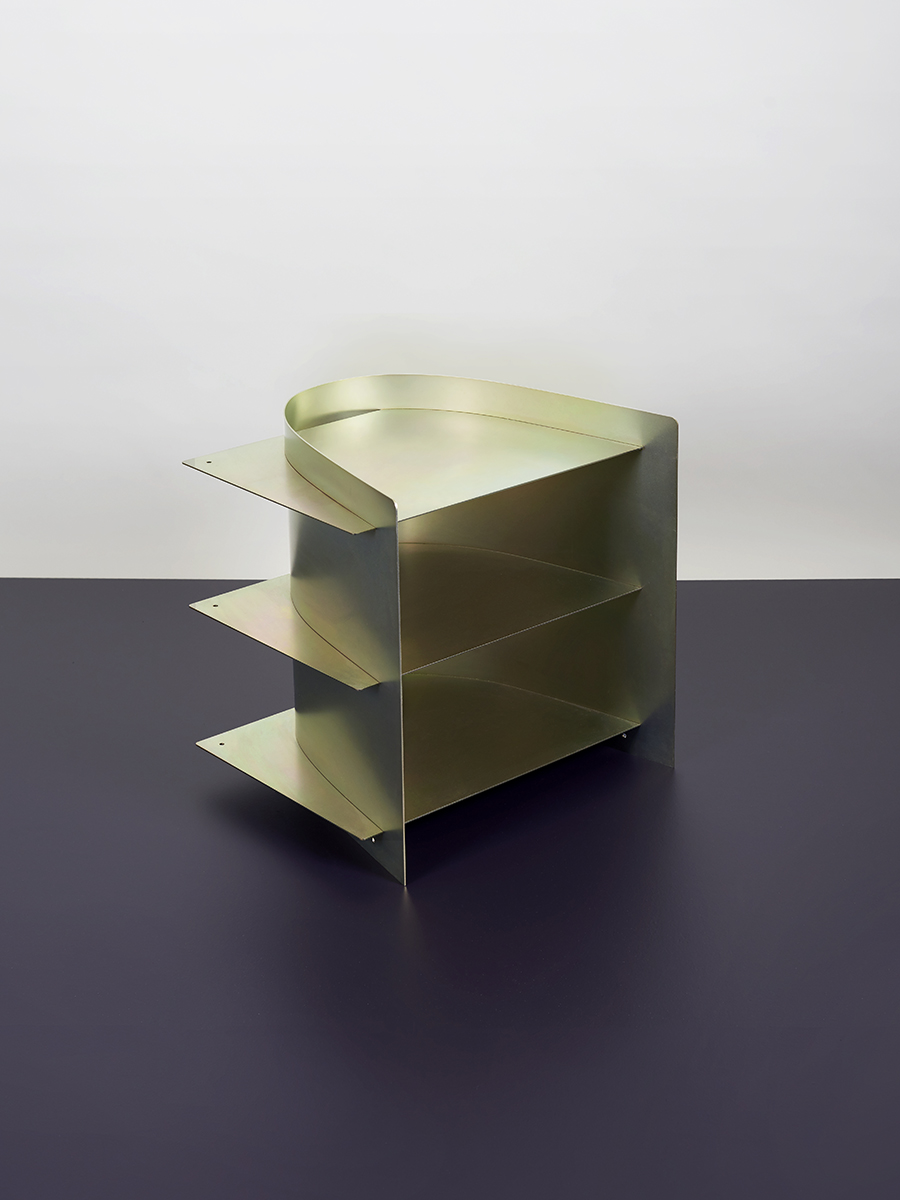
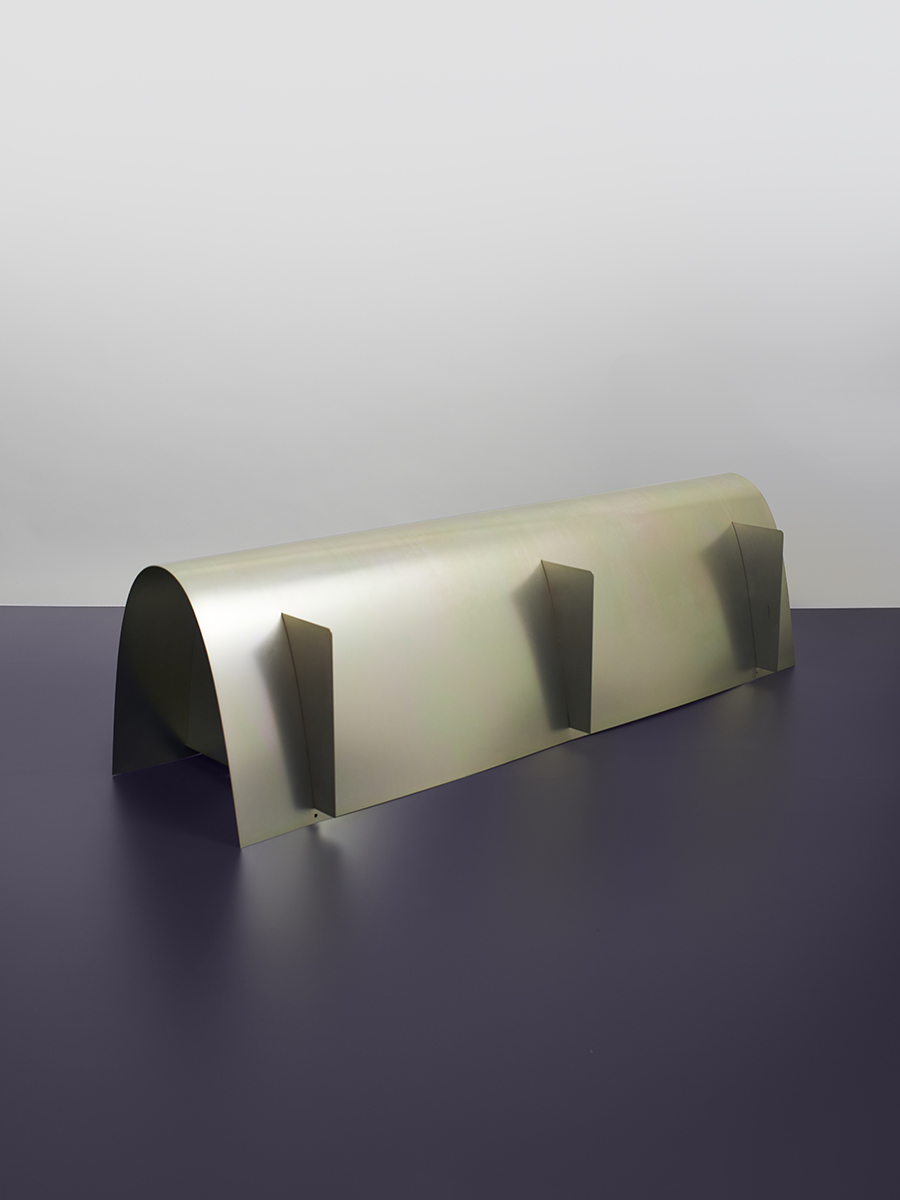
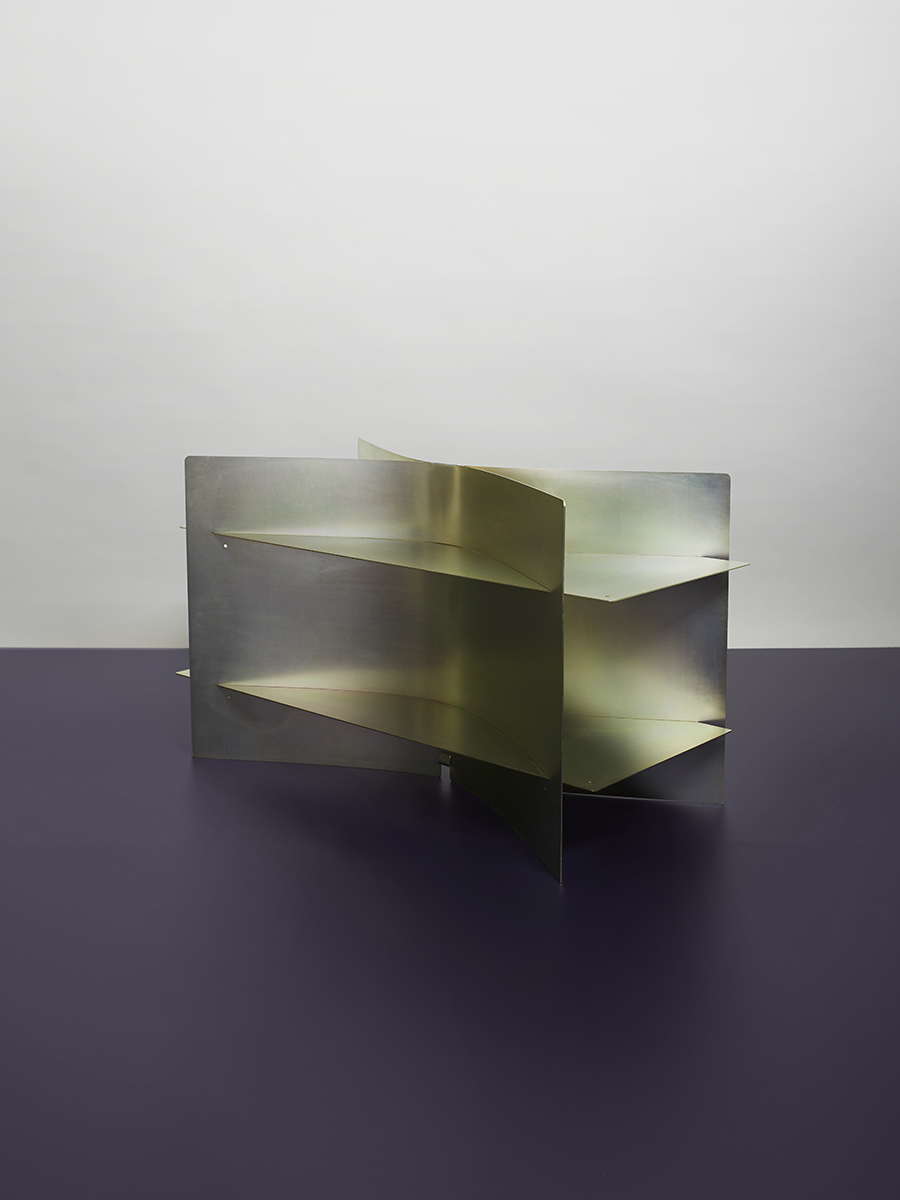
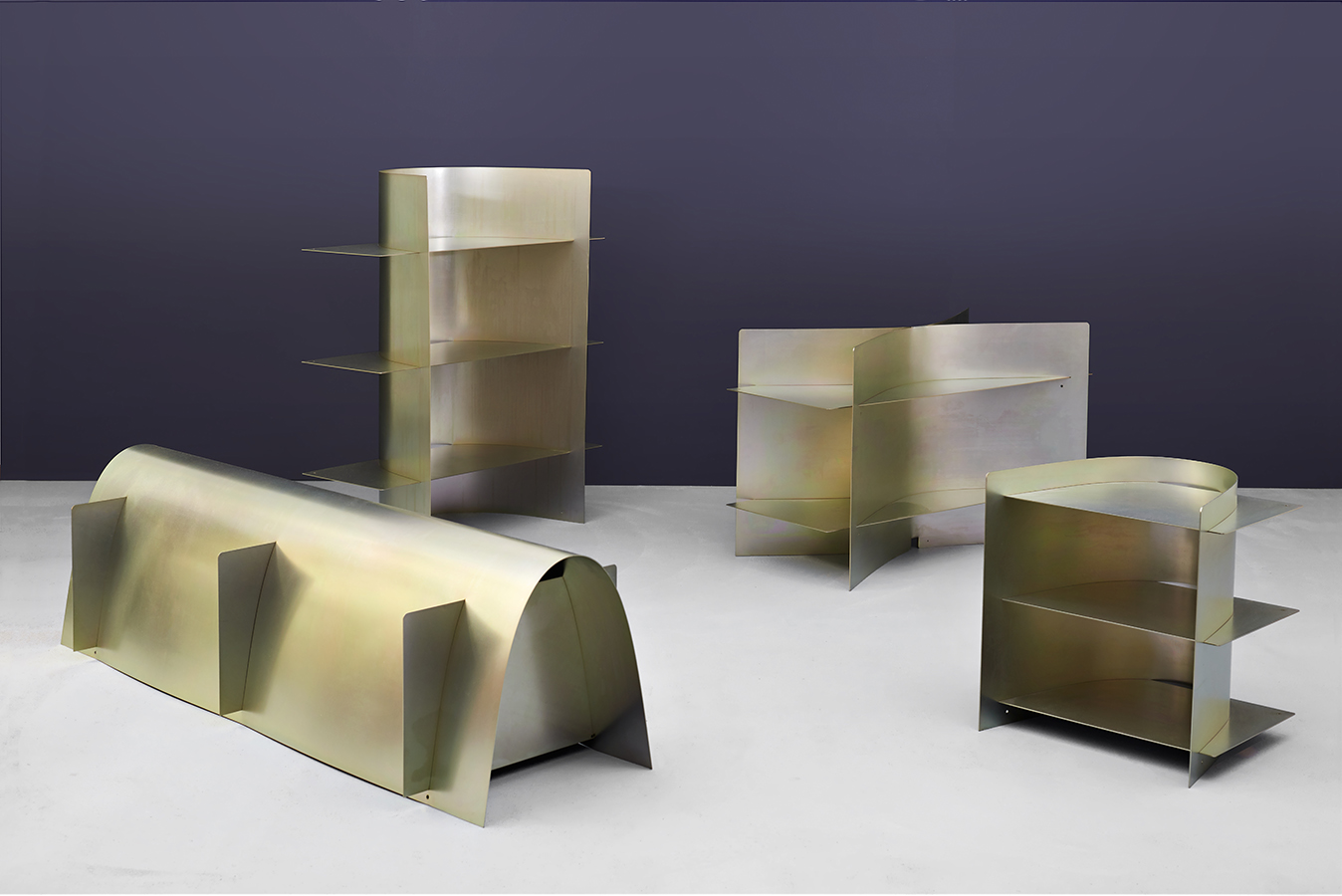
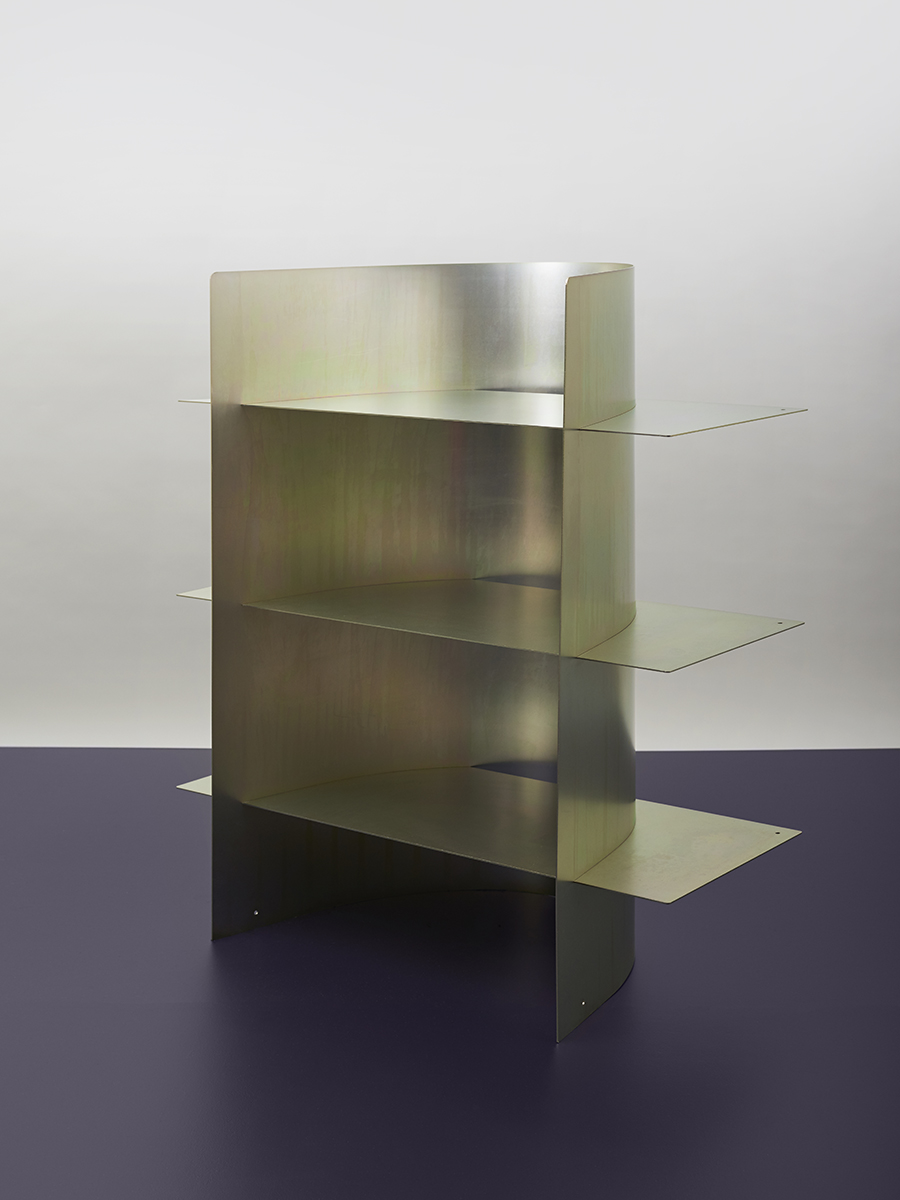
Considering the next life for materials and products imposes design parameters that Paul Coenen used to create a striking mono-material collection of steel furniture. Thin sheet metal is cut, bent into shape and slotted together. The ultra-fine zinc coating — the sort found on hinges in the hardware store — toughens the surface, prevents oxidation and radiates a subtle iridescence.





Flexible tubes of upholstery fabric made on a 3D knitting machine — think Nike Flyknits — were bound with cord to create a series of furniture that can be easily separated into component materials when needed. Like many of her Design Academy Eindhoven peers this year, Floor Skrabanja had circularity in mind from the start of the design process and used those restrictions to create simple yet elegant products.
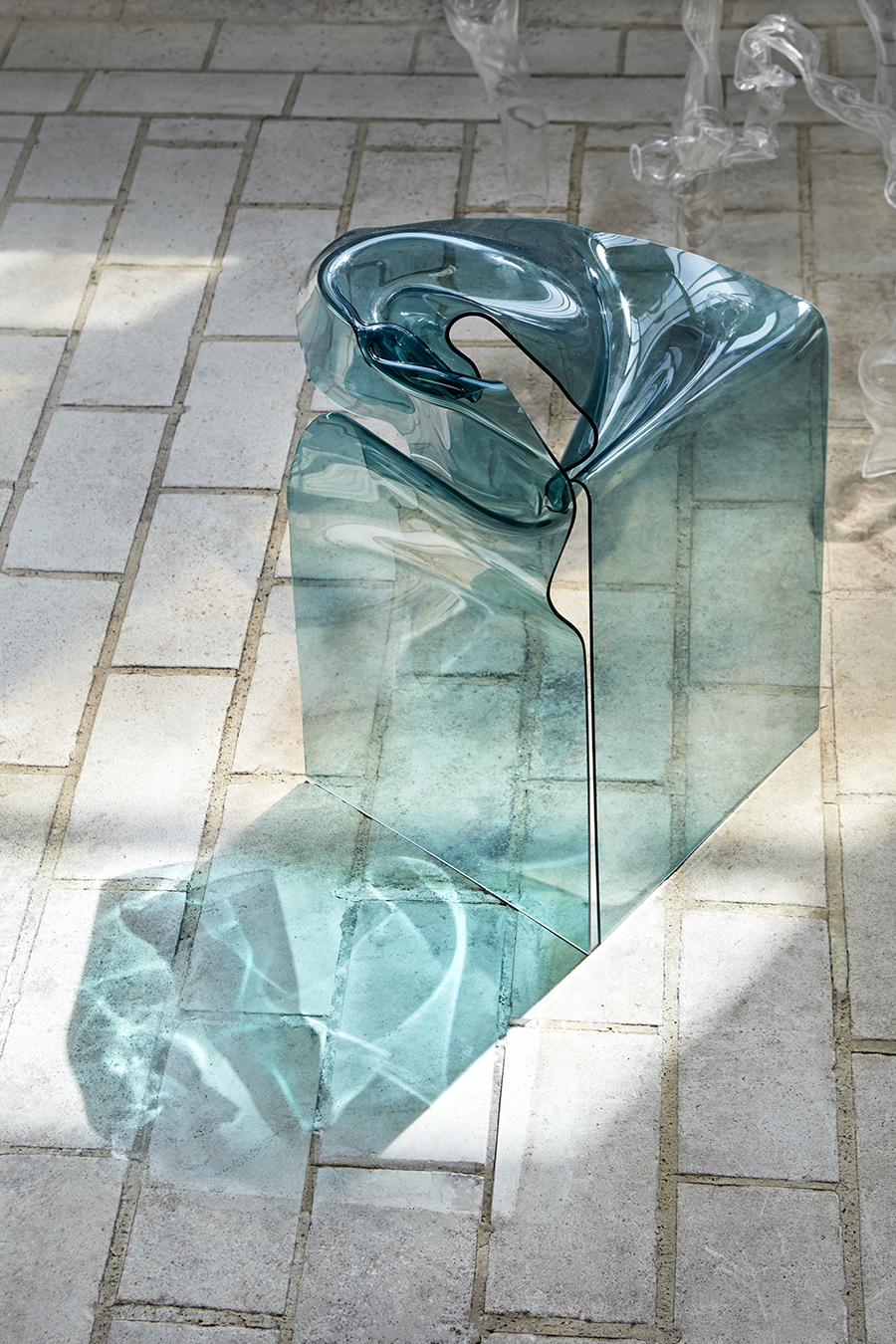
Inspired by glass-blowers in the Czech Republic, but without the time or resources to learn the skill properly, Dorian Renard turned instead to plastic. Obsessively, Renard heated and formed plastic tubes and sheets, developing his own techniques along the way that push the material into new forms. The unpredictable and undulating shapes tread the line between sculpture and function, allowing the contentious material to be seen very differently.
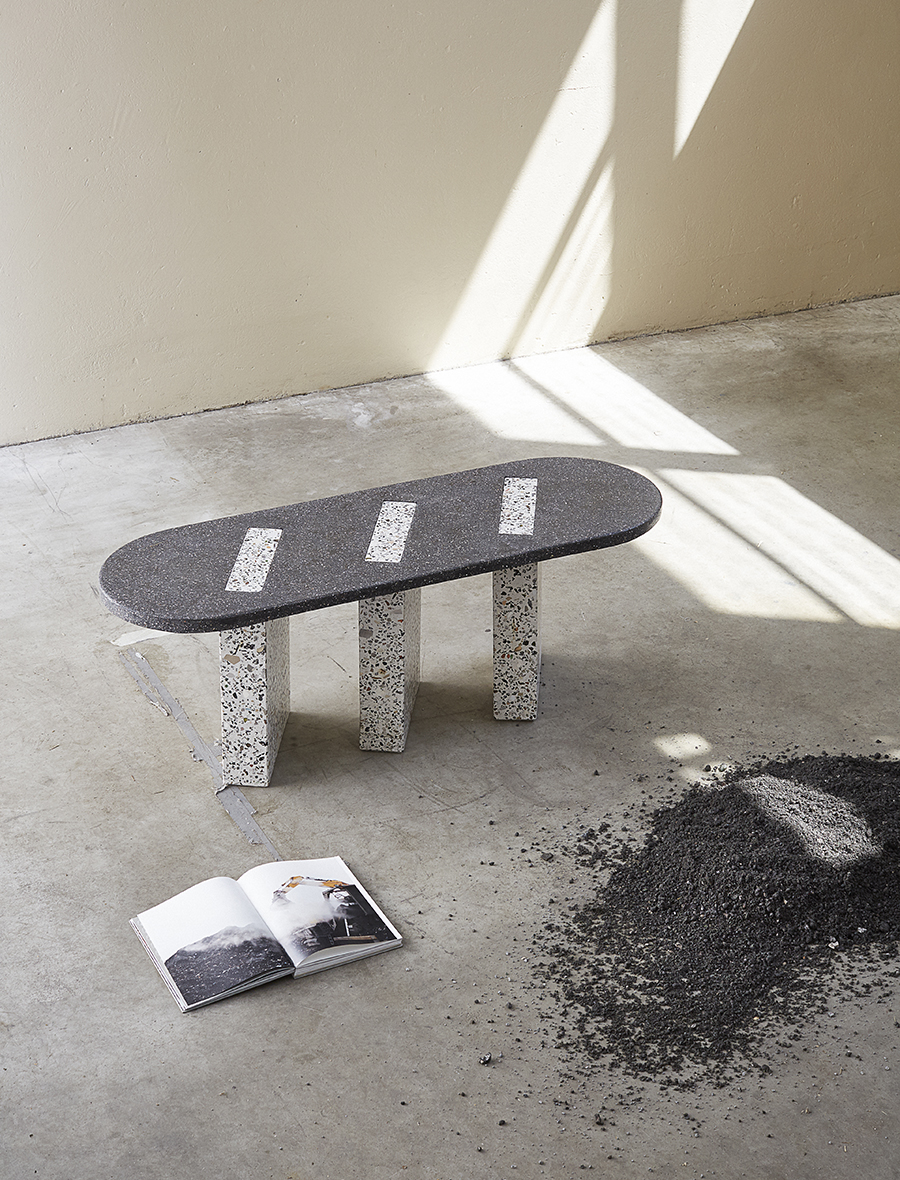
The material that remains after household trash is incinerated is known as bottom ash. Carissa Ten Tije incorporated this unappealing material into furniture to show that even the most unappealing waste can be transformed into refined products.
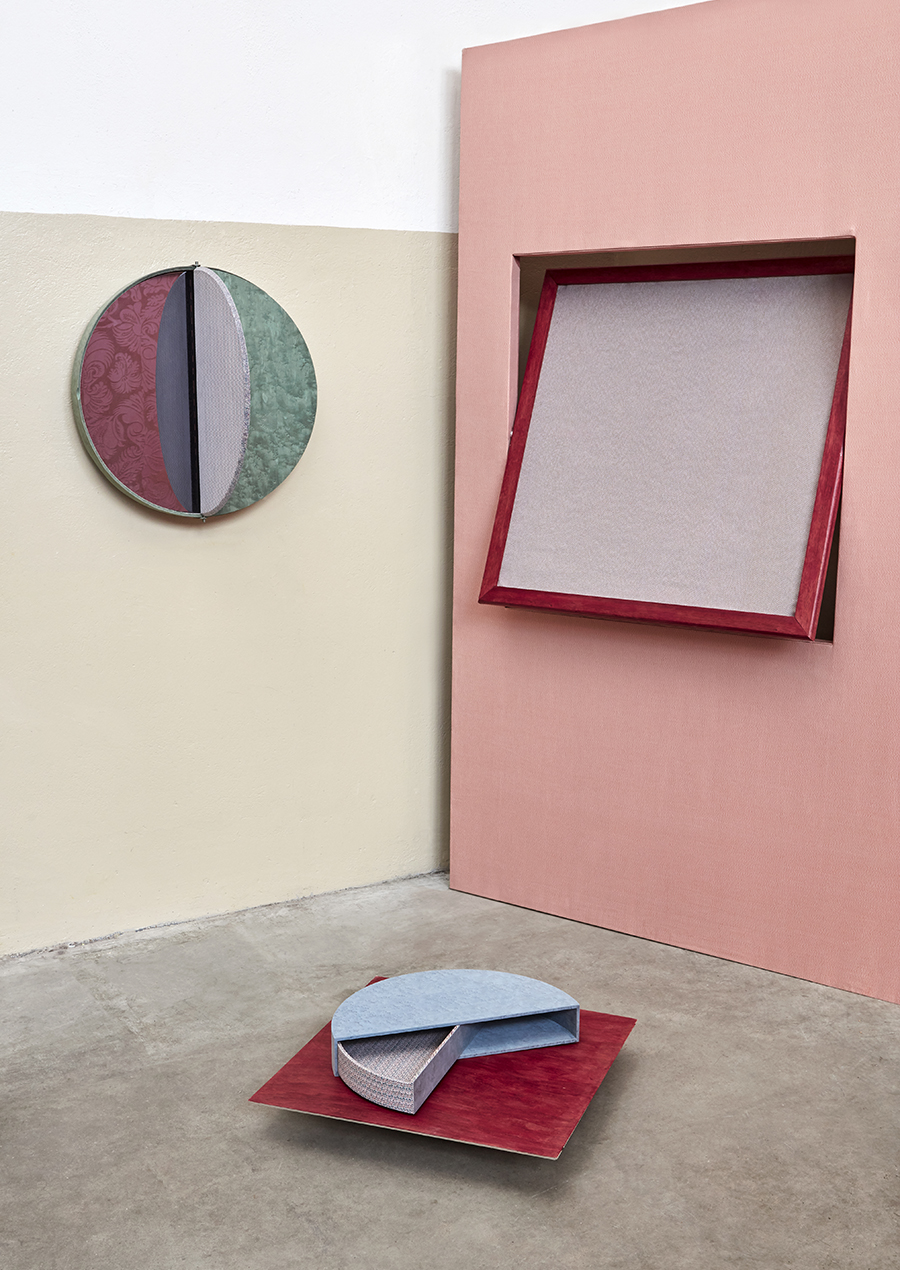
Clémence Plumelet aims to capture the intricacy of early 20th-century craft techniques like straw marquetry using modern materials. By laminating colorful veneers together — supplied by Como-based veneer specialists, Tabu — Plumelet creates a decorative material that reveals an array of patterns depending on the direction of the cut.
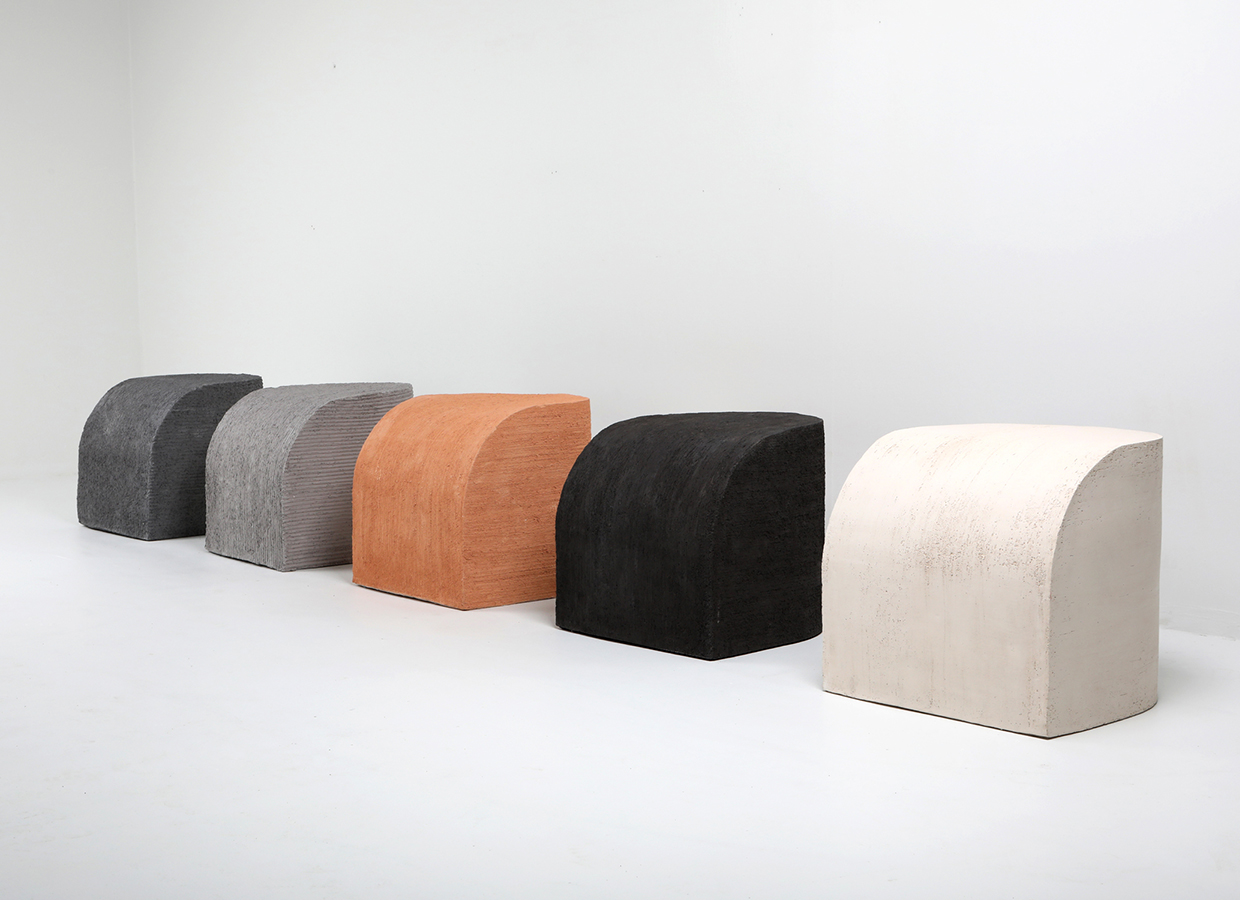
Rino Claessens developed ceramic stools in five different colored clays that have a satisfying scraped texture running in two directions. Claessens aims to bring a tactile and physical connection to furniture using an honest form, material and texture.
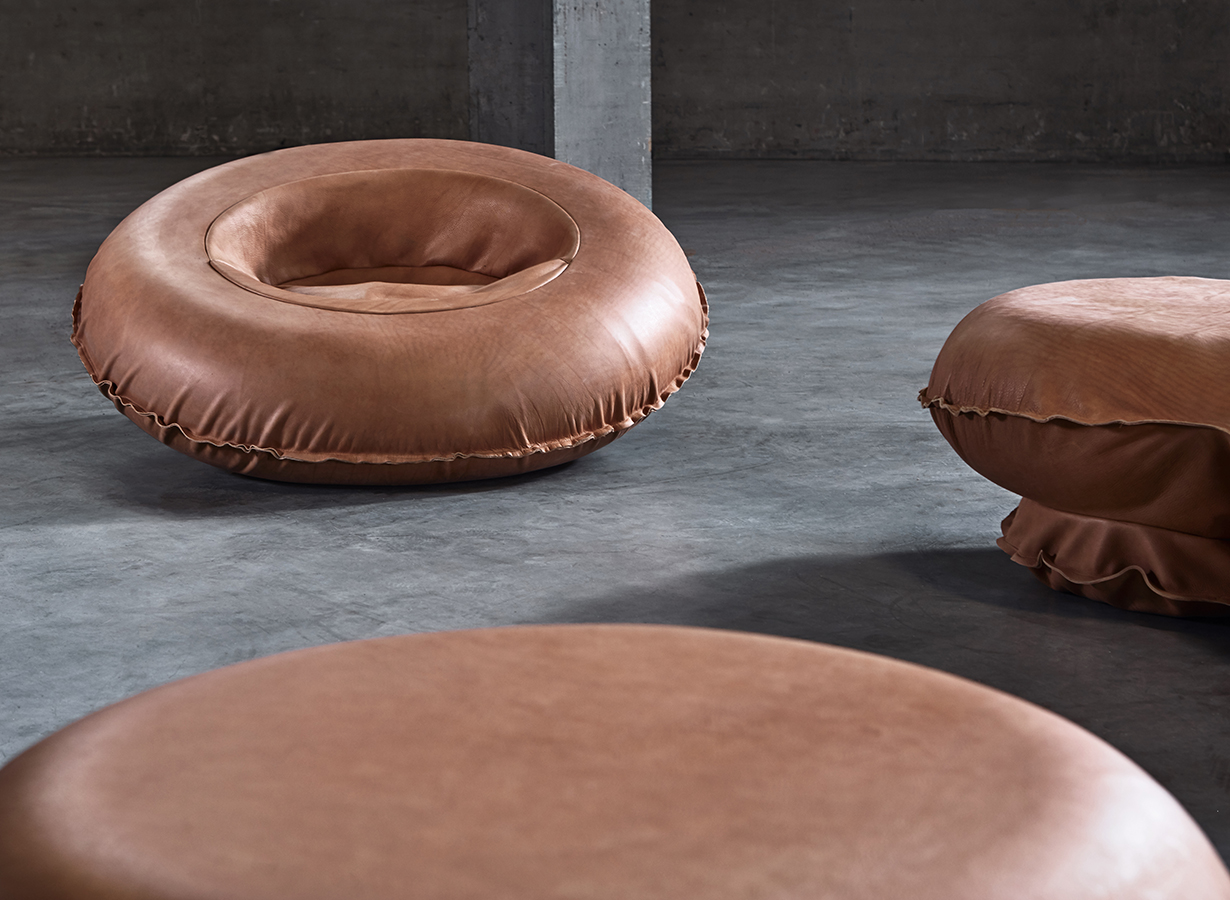
Inflatable furniture is usually only used temporarily, and often made from poor quality materials which perish. Seeing an opportunity to make longer-lasting inflatable furniture, Satomi Minoshima created leather inflatables that are designed to last. The pieces could also work well for smaller spaces that need to adapt to different functions.
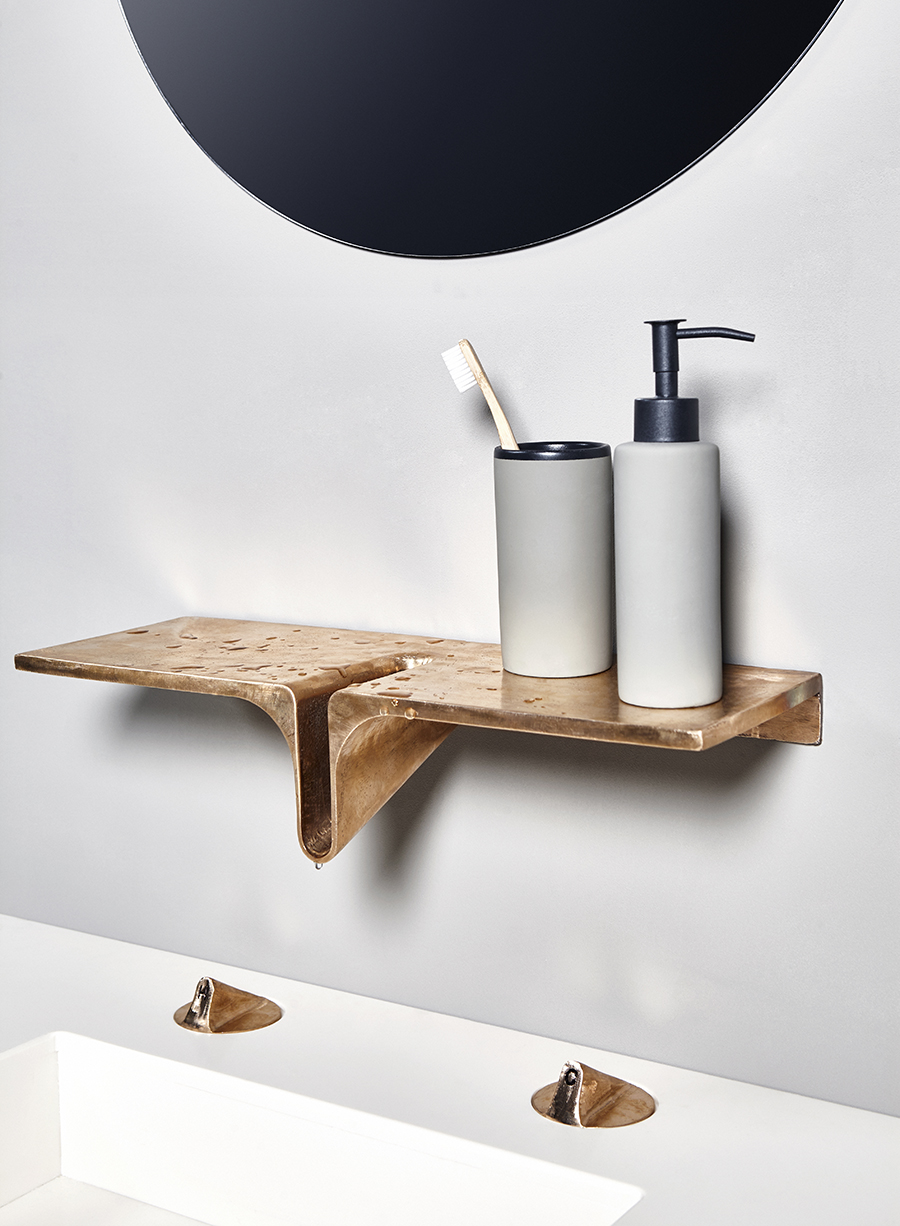
By stripping away protective coatings and shunning practicality, Pauline Neiser allows oxidation to take its natural course on her bathroom brassware designs. The fluid forms, coupled with the interaction of water and raw brass, copper and bronze brings a sculptural, timeless feel to the bathroom.
The Rietveld Military Chair
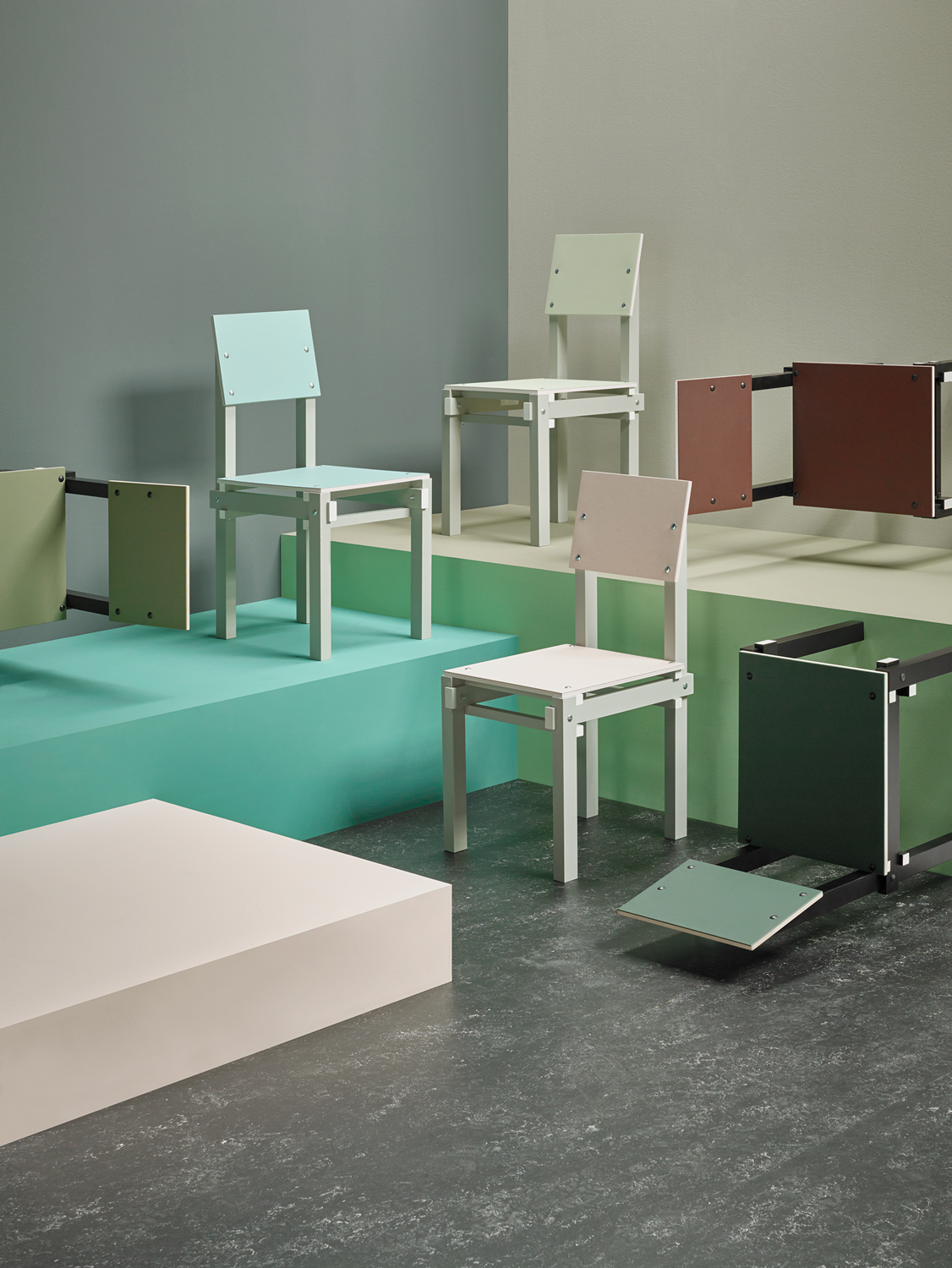
The Military Chair designed by Gerrit Rietveld in 1923 was revived by designer Thomas Eurlings with the addition of furniture grade linoleum made by Forbo Flooring. The grey frame was paired with Powder, Pistachio and Aquavert linoleum for a fresh botanical palette, while the black frame was combined with deeper hues of Conifer, Burgundy and Olive.
Baars & Bloemhoff
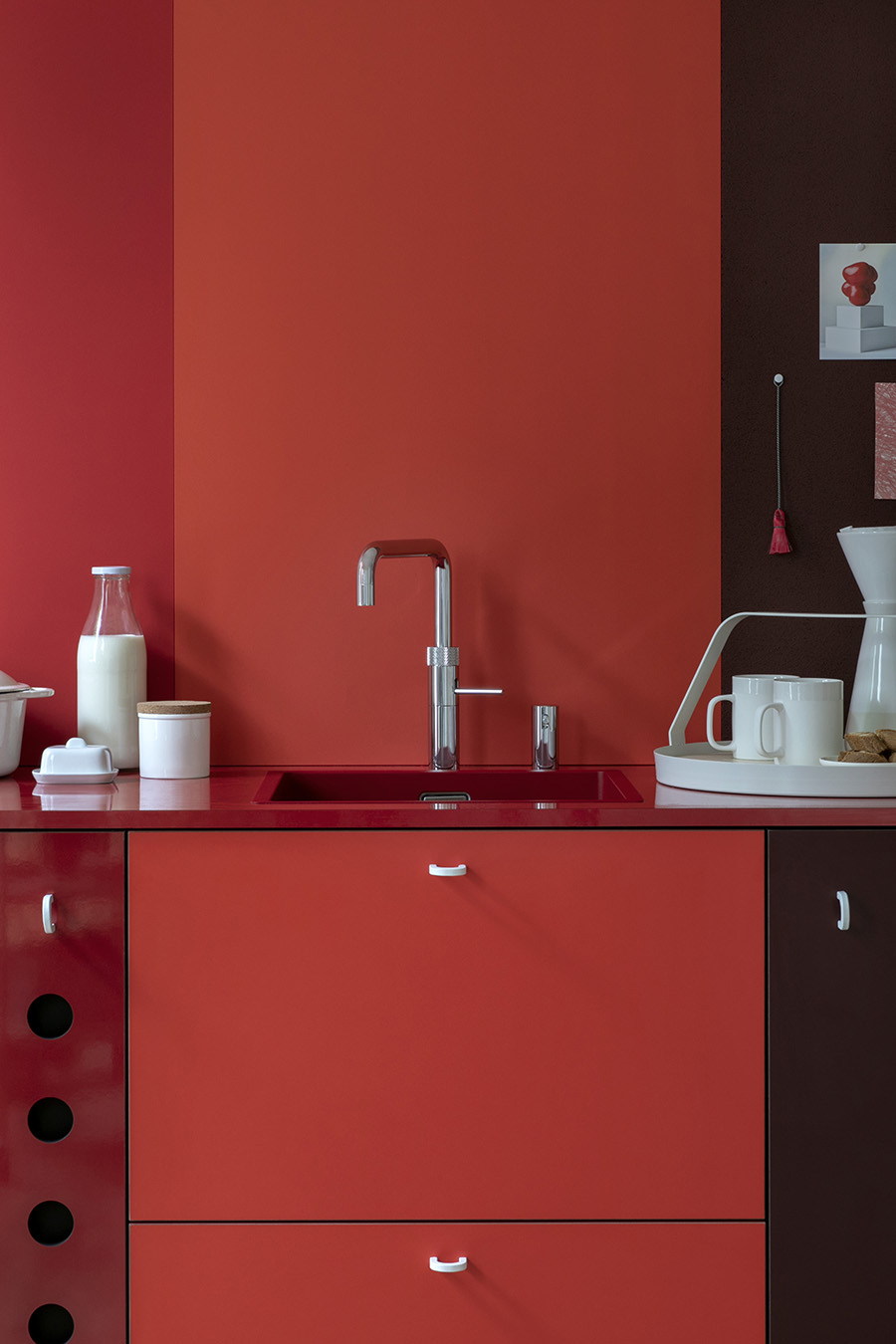
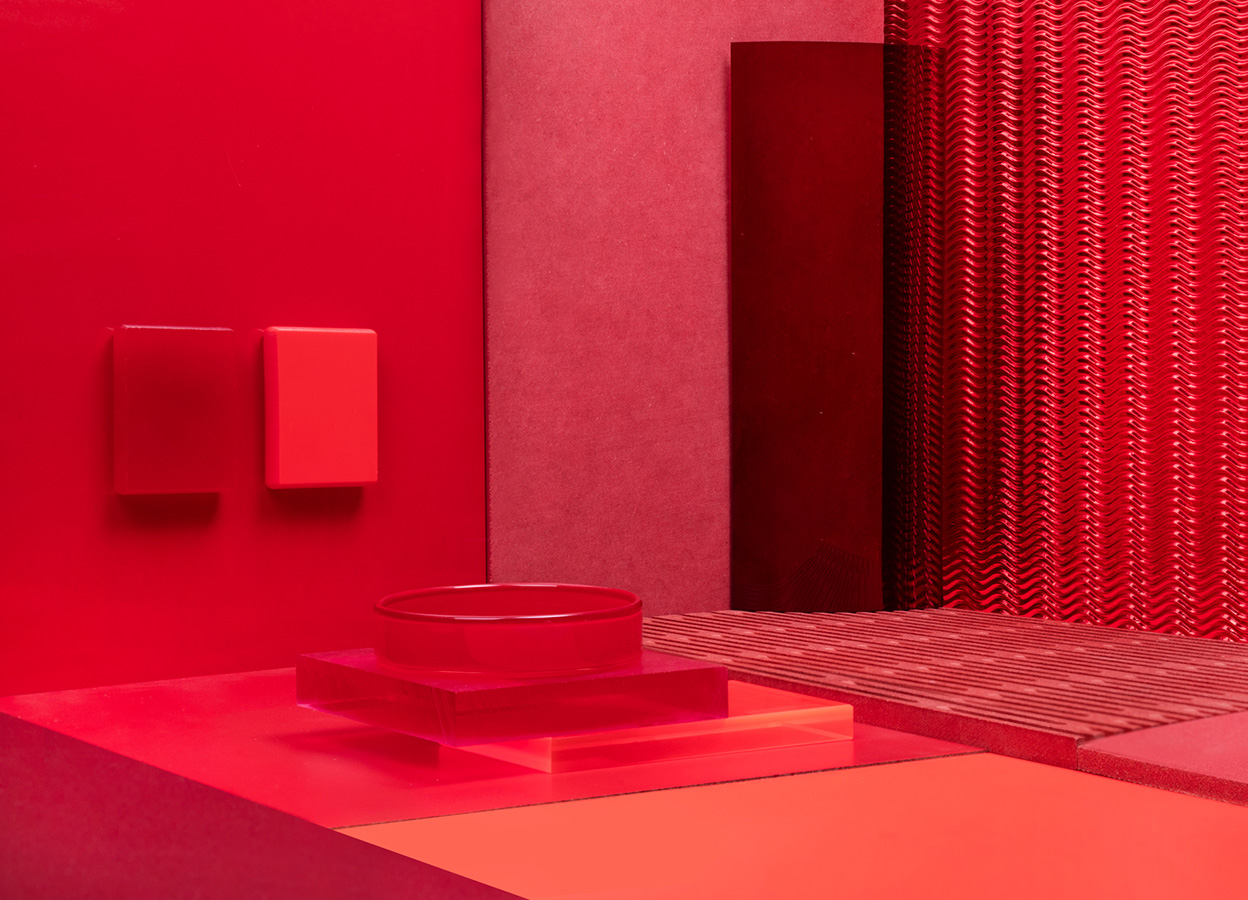
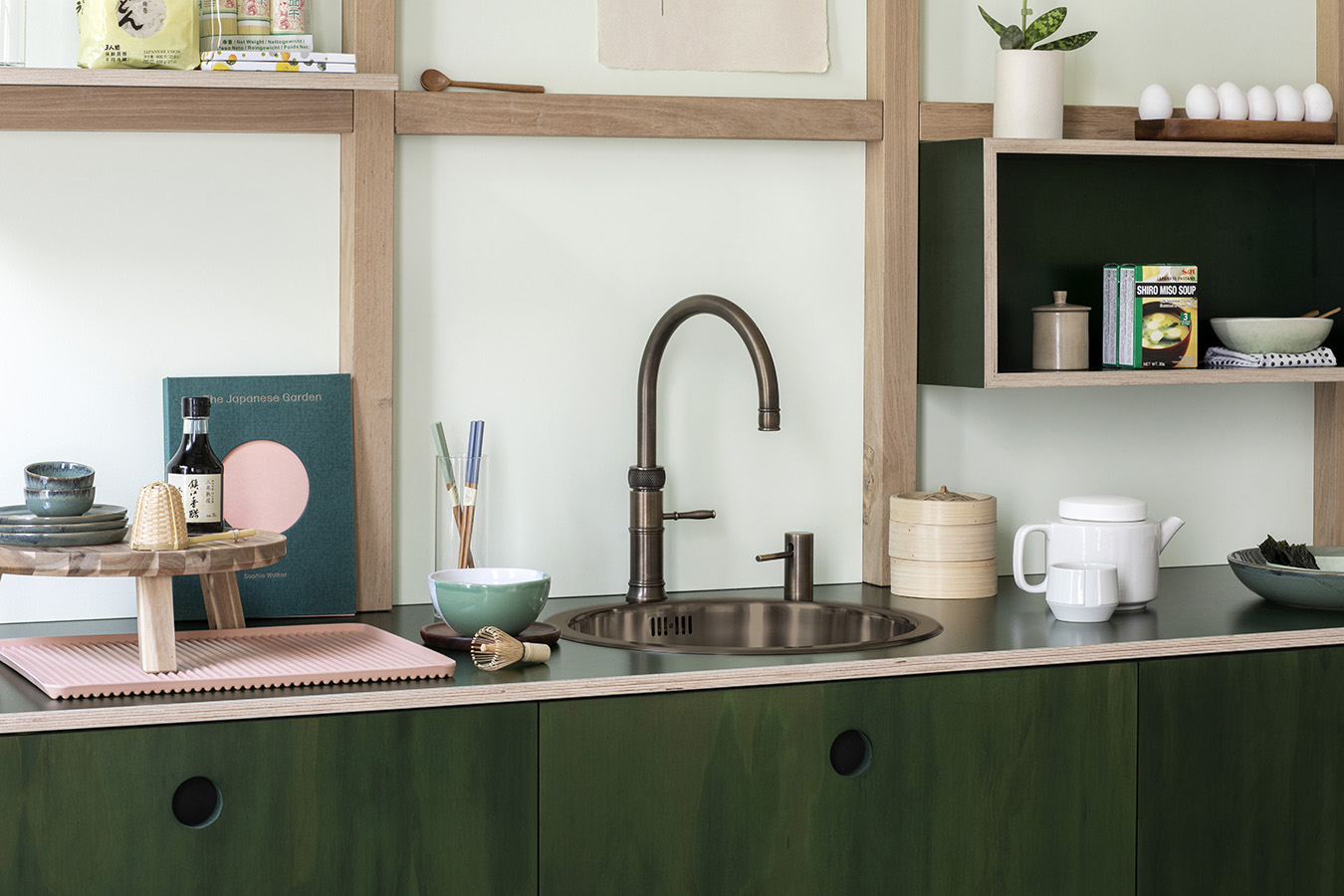
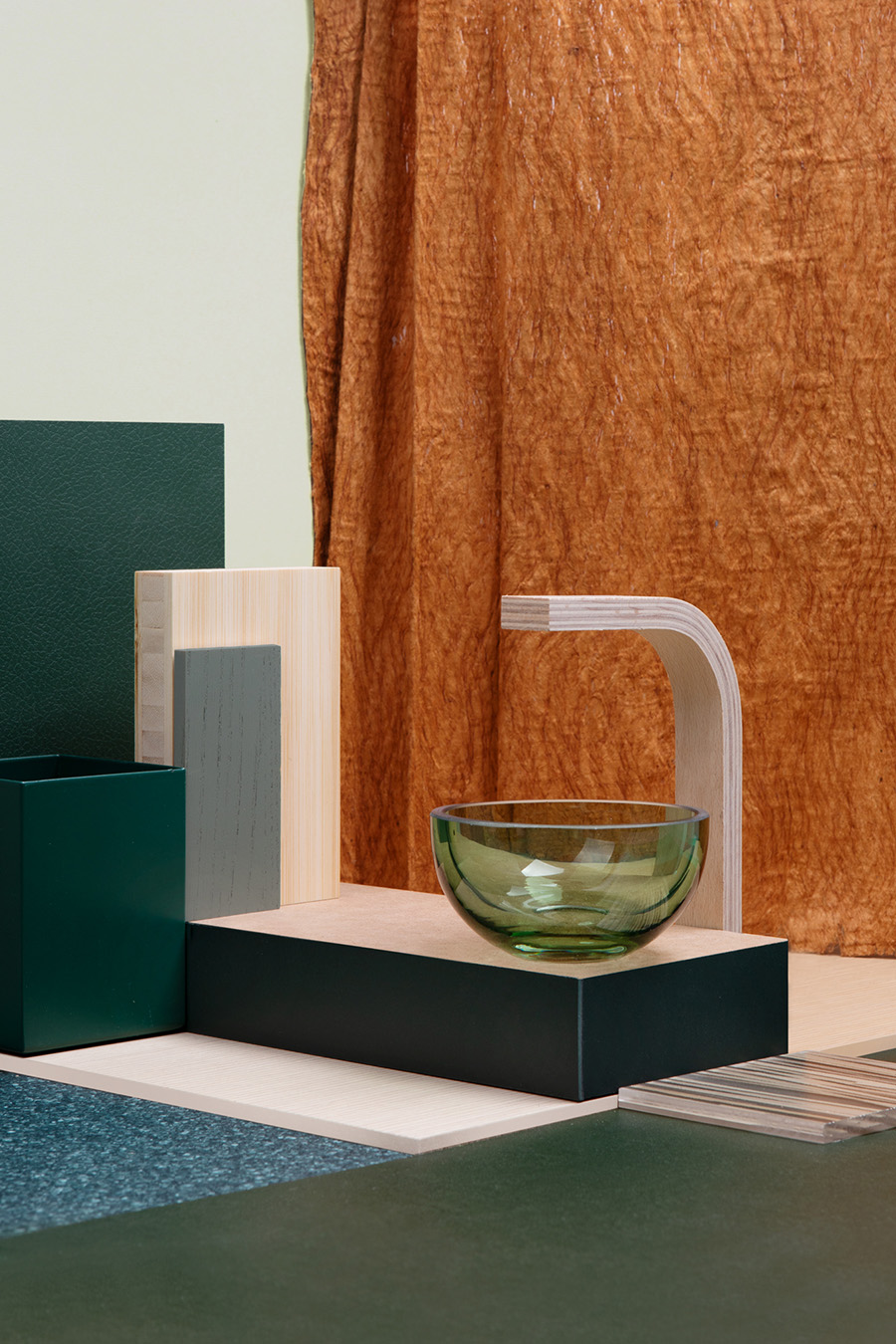
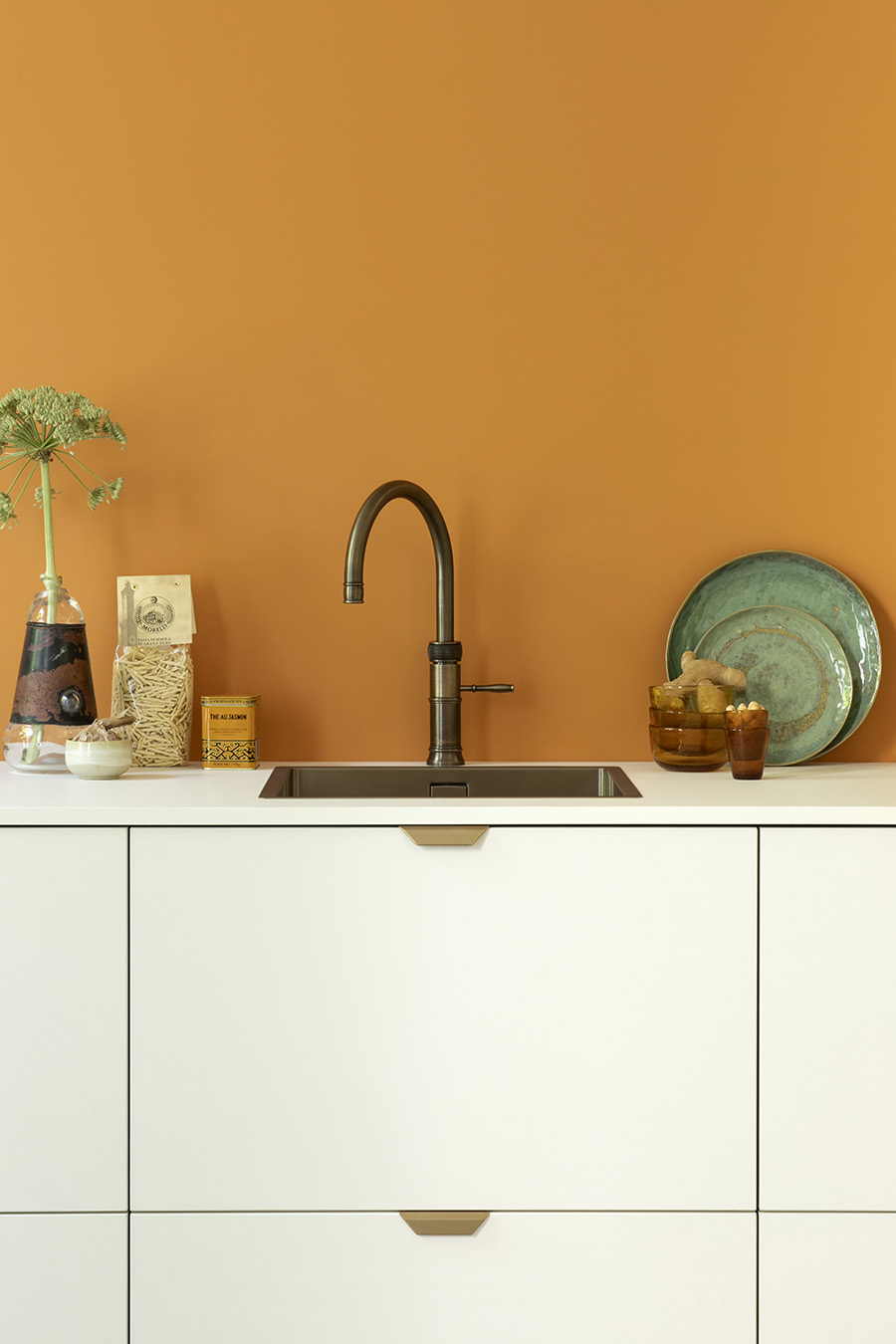
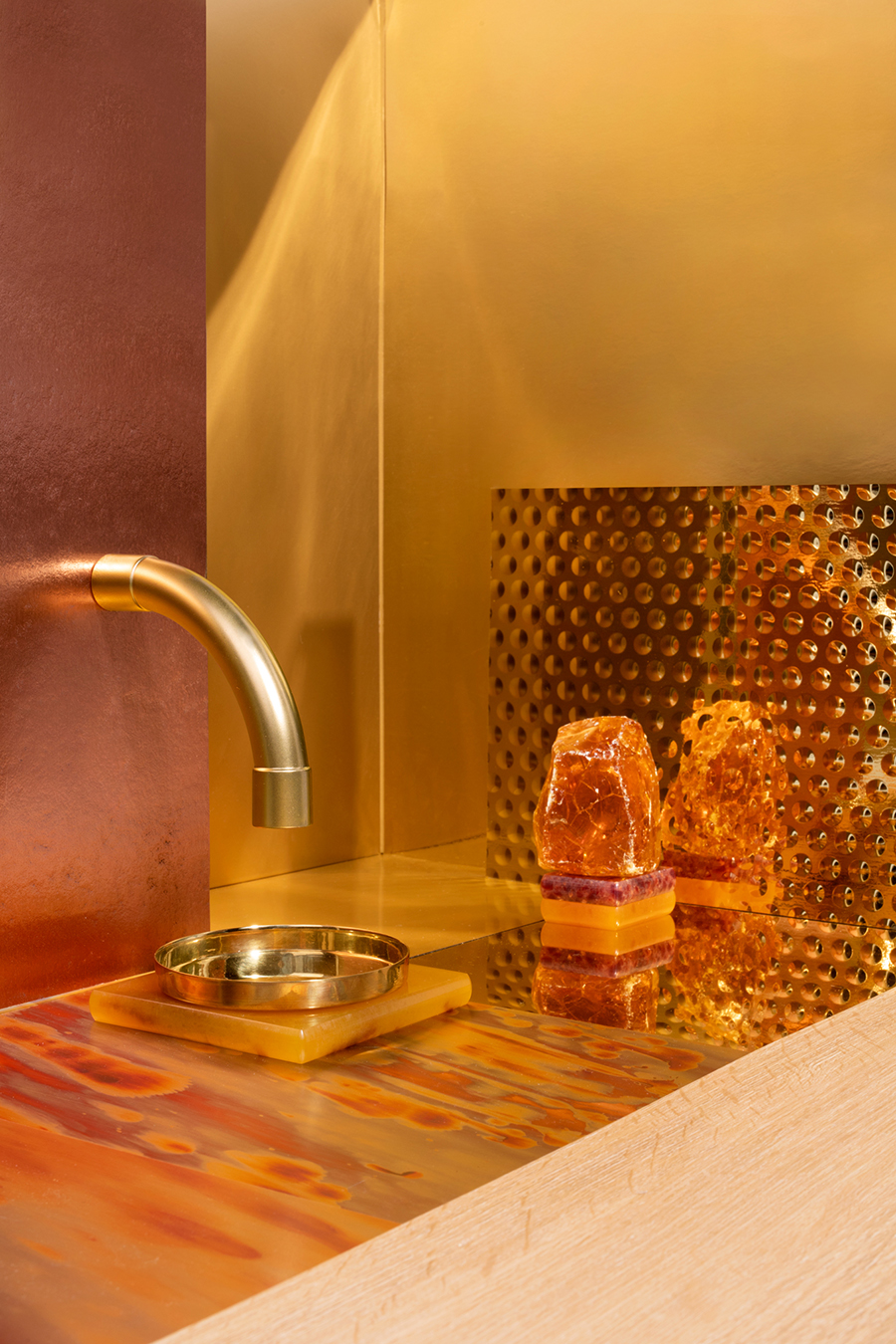
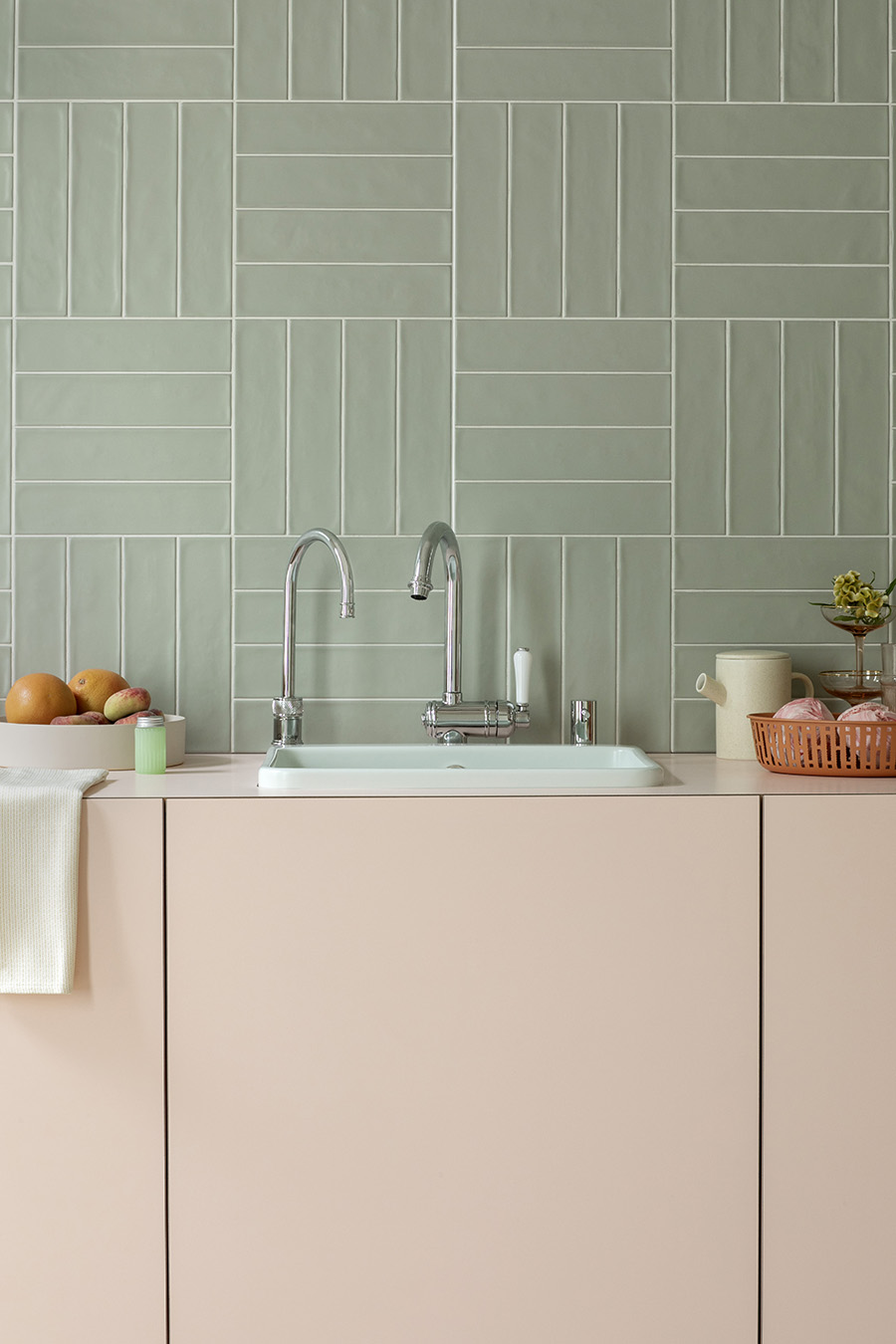
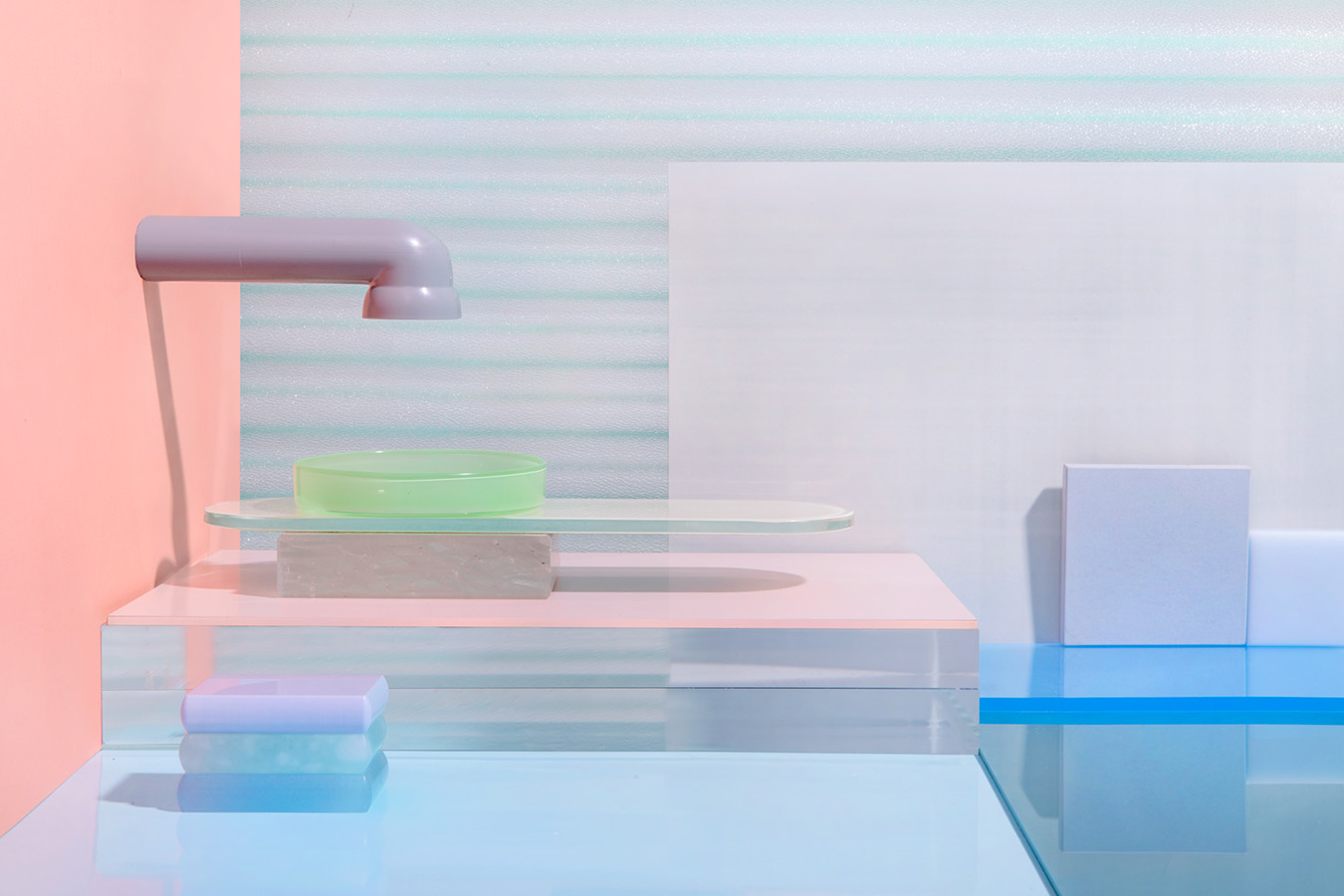
Material aficionados Baars and Bloemhoff curated eight rooms that expressed what the kitchen of the future might look like using the materials that they supply. The spaces were drawn together using bold color and styled with lighting and accessories from the likes of Raw Color and Floris Wubbens.
Alissa + Nienke
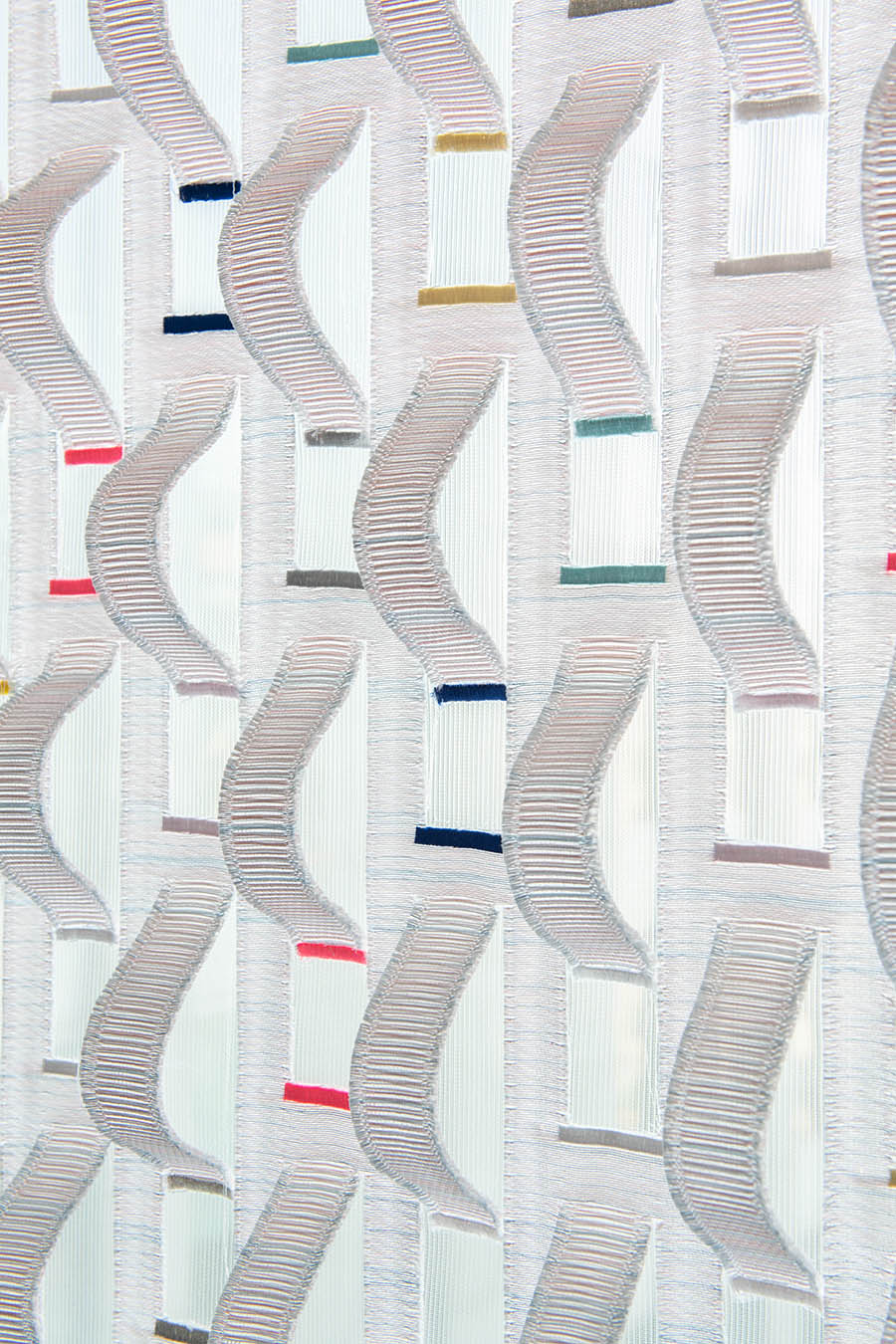
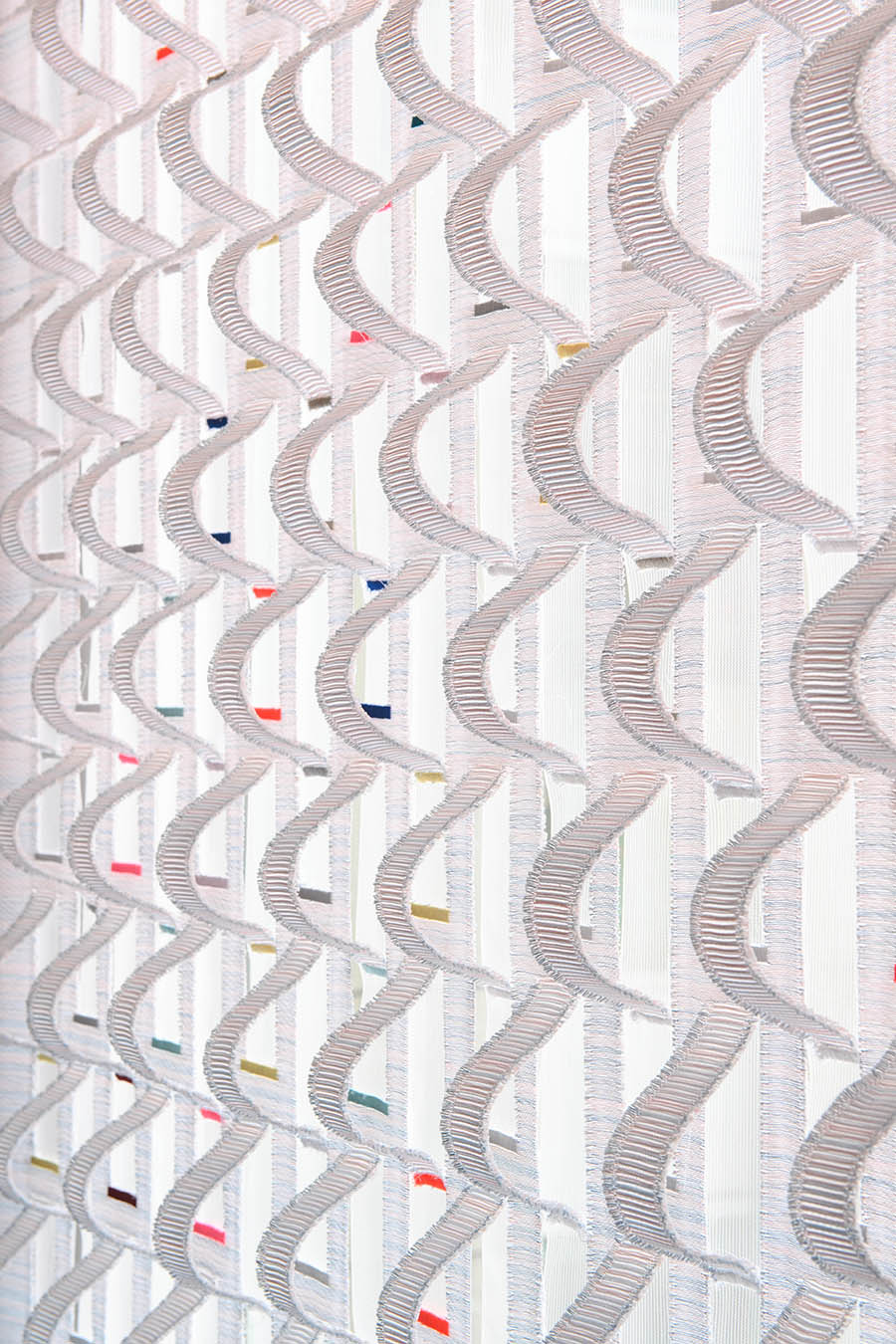
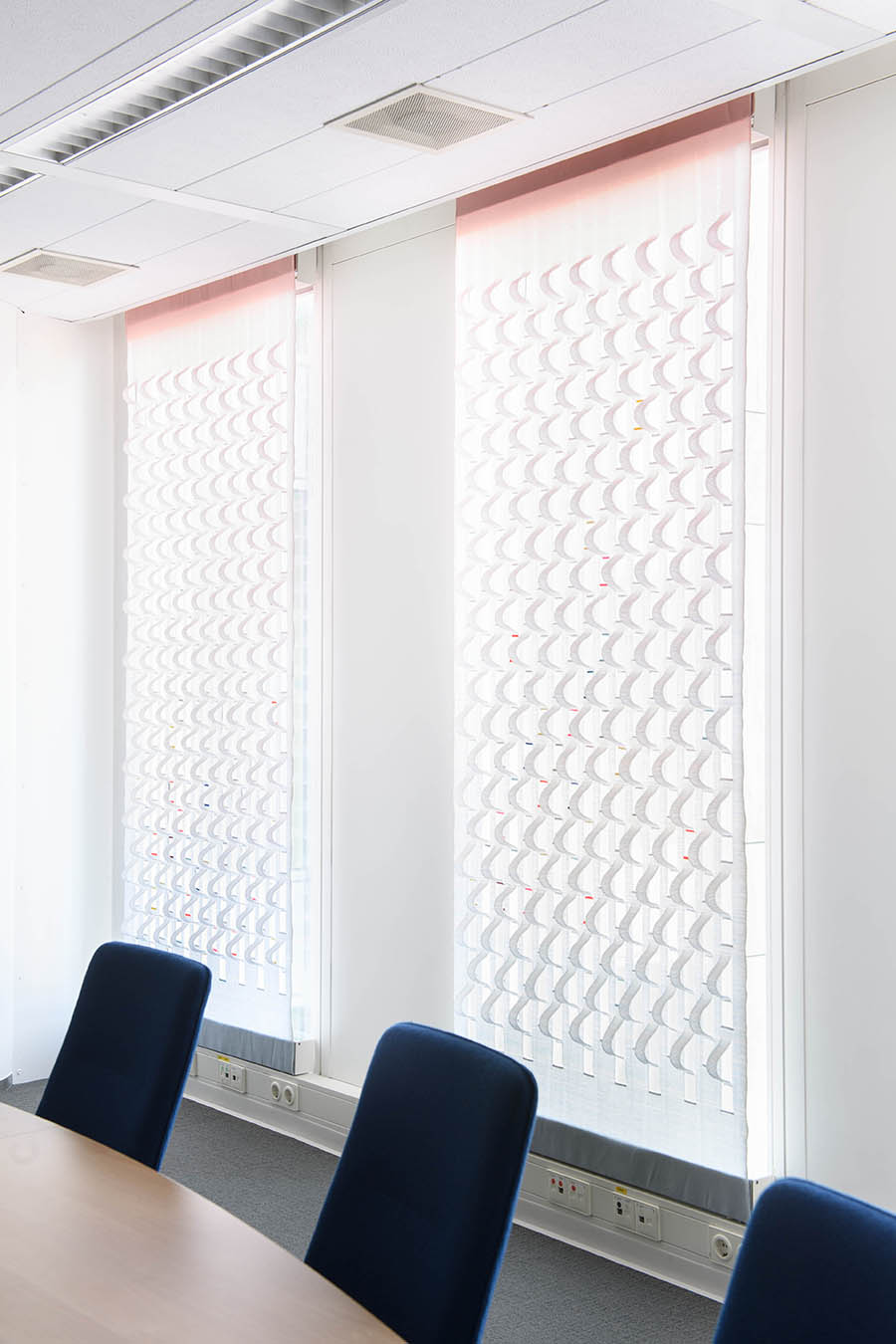
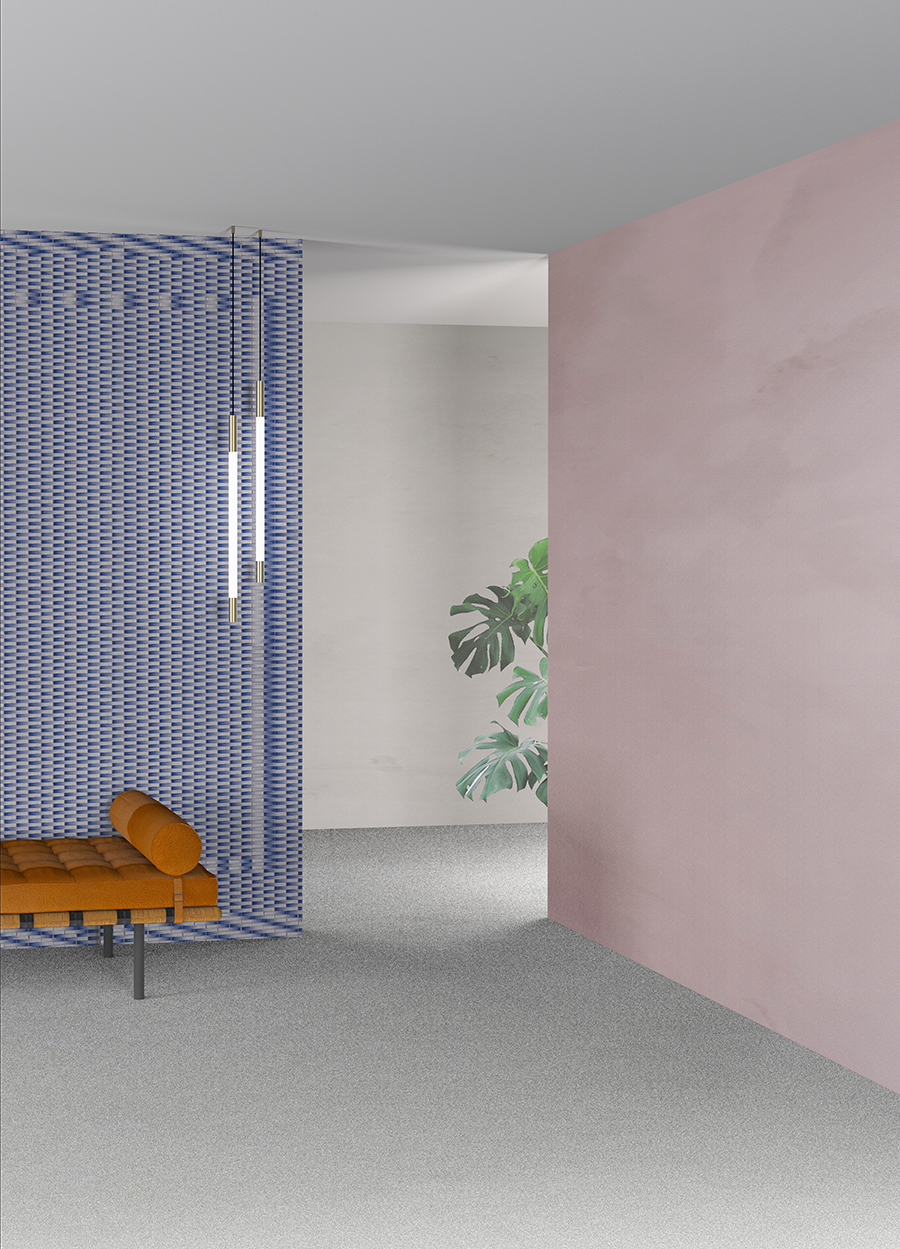
Design duo Alissa + Nienke showed two new projects marking a foray into textile design. The Sun Show is a window blind designed to automatically control sunlight. Two layers of textiles are cut and stitched together in places so that they can move up and down – altering the opacity of the window blind as they do so. The duo also showed Fringes and Floats, a series of jacquard textile hangings made in collaboration with 3D weaving specialists EE Exclusives. Experimental swatches were shown alongside largescale pieces that featured just about every technique they squeeze on – making for a textural, and beautifully intricate design.
Jordi Verbaan
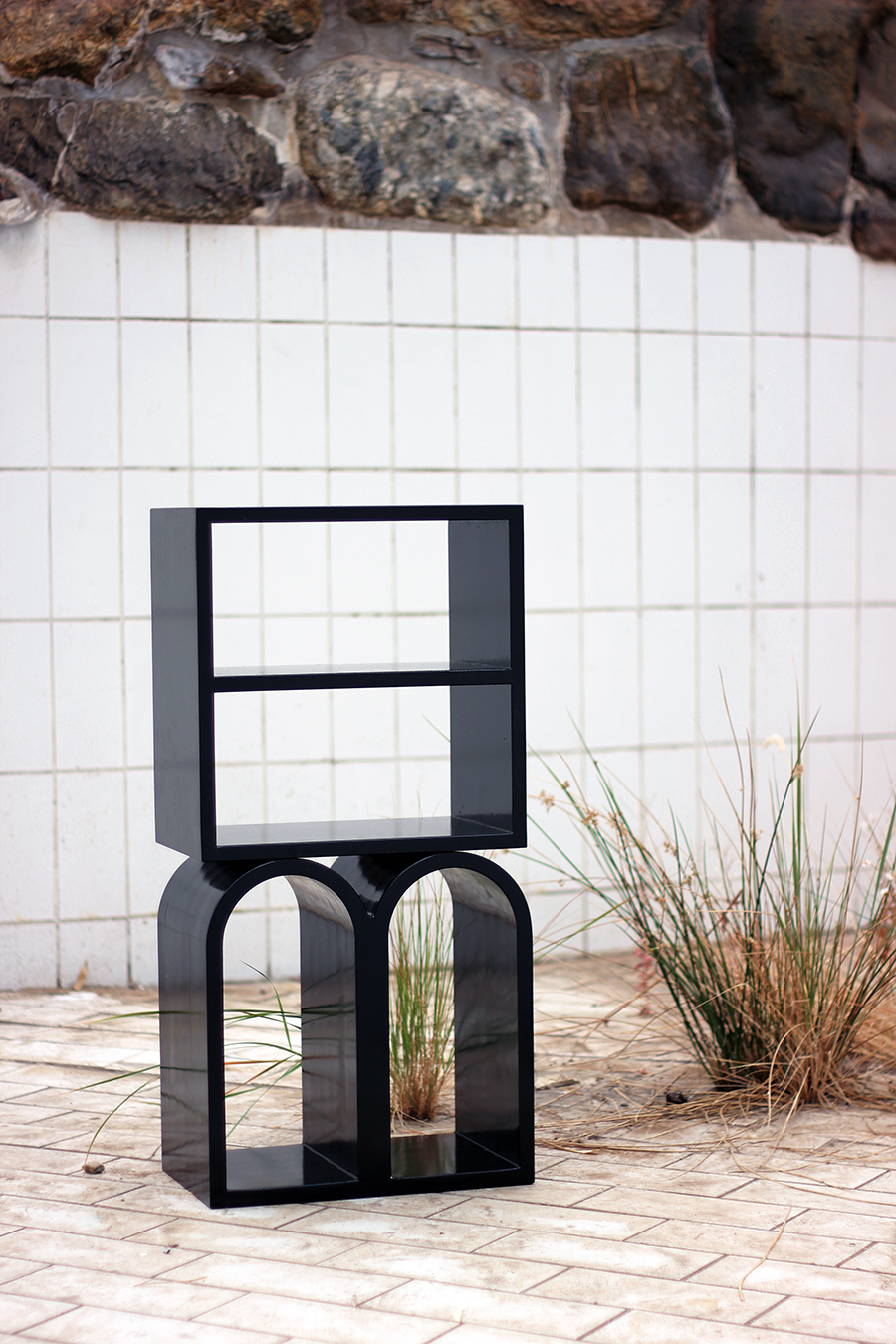
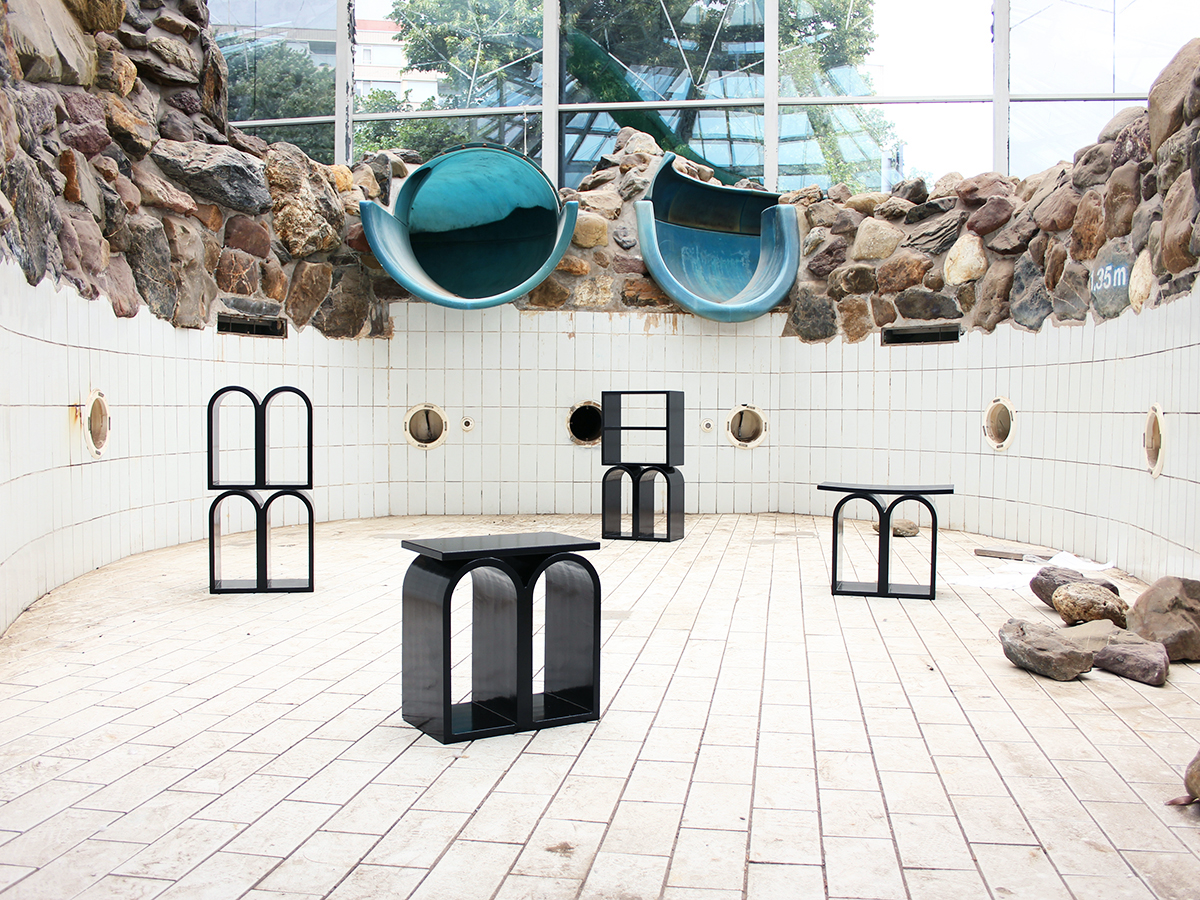
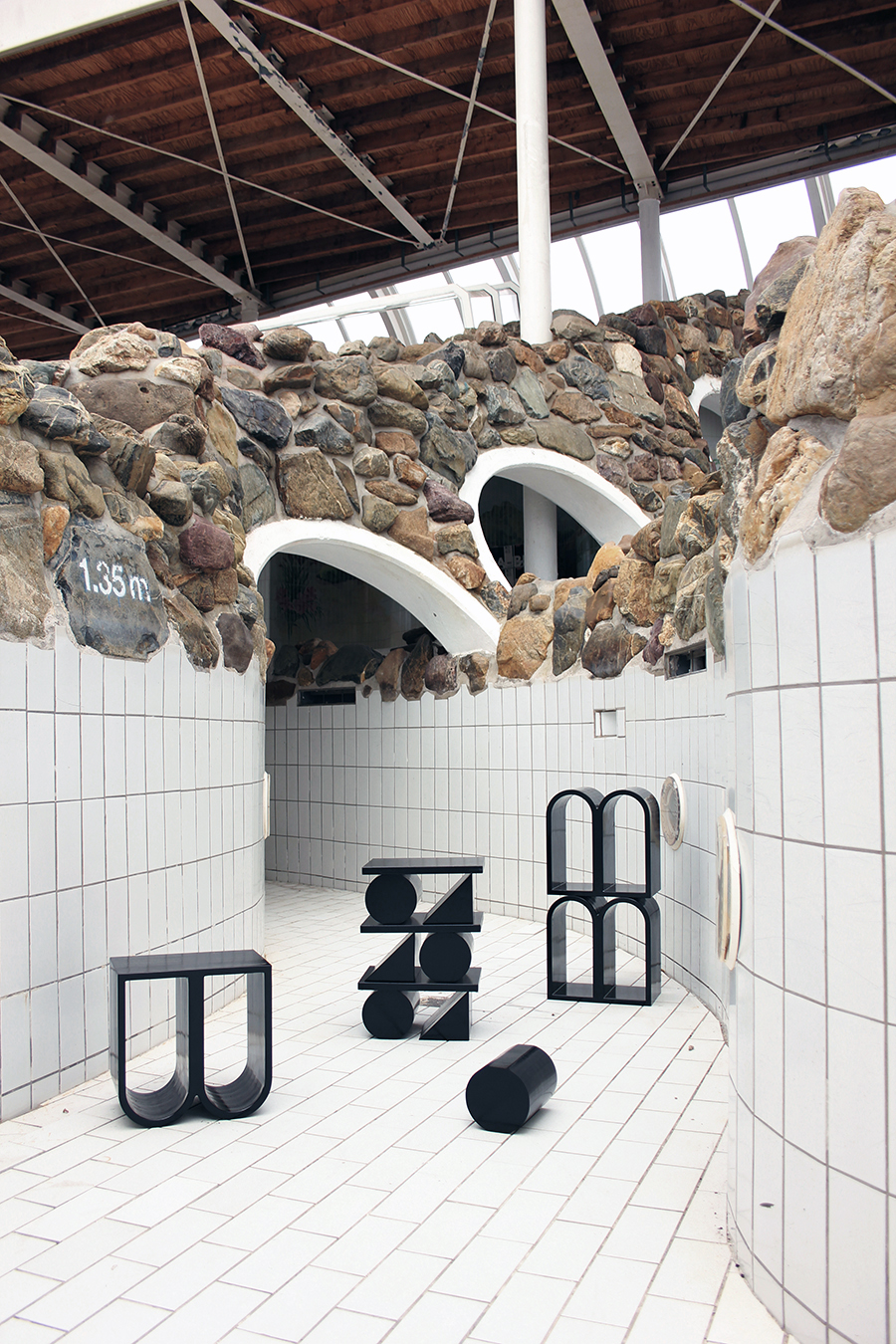
As an artist and artisan carpenter, Jordi Verbaan applies a graphic, sculptural sensibility to furniture. The pieces are purposefully ambiguous, sitting just as happily in a domestic space as an art gallery.
Rive Roshan
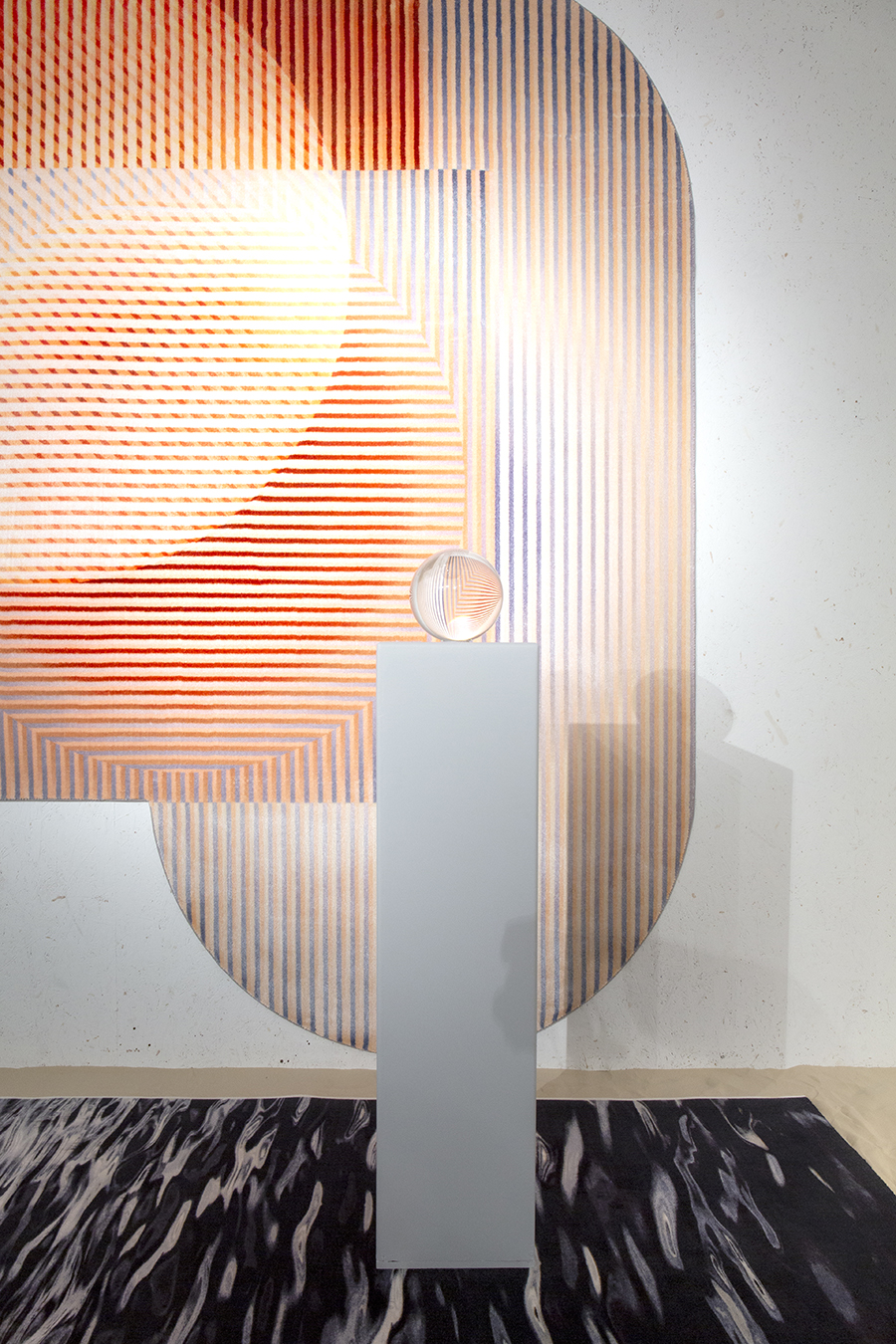
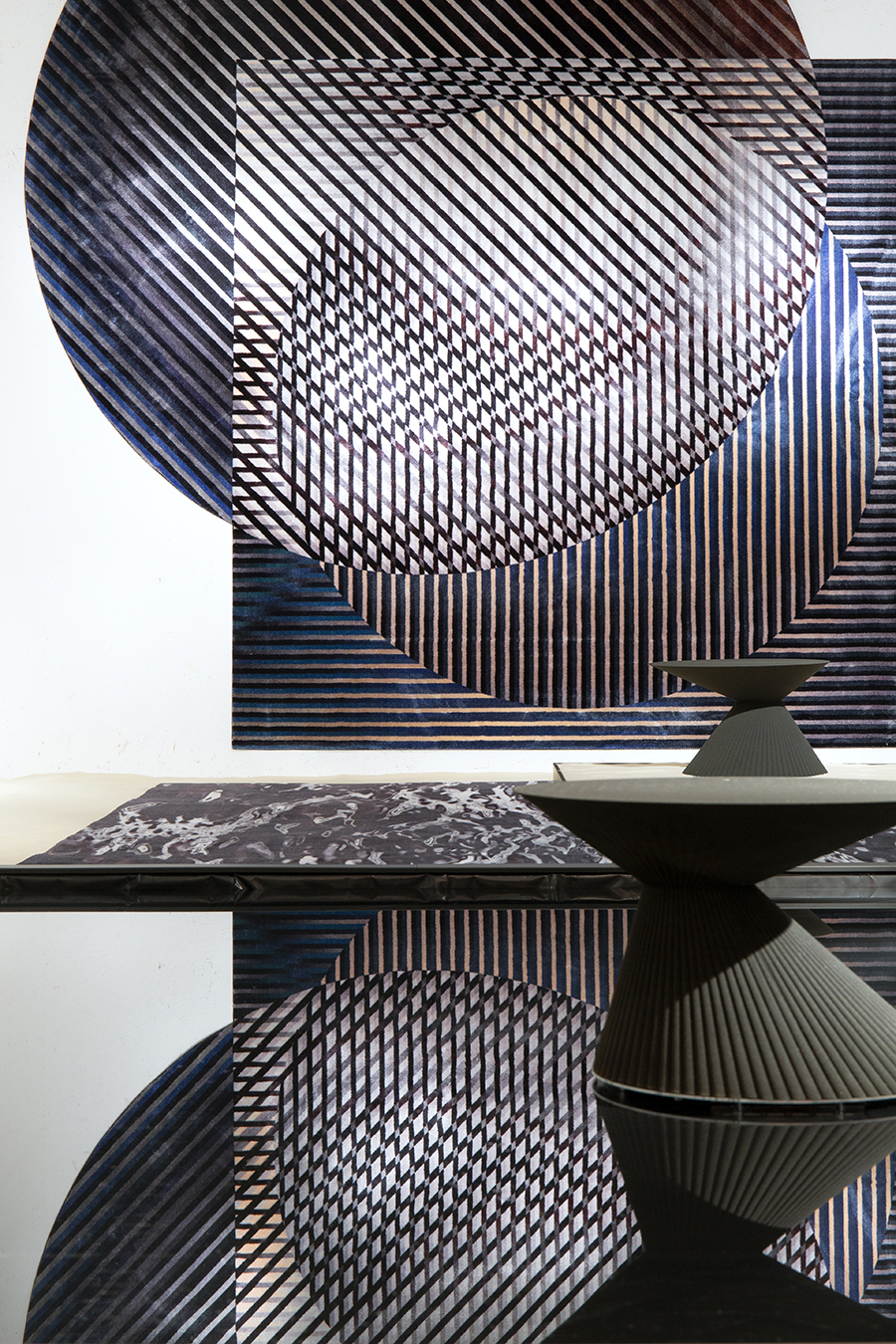
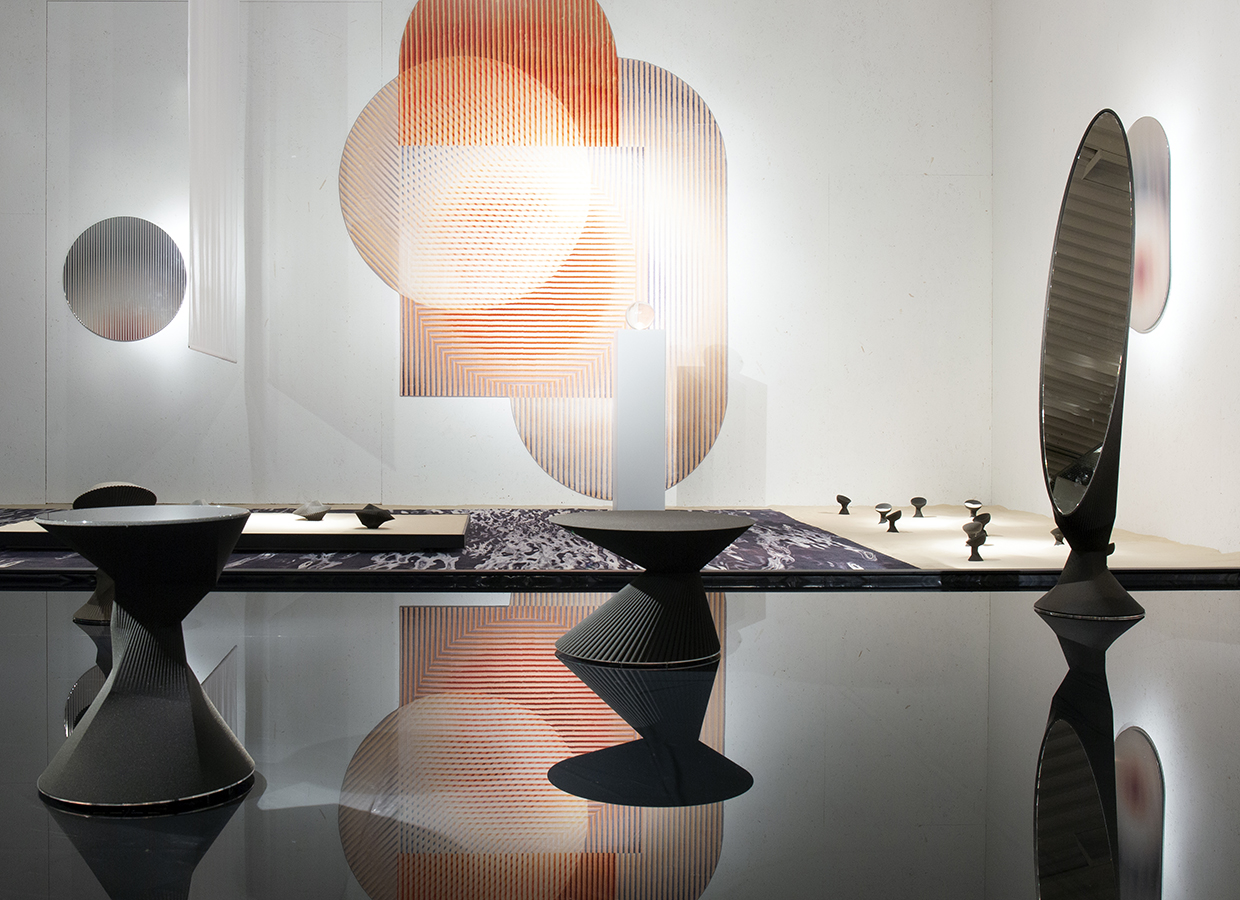
Providing a moment of pause, tranquil reflections on nature were translated into interior products at the Rive Roshan solo show this year. Hosted by Galerie KRL, two new carpet designs for Mooi were launched; one translated the trichroic collection (featured in our DDW report from 2018) into rug form and the other, called Fluid Collection, depicts a realistic, rippling water pattern. An accompanying series of vases, stools, and mirrors with forms inspired by the geometry of movement were 3D printed in black sand. Photography: Alexandra Izeboud
Luuk van Laarhoven
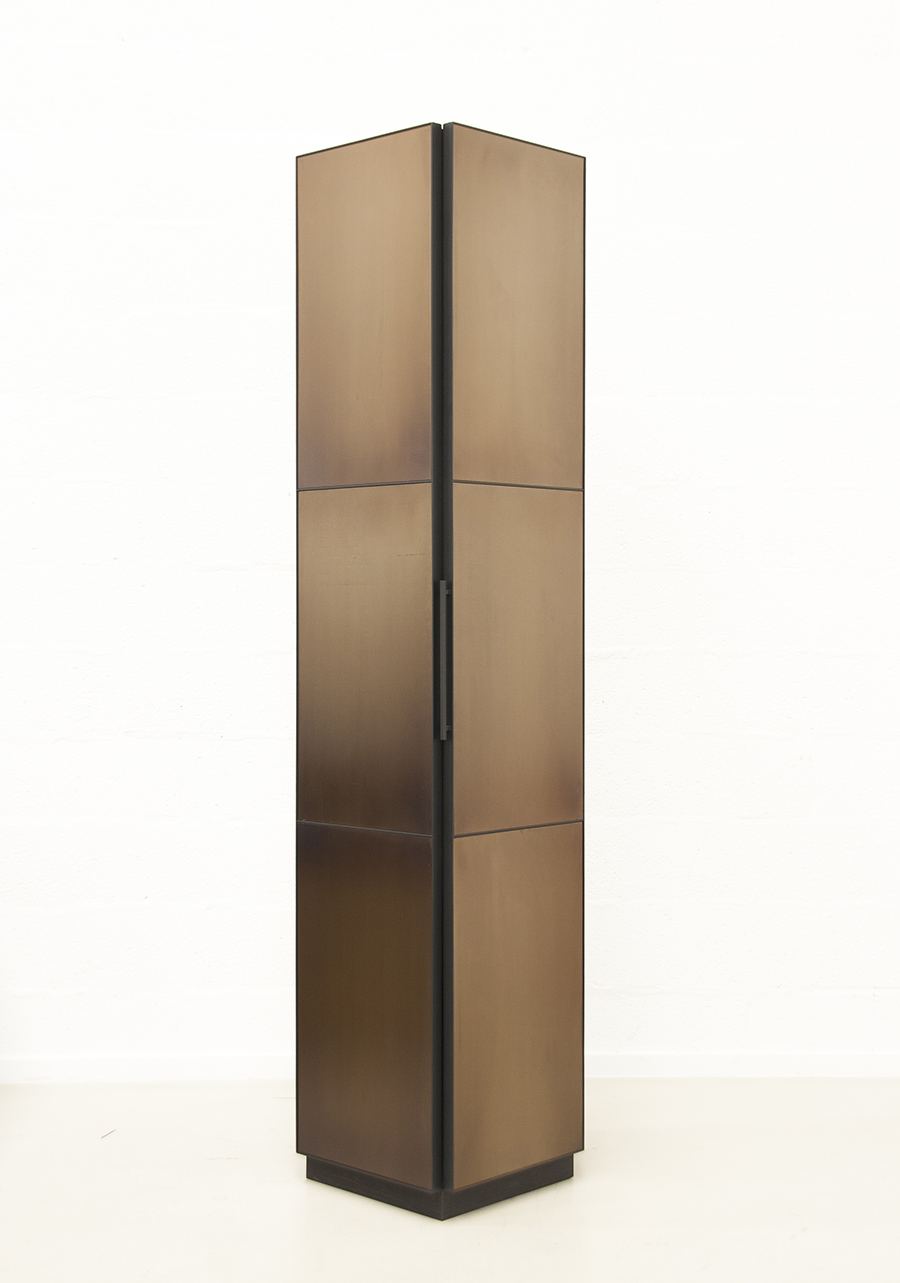
By applying controlled heat to different metals, Luuk van Laarhoven was able to achieve a gradient of colour across vases and furniture, transforming the metal to warmer bronze tones and oily iridescent colours.
Ztista by Faina
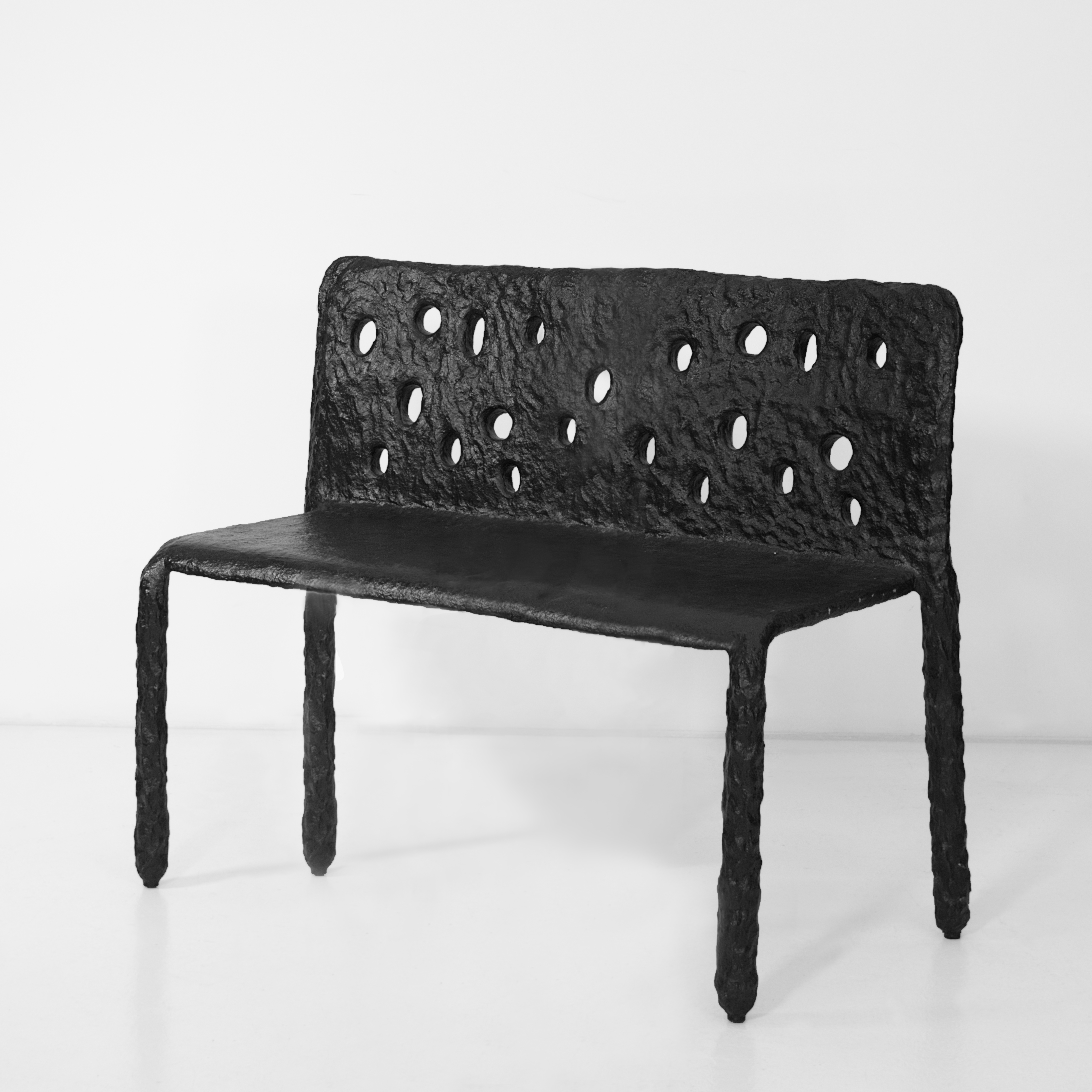
Ztista, which means ‘made of dough’ in Ukranian, is the new collection designed by Victoria Yakusha for Faina. The furniture is made using a 300-year-old craft technique called ‘valkuvannia’, whereby a cob-like material is applied to a structure. Yakusha’s modern version uses recycled steel is used for the armature, which is coated by hand with a mulch of recycled paper, clay, linen, wood chips and straw. A corn-starch-based biopolymer is used to bind the material and make it suitable for use both indoors and outdoors.
